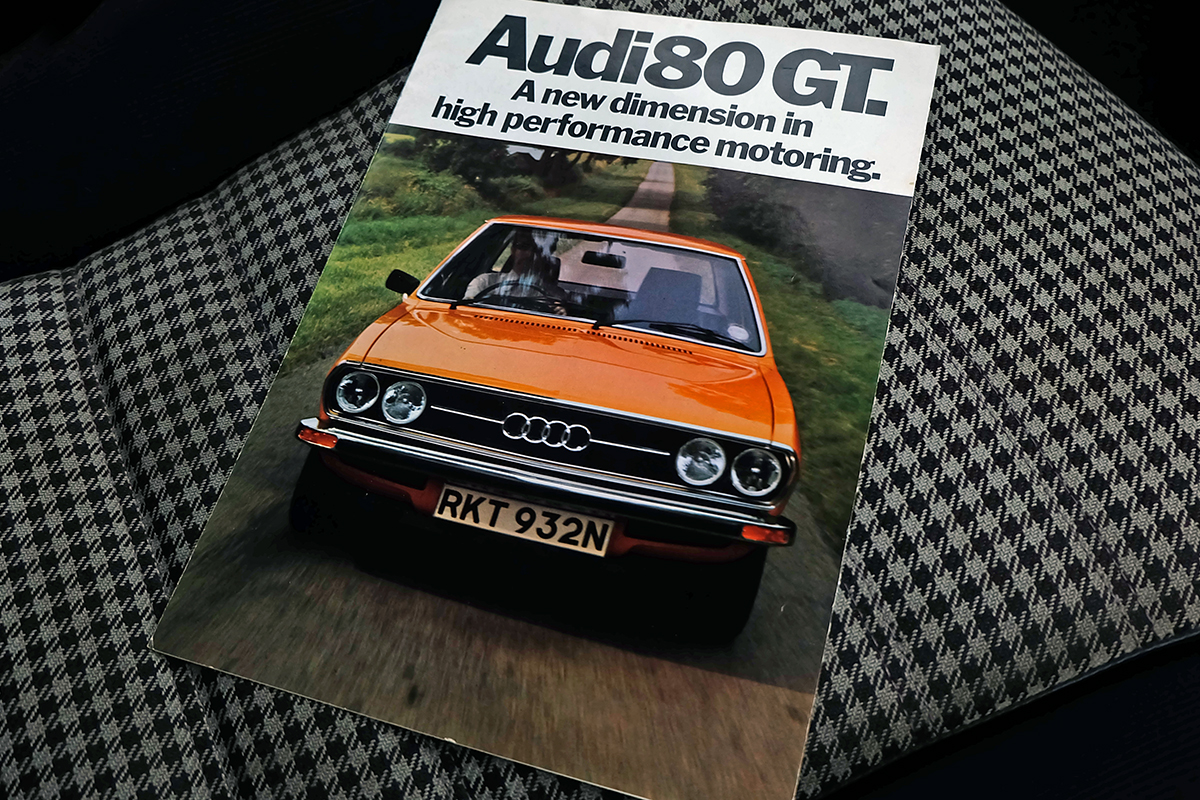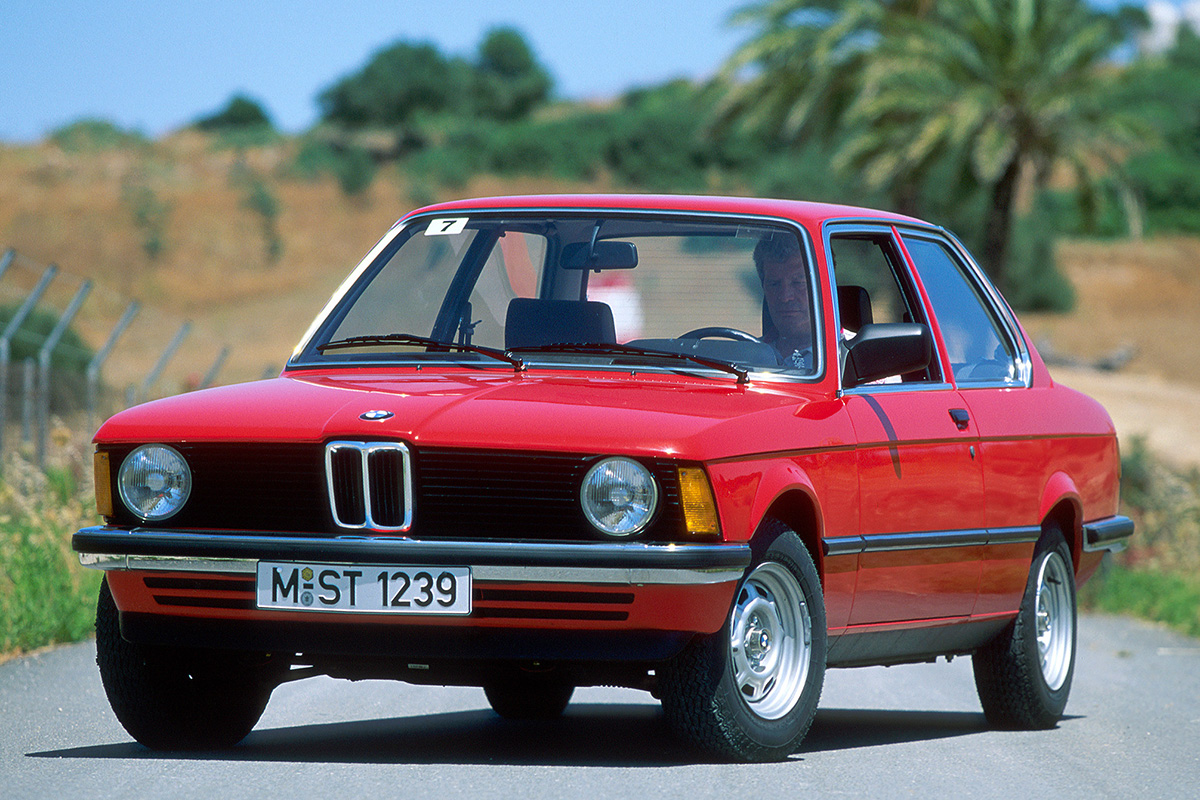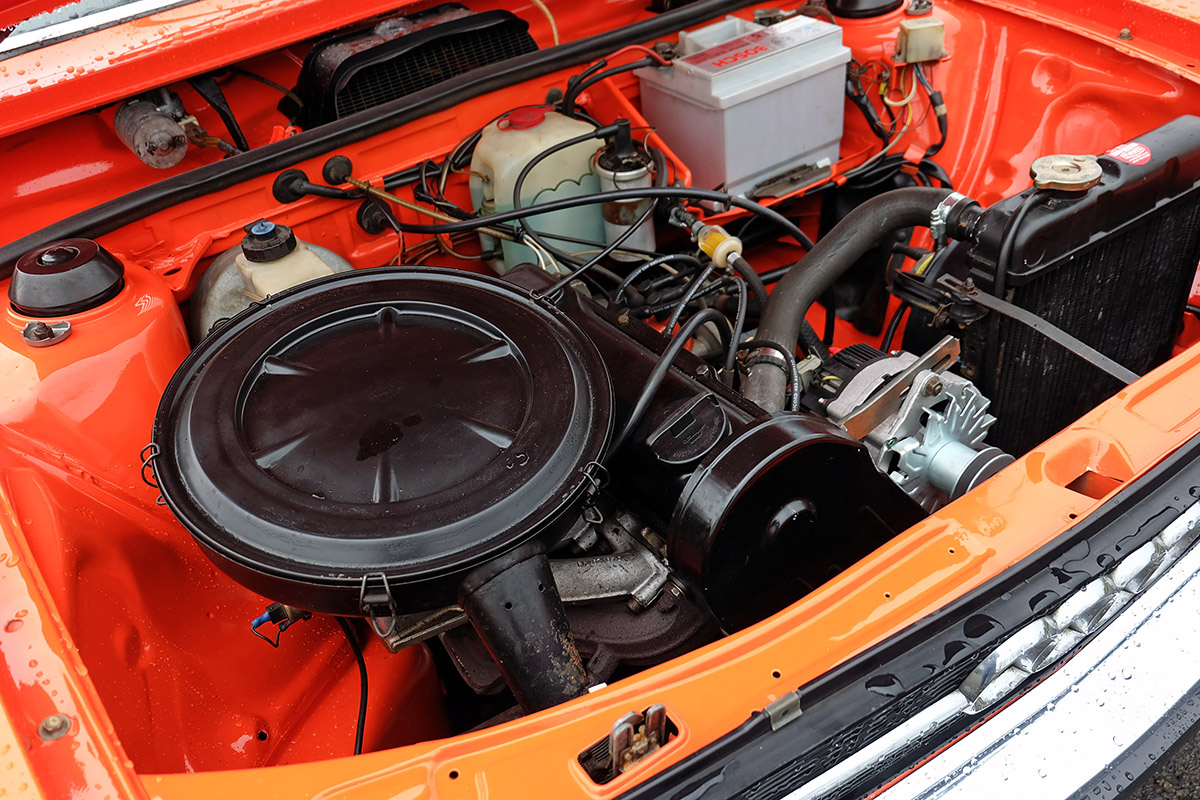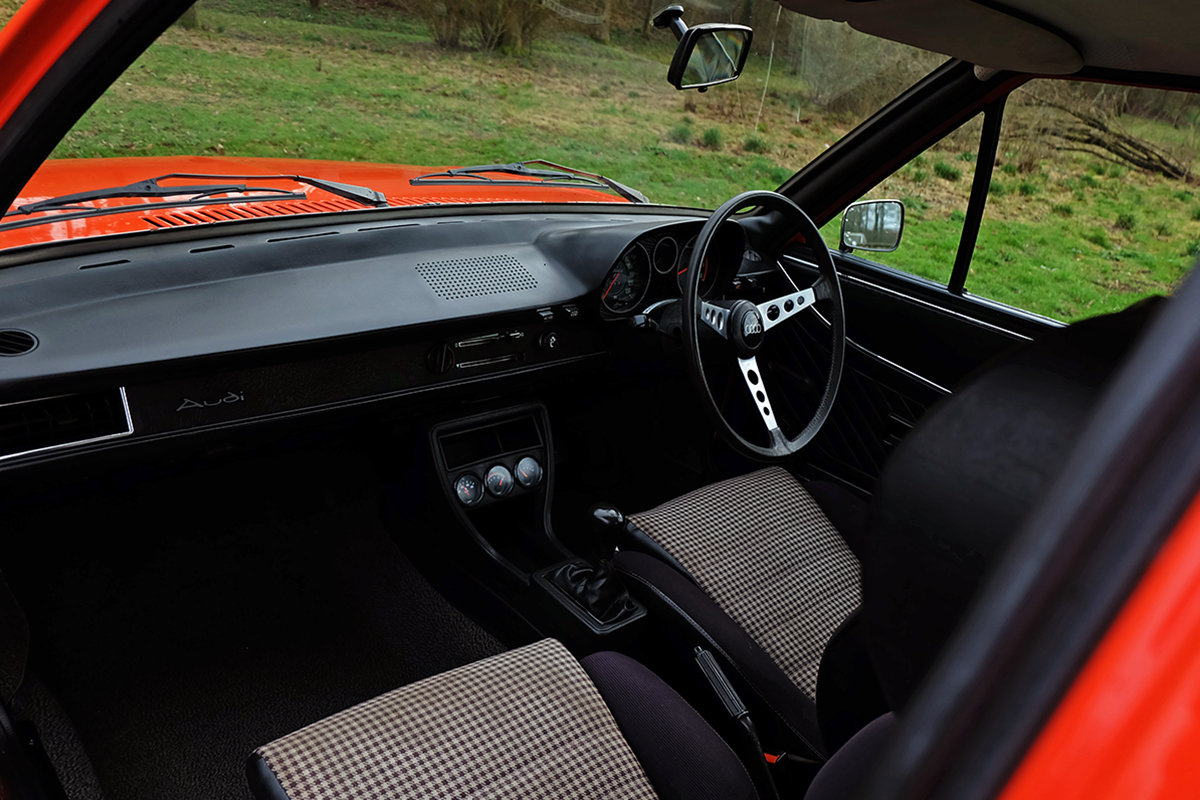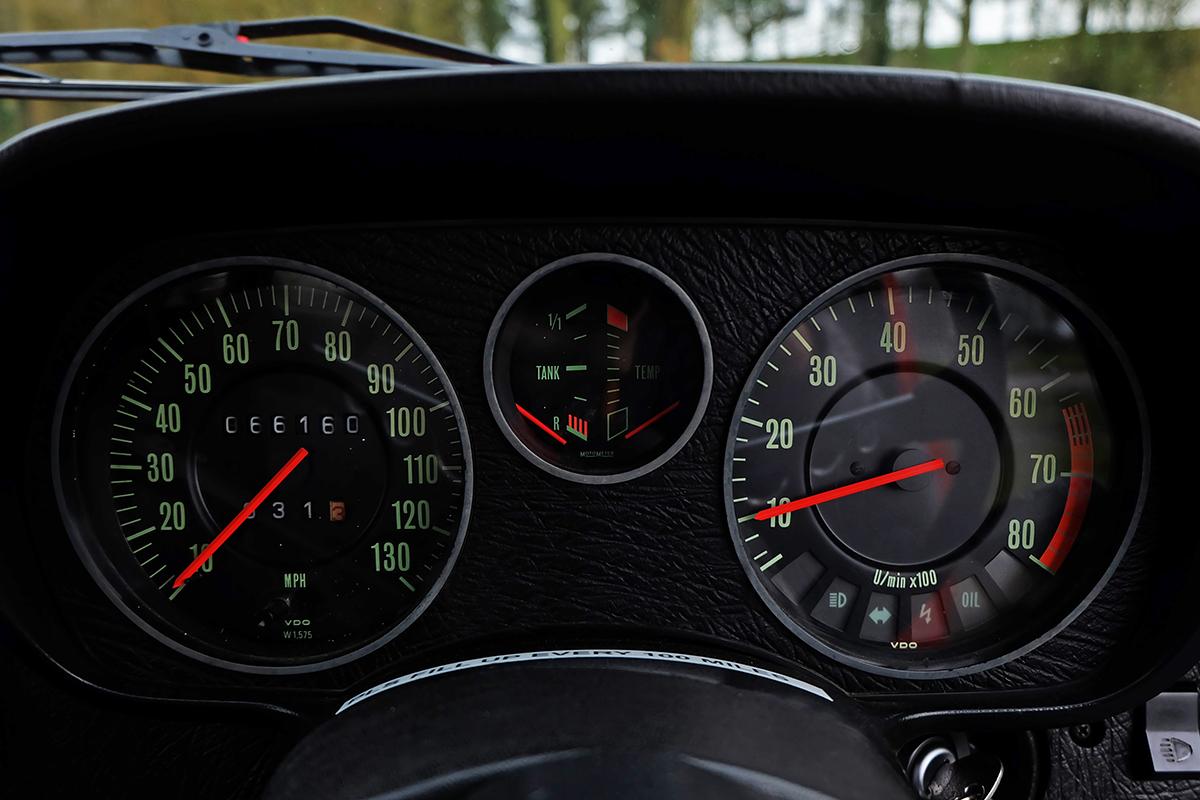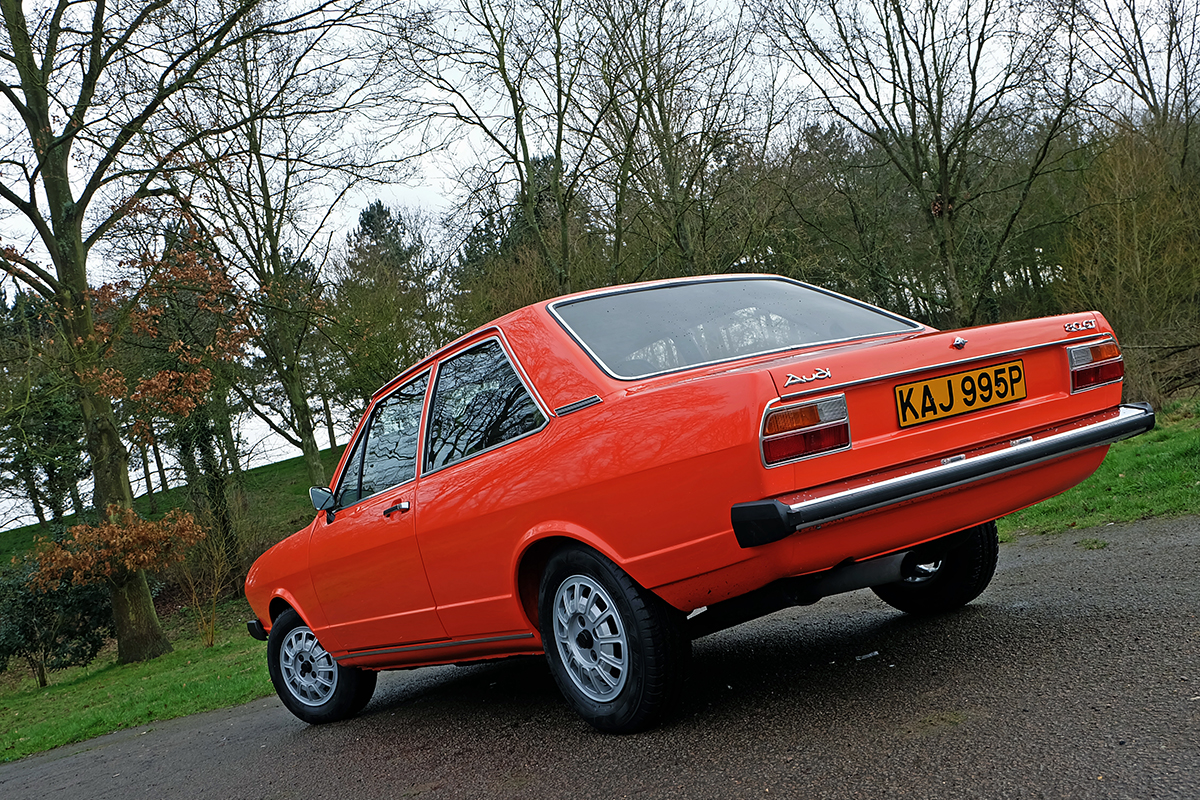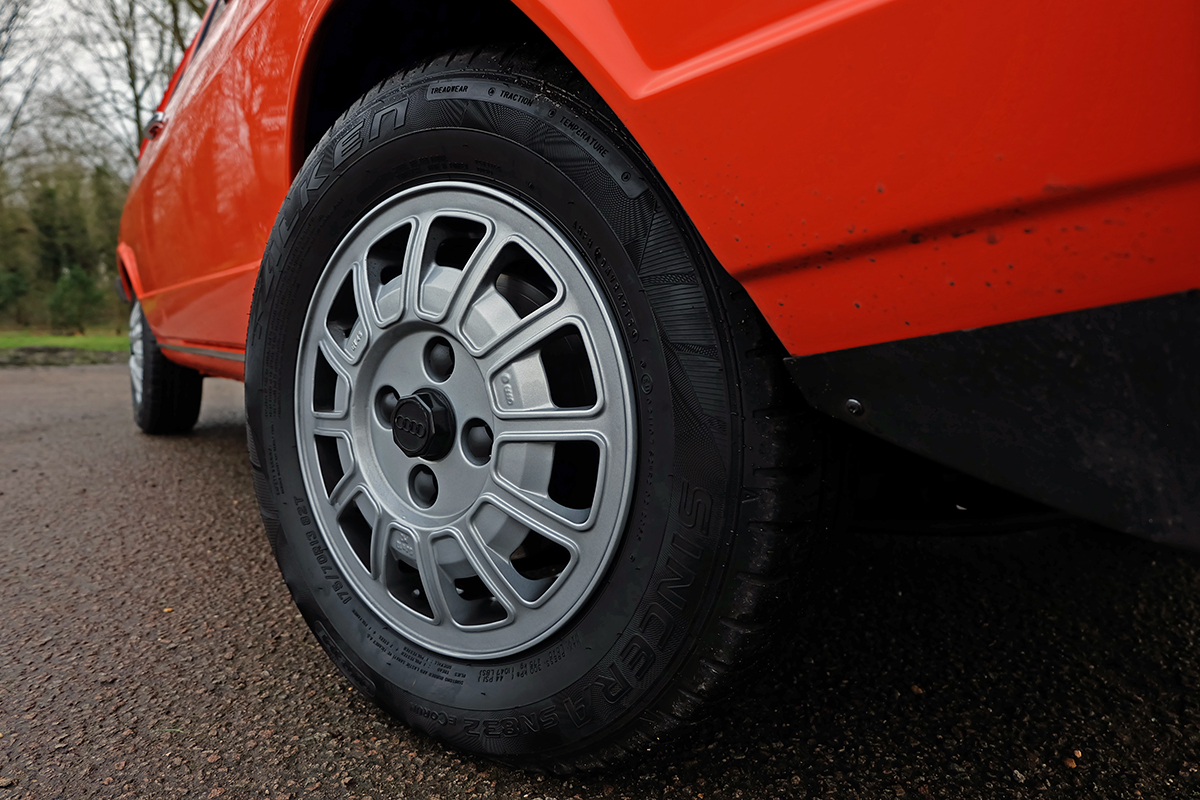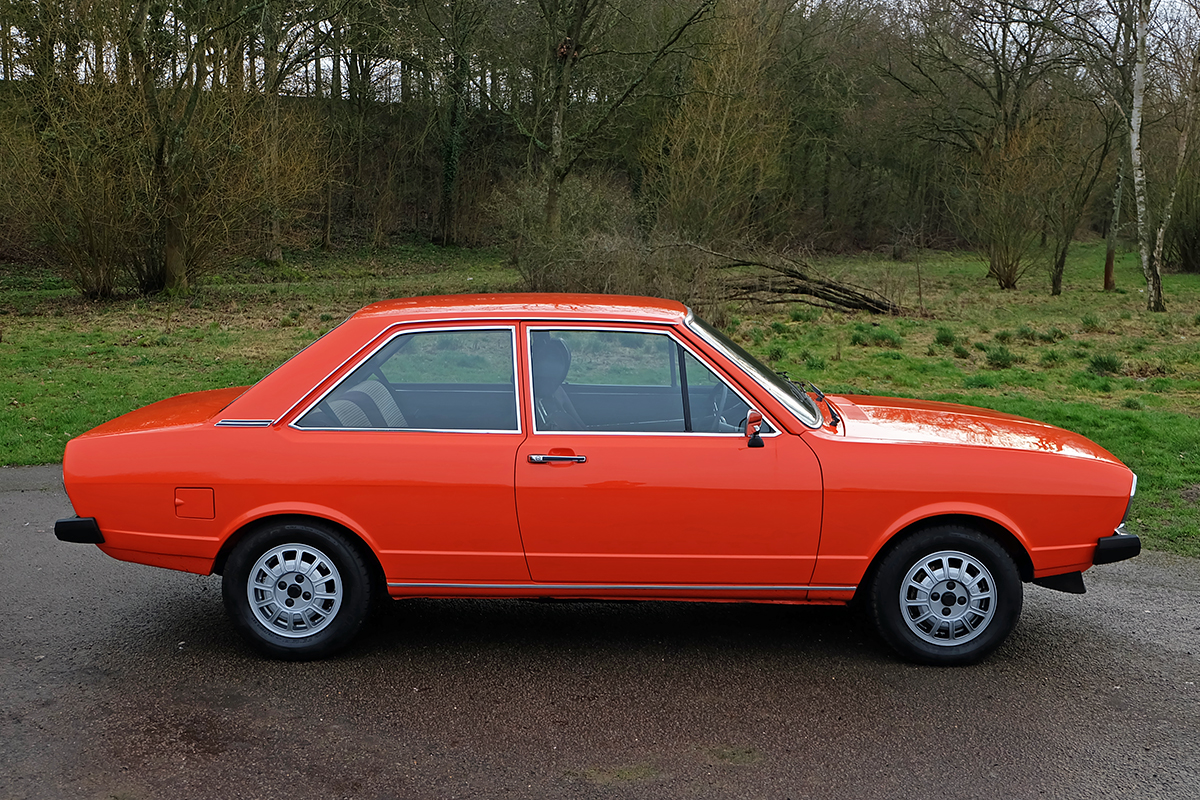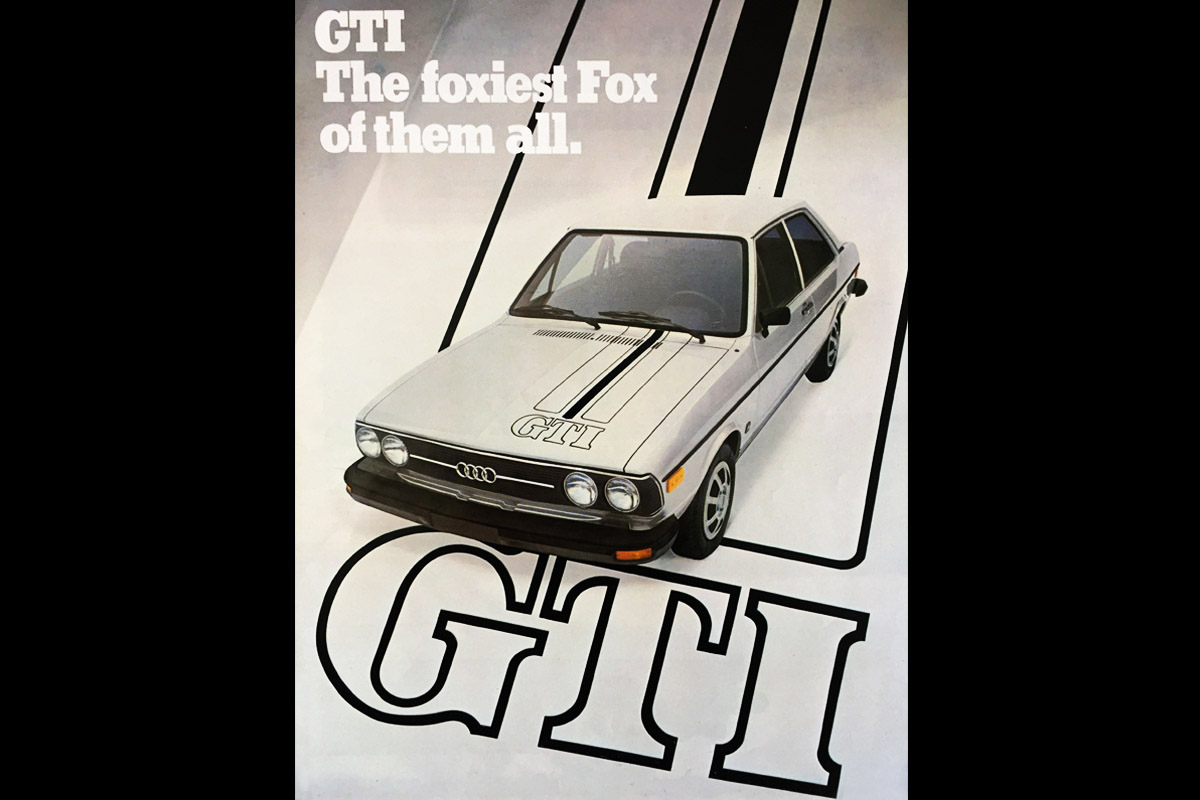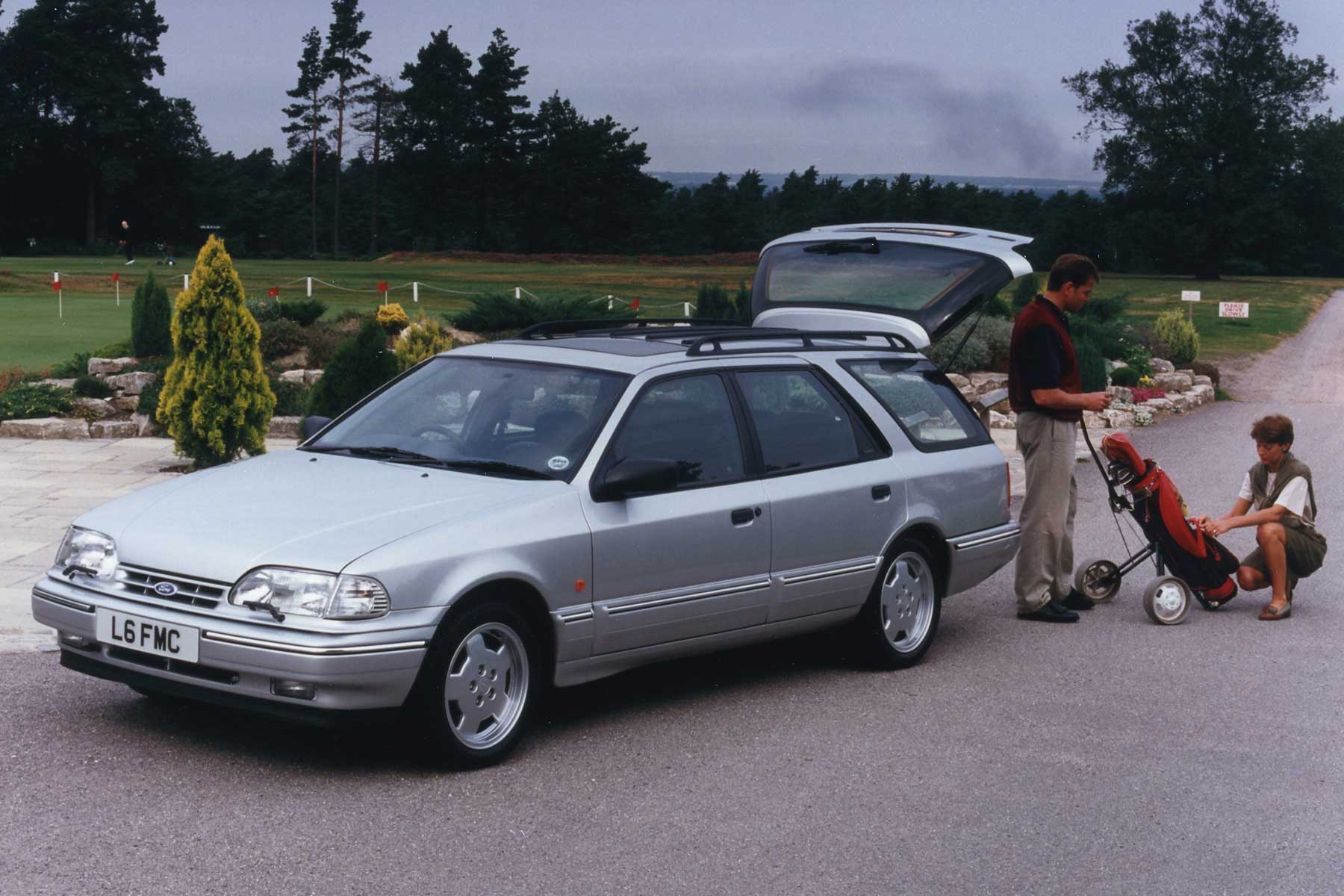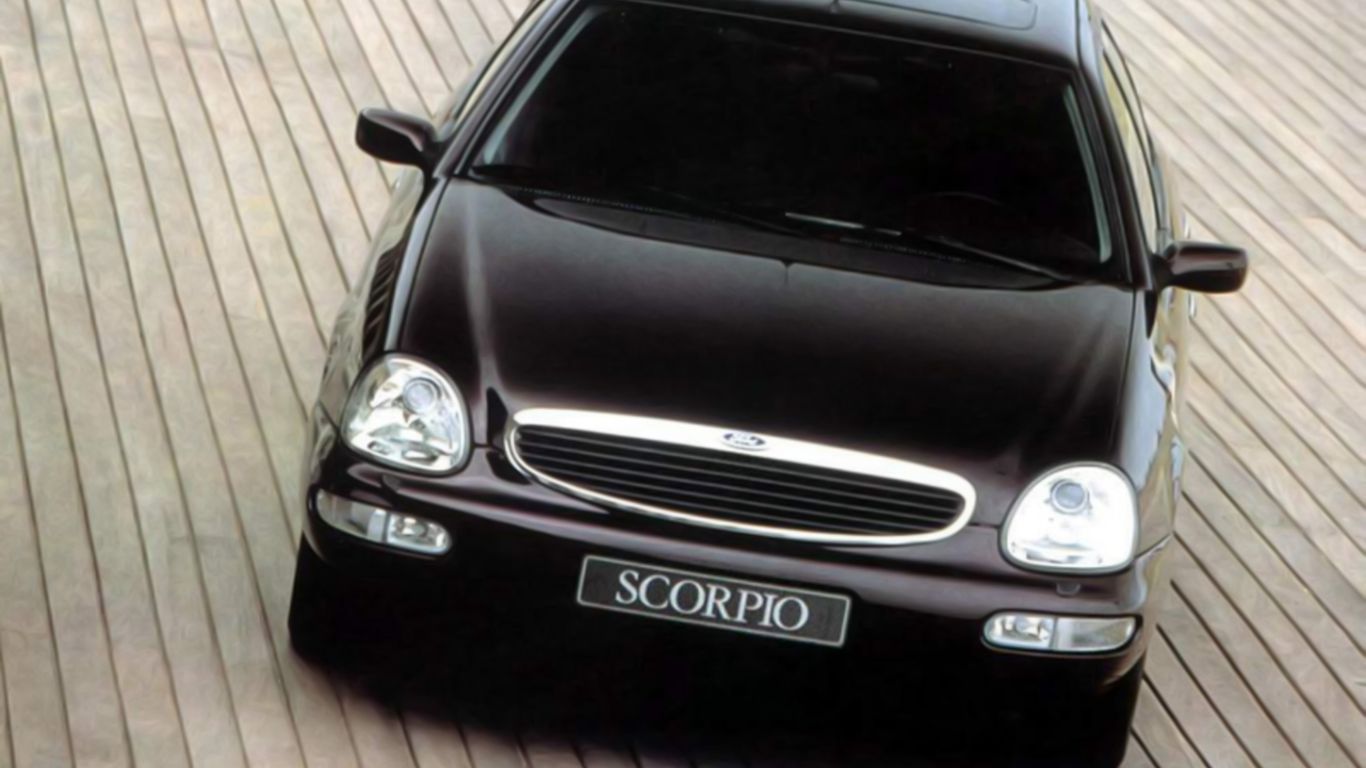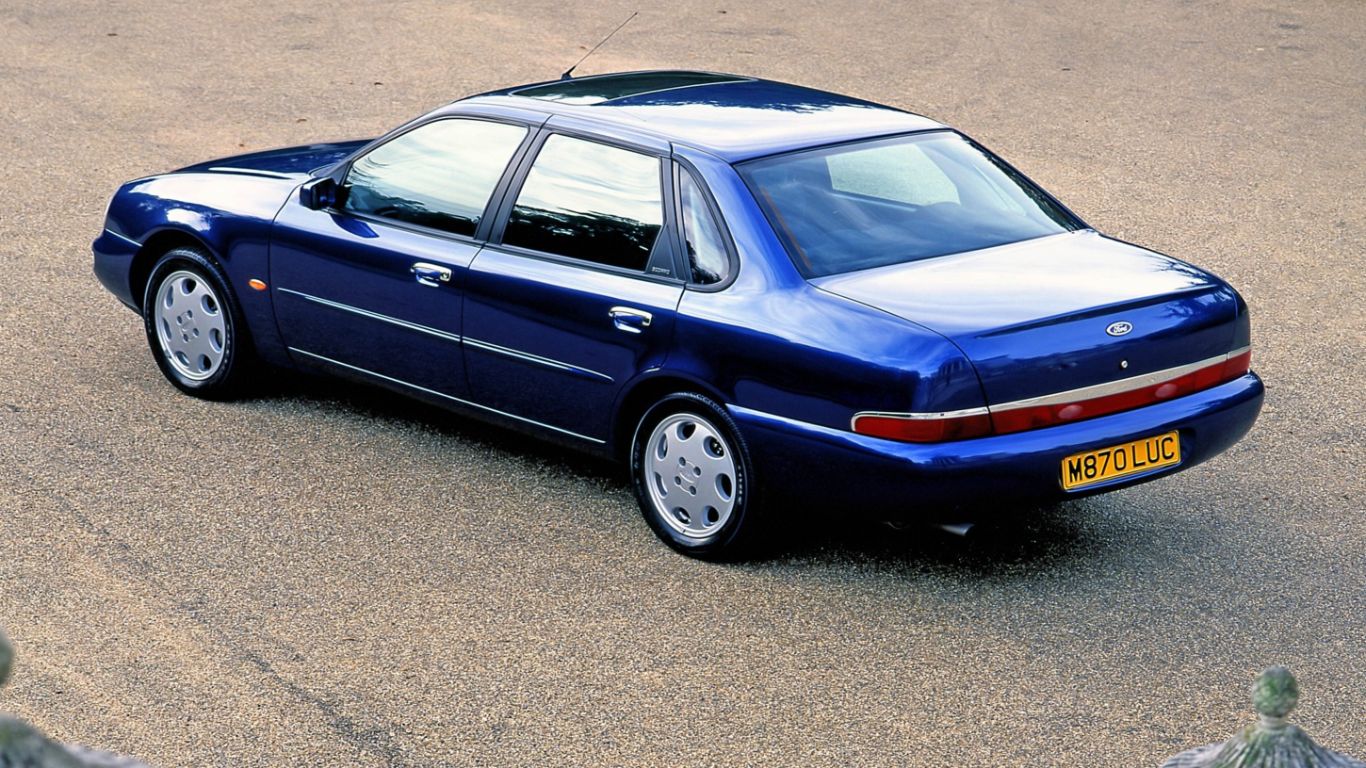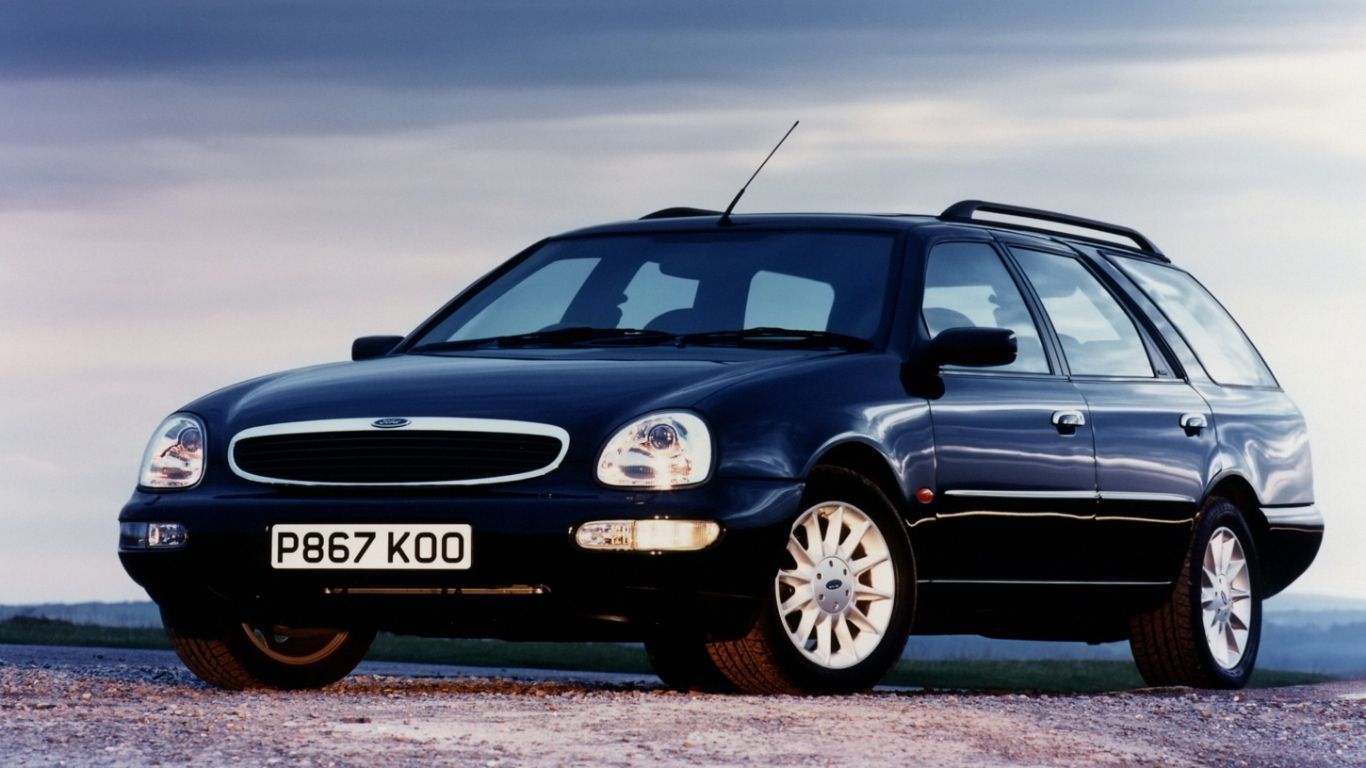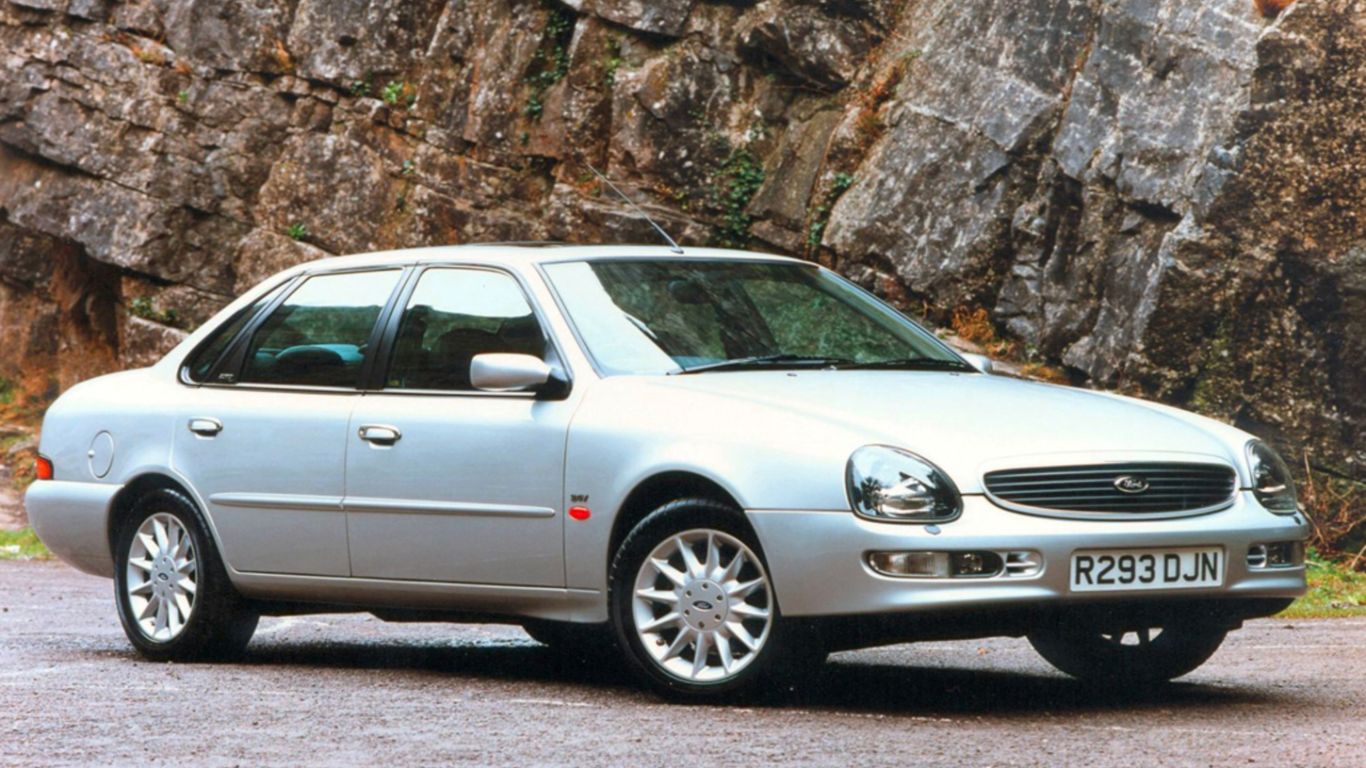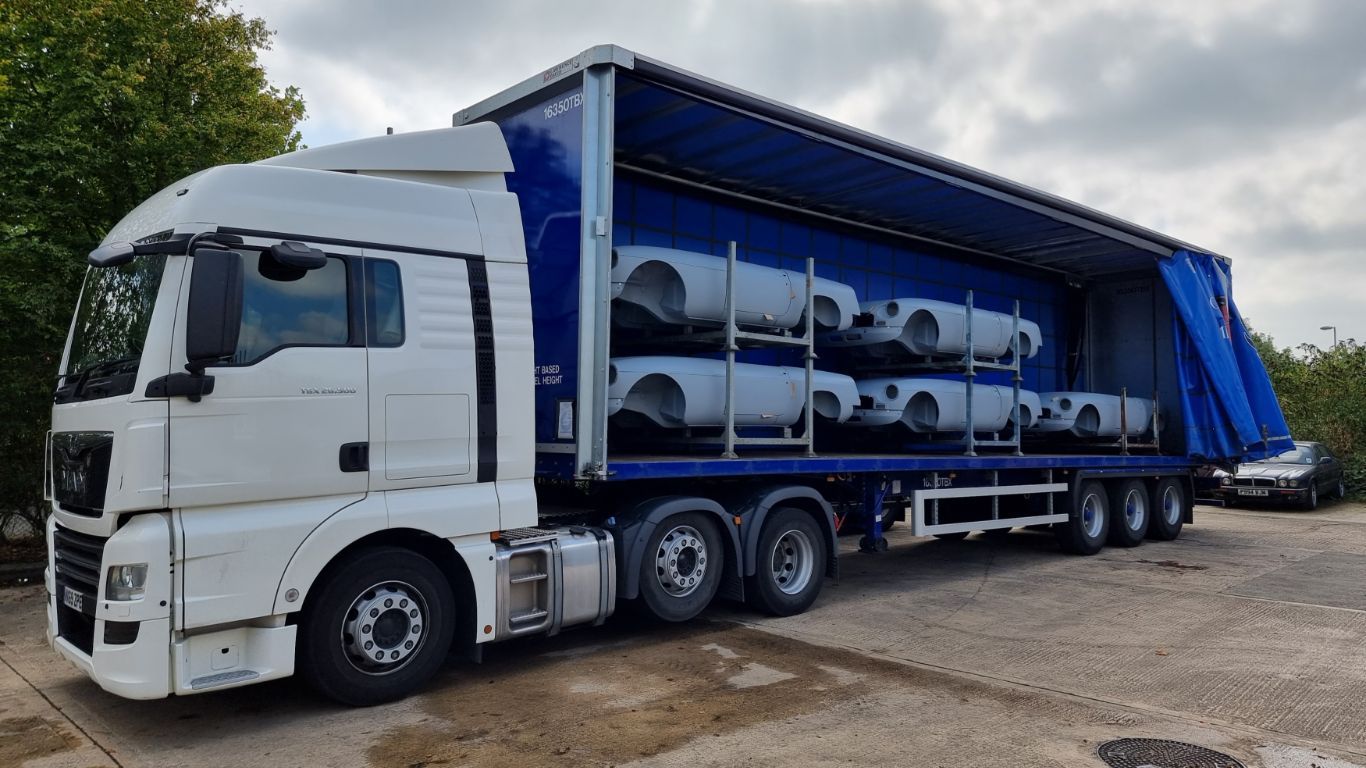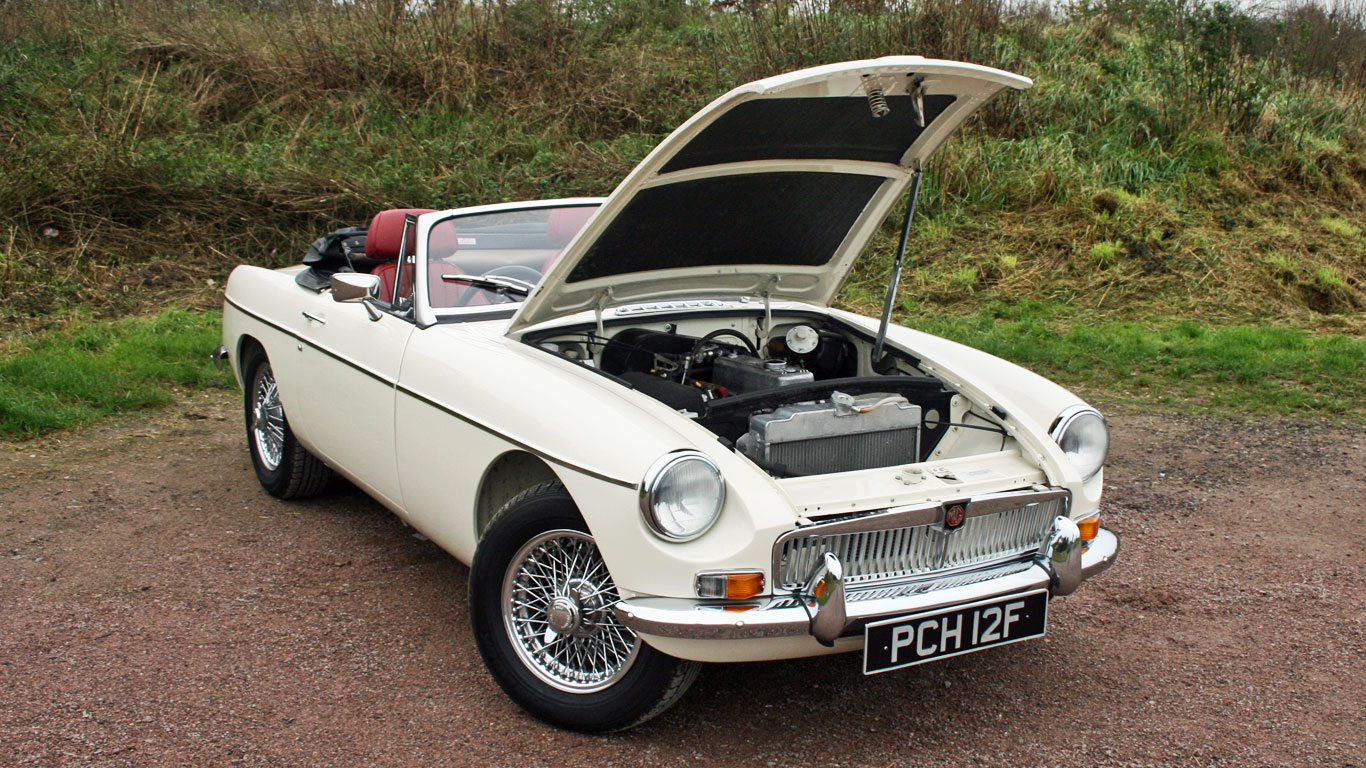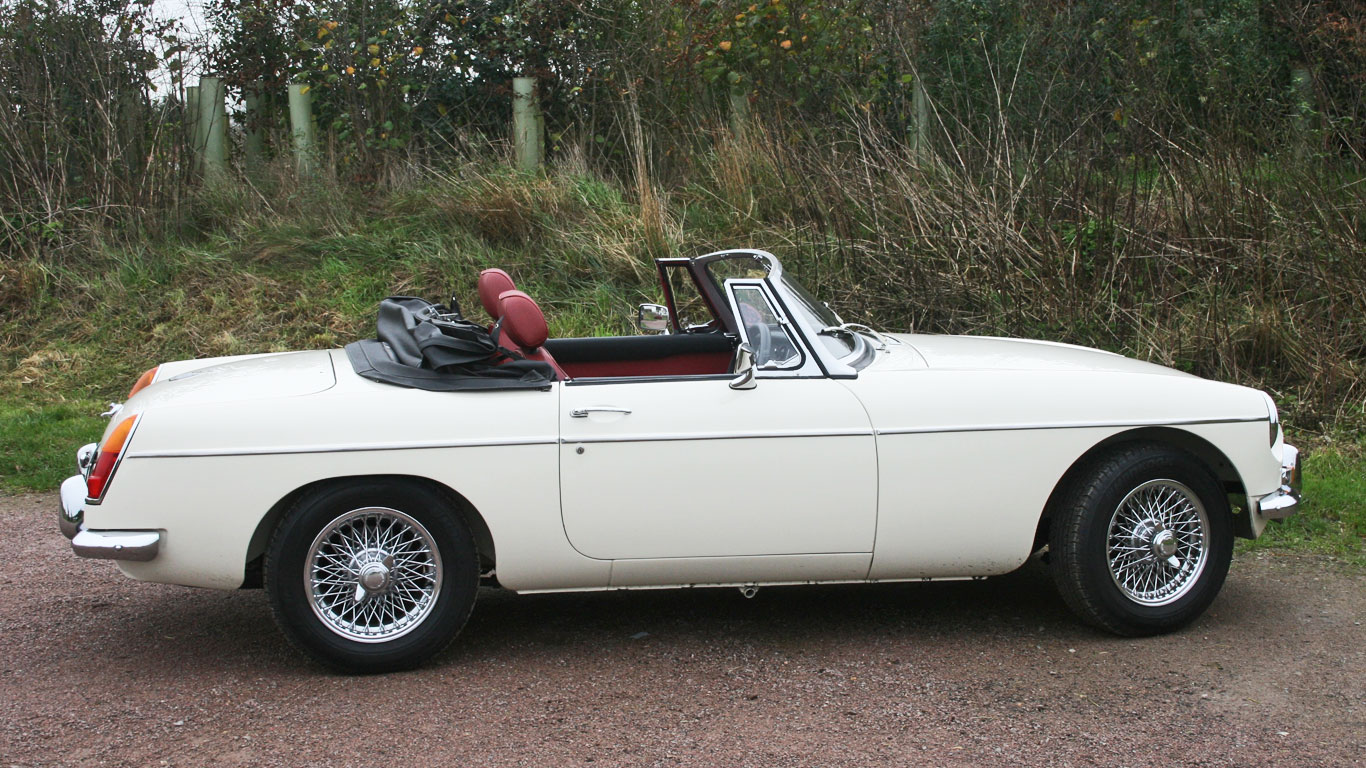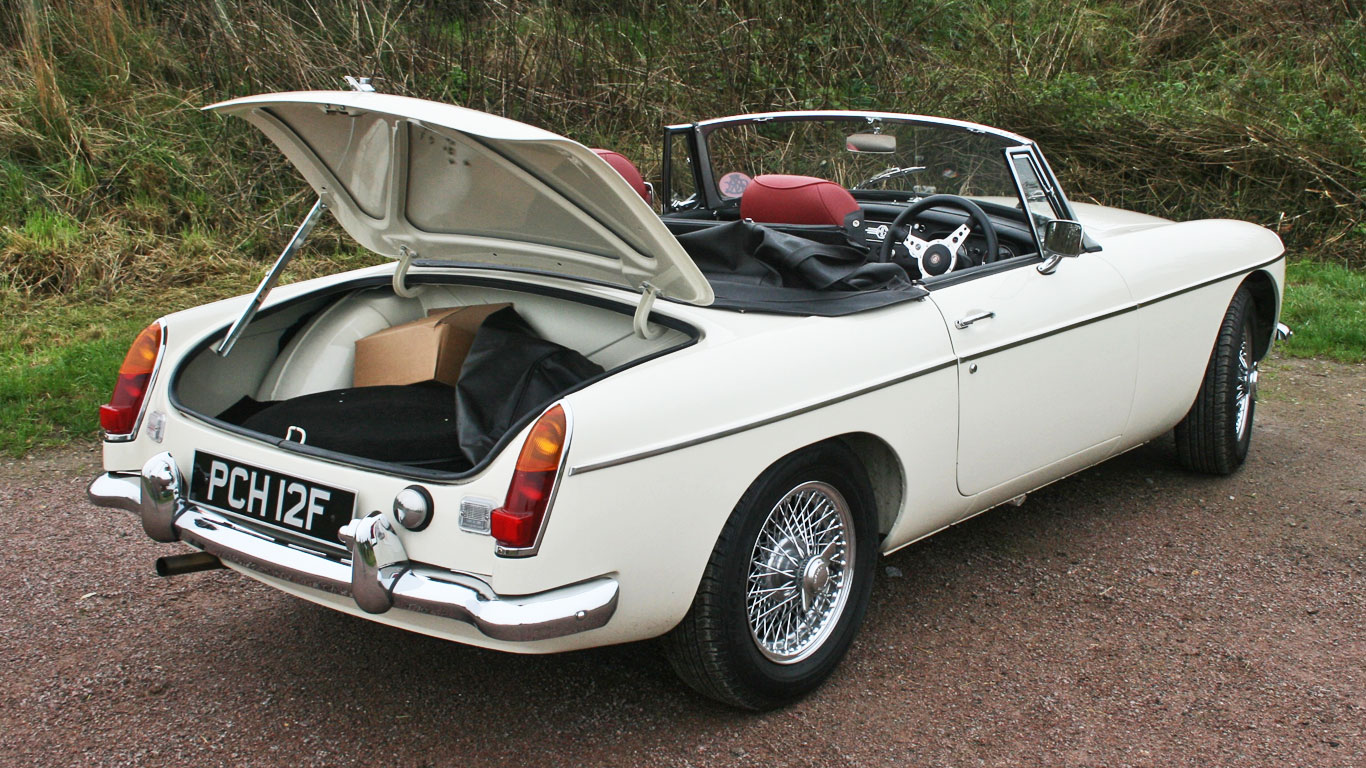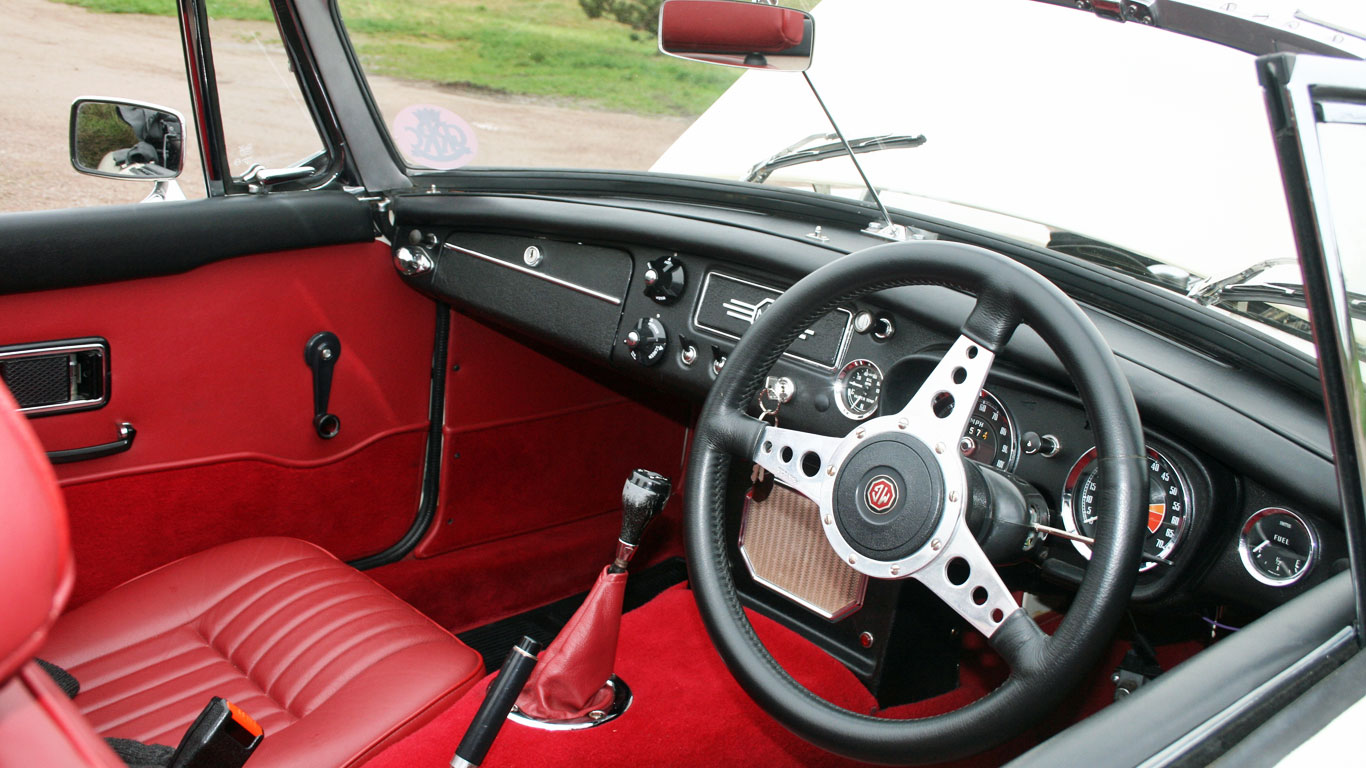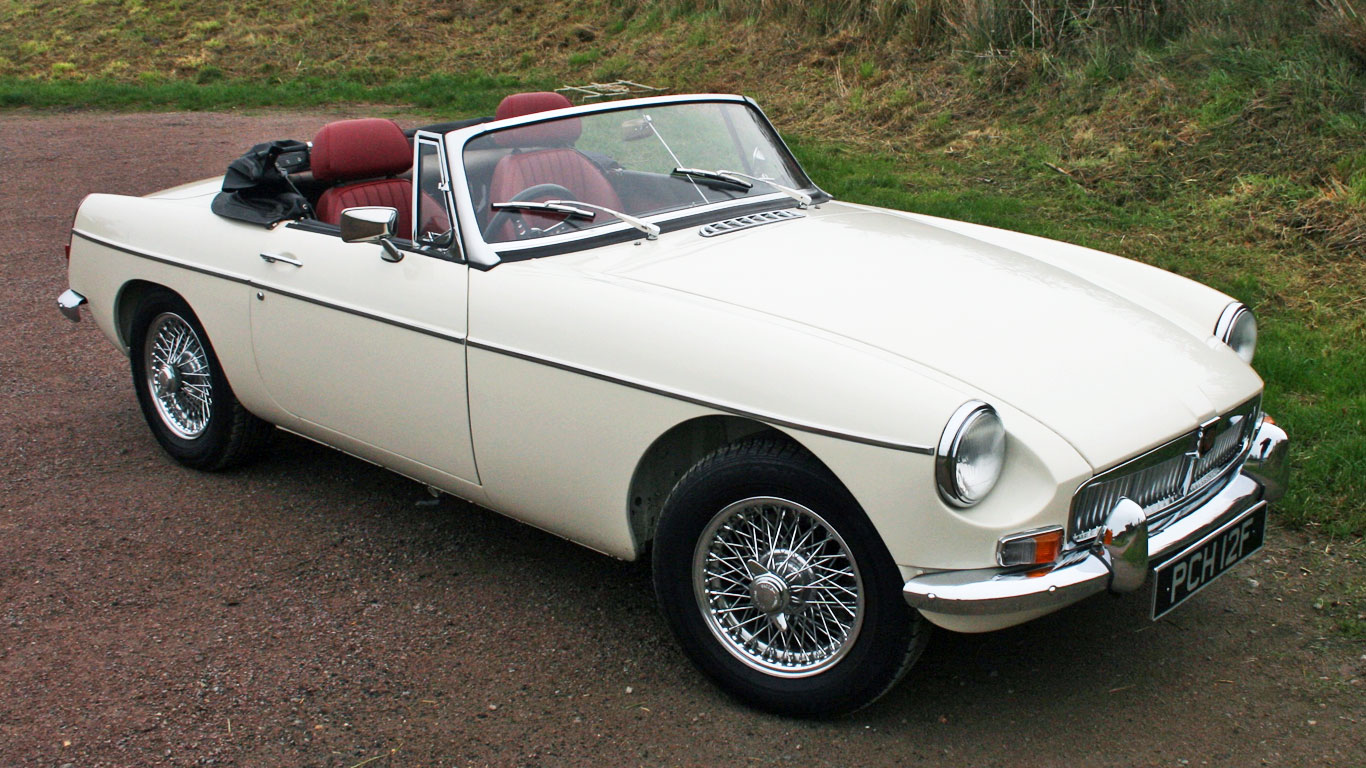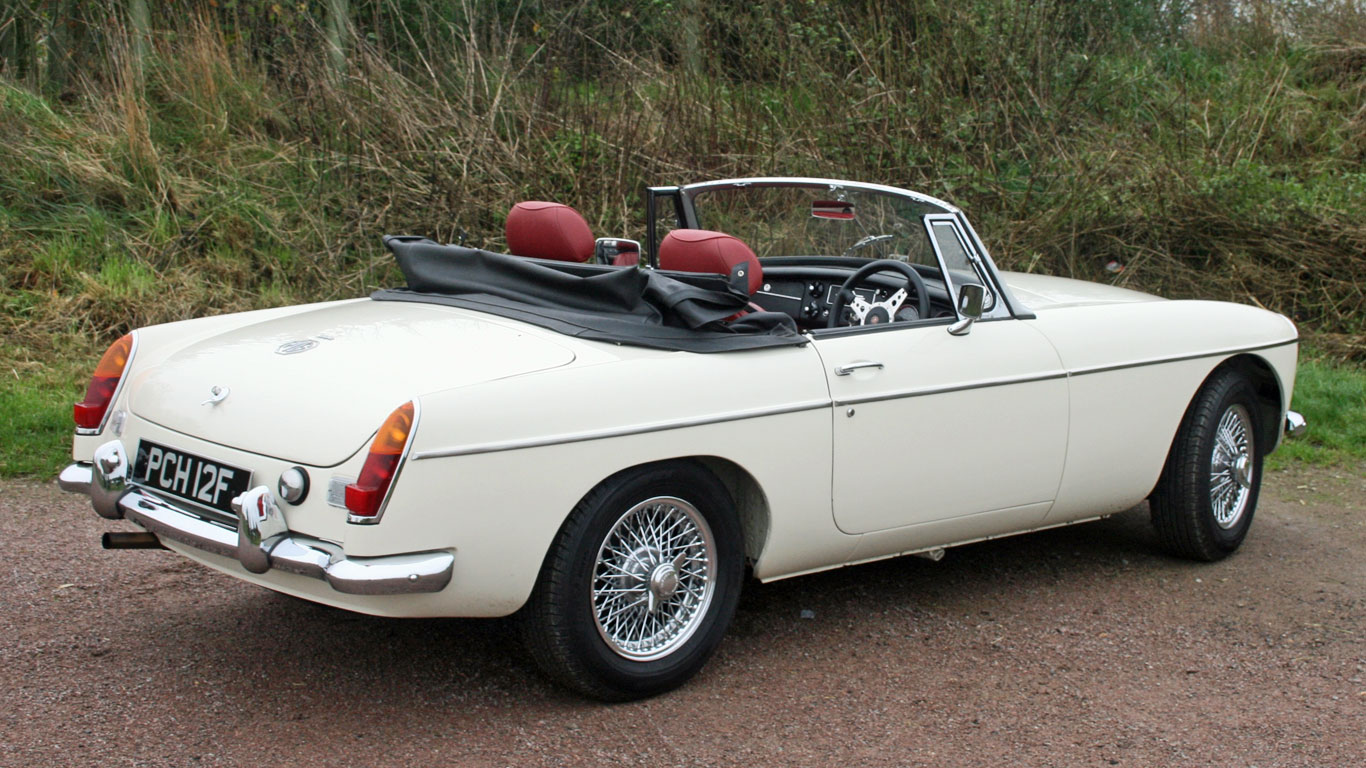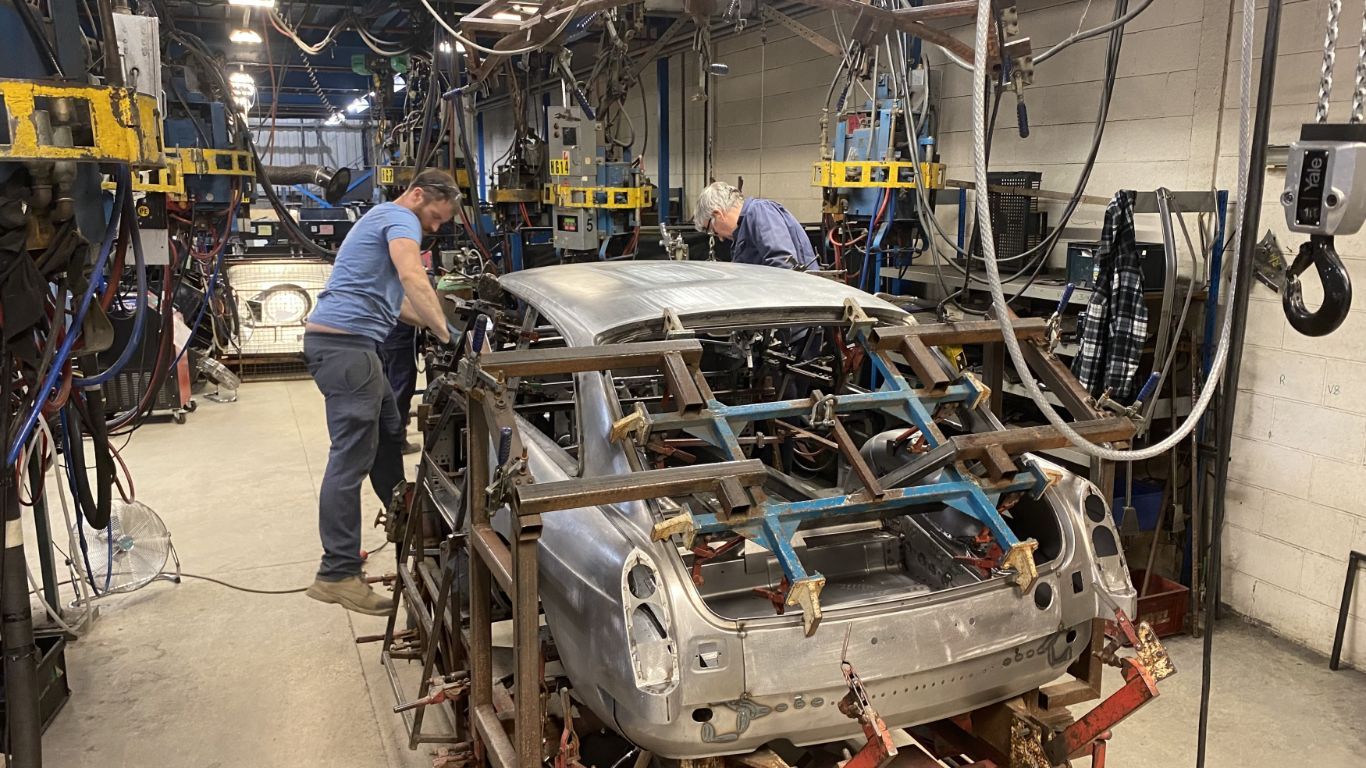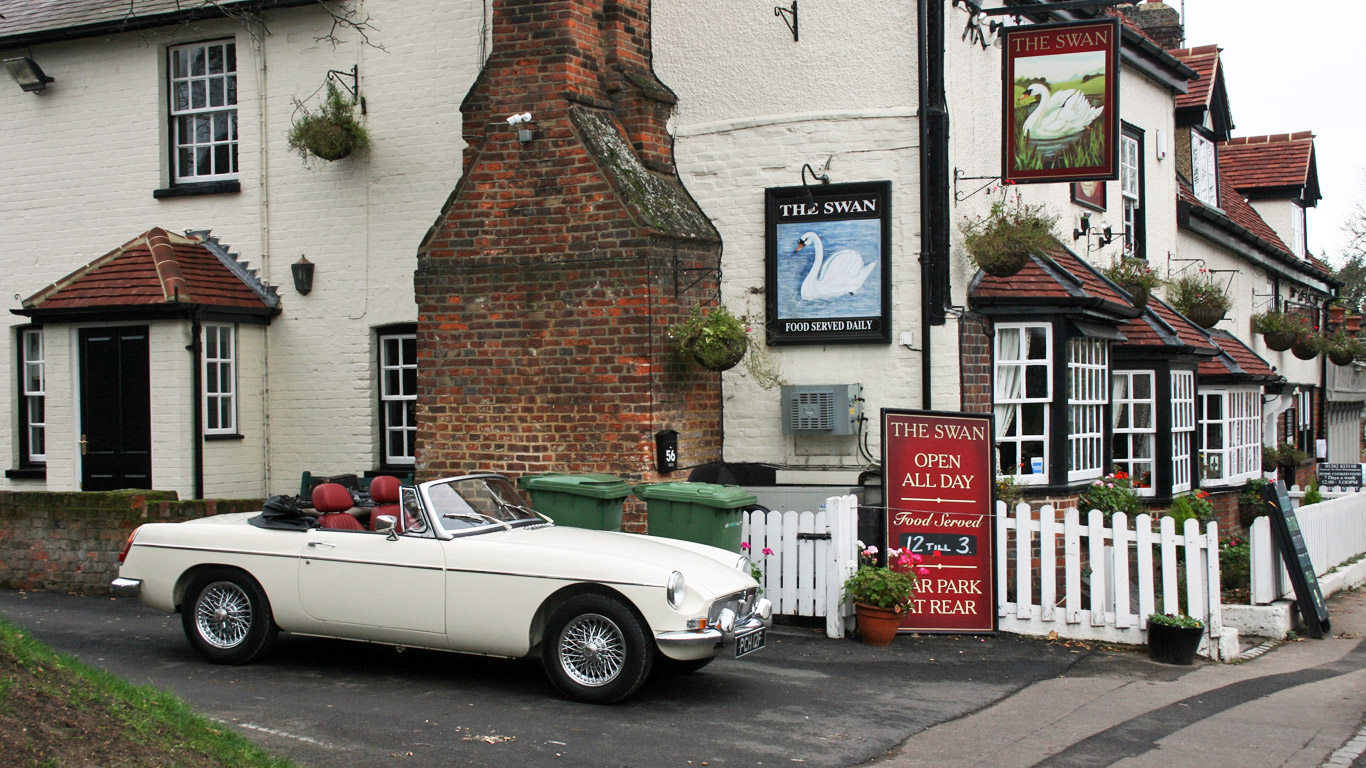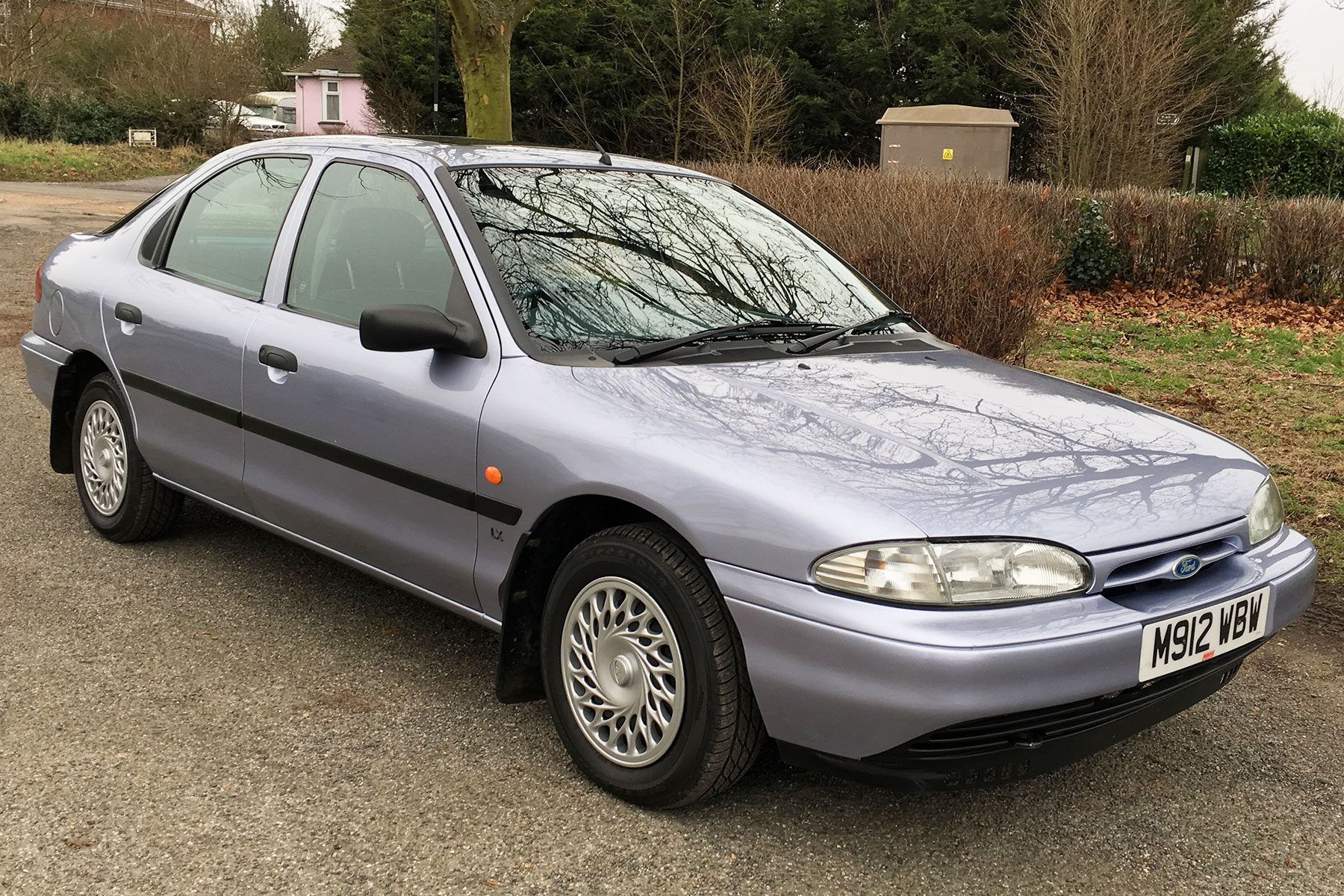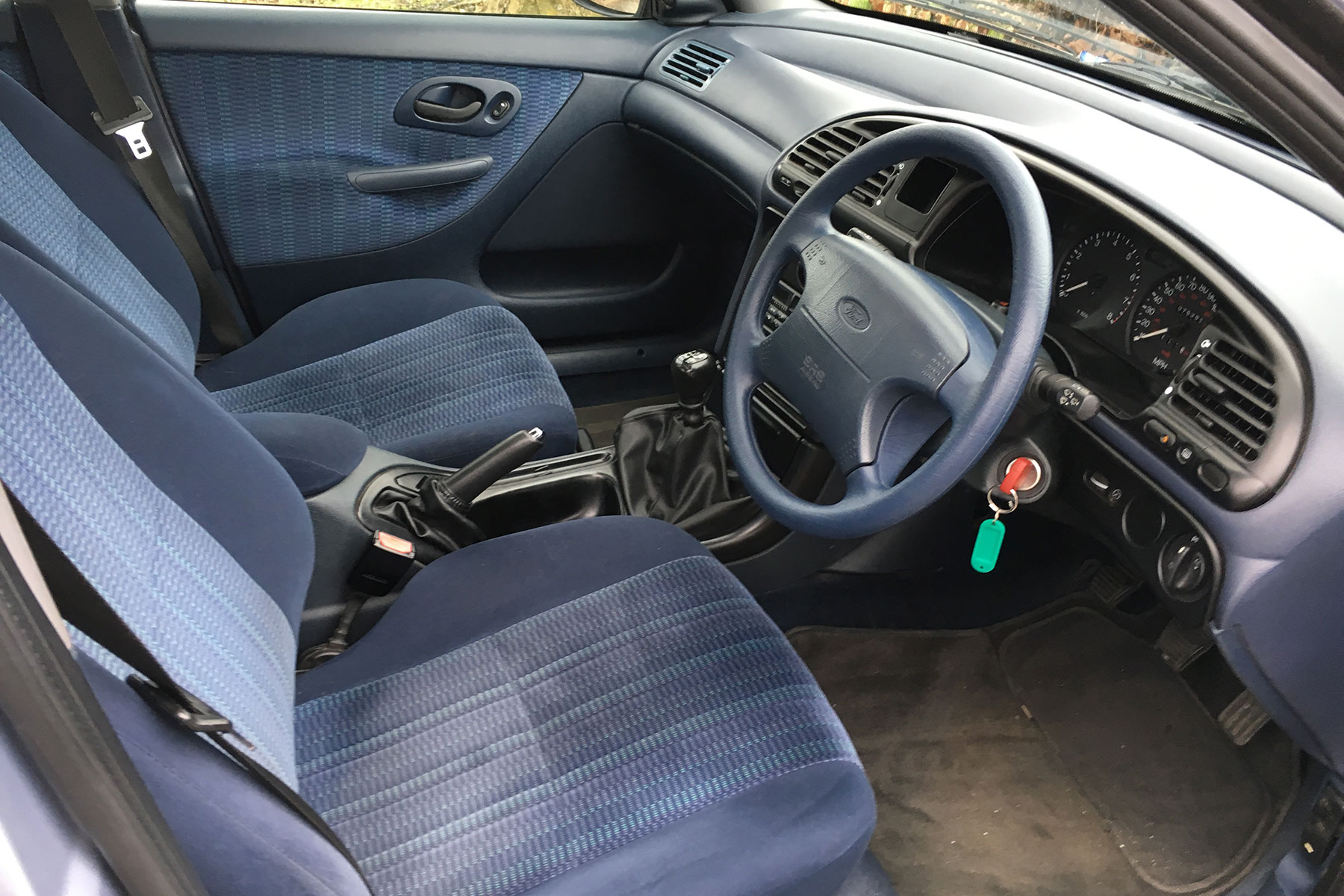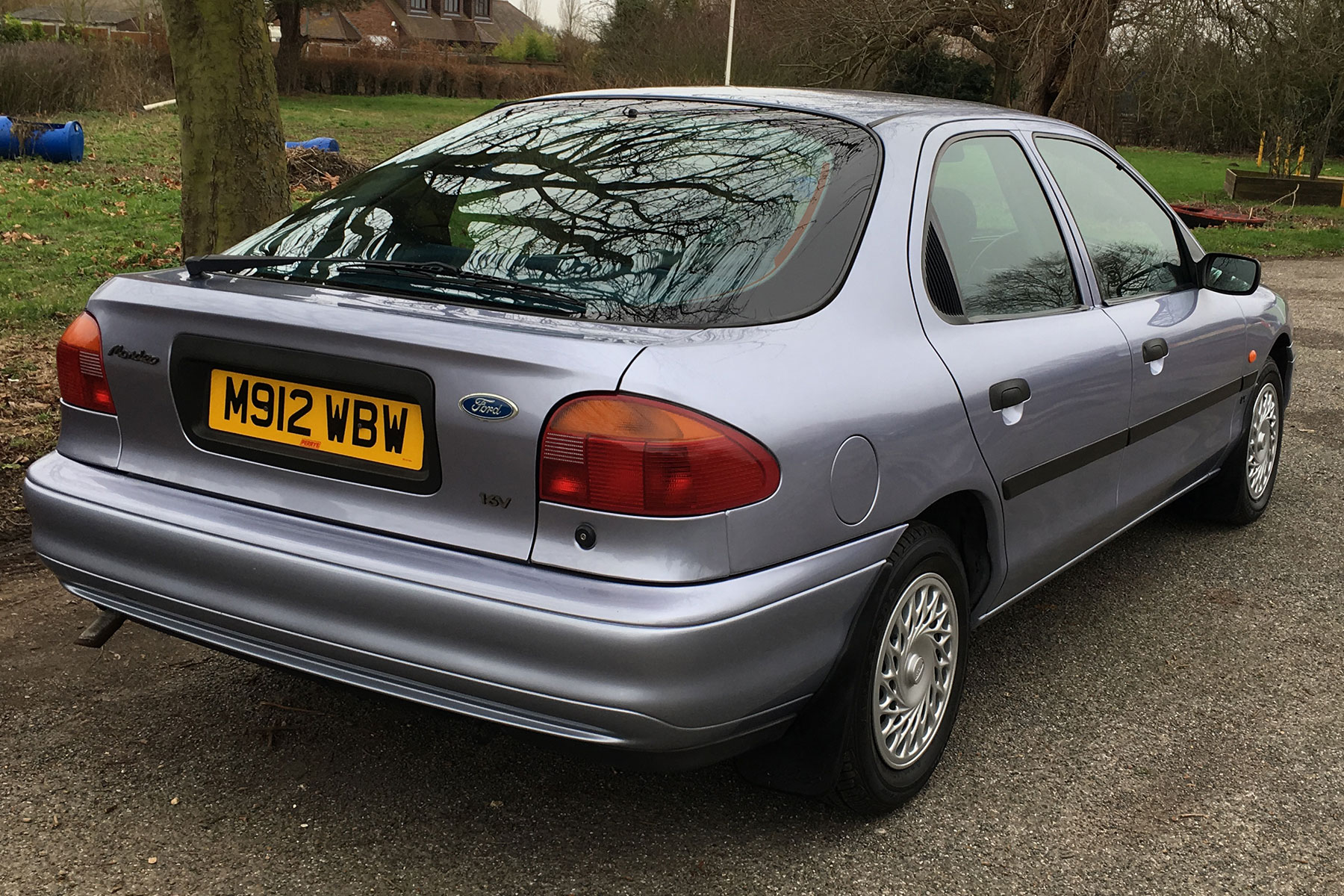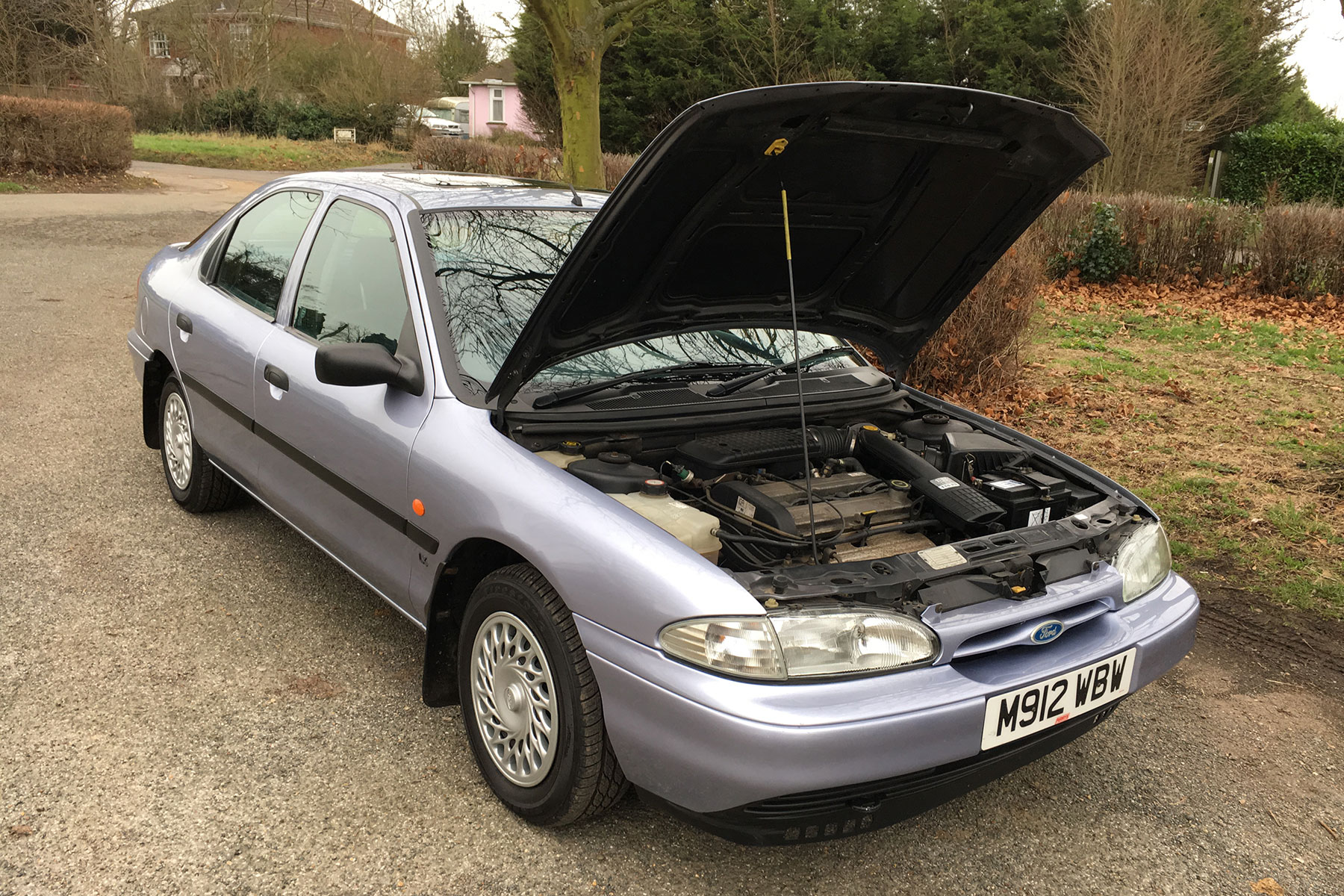I was eight years old when the original Audi Quattro first rolled out of a showroom – a mere slip of a lad, gazing at the world from the back of my father’s 1975 Citroen GS. To me, the Quattro was otherworldly, a vision of the future that somehow sat far beyond the rest of the Audi range.
This four-wheel-drive performance car didn’t come cheap. In 1983, any wannabe Walter Röhrl or Hannu Mikkola was asked to part with more than £17,000 for the privilege of driving Audi’s rally car for the road. For context, that was more than twice the price of the Audi Coupe GT, about £7,000 more than a Saab 99 Turbo and £3,000 more than a Porsche 944 Lux.
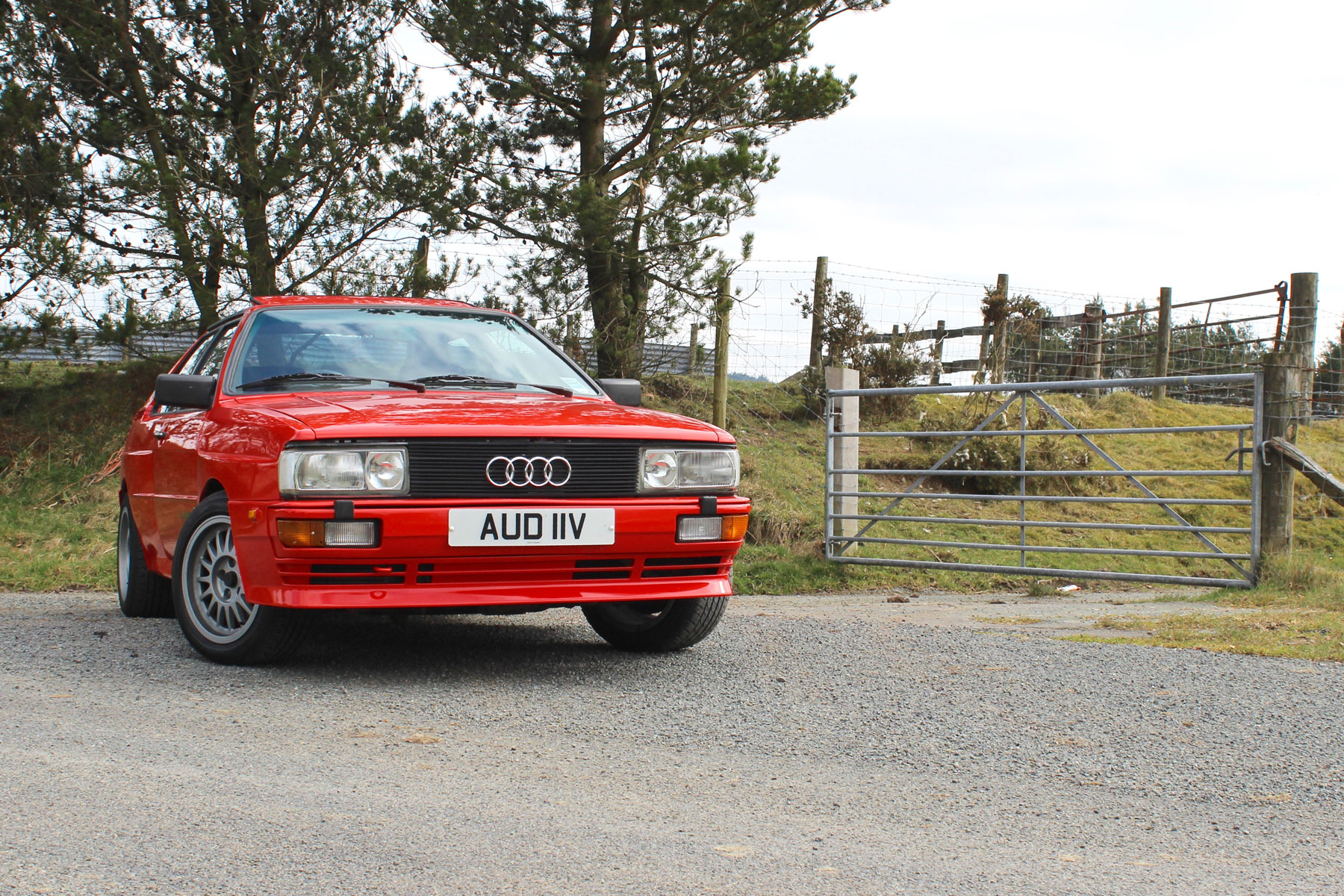
Yet this trailblazer had it all: turbocharging when it was still a novelty, four-wheel drive when it was still associated purely with military and agricultural vehicles, and a rally pedigree to beat all others.
Fast-forward more than three decades and I finally got my chance to drive one, courtesy of Great Escape Cars in Redditch.
What are its rivals?
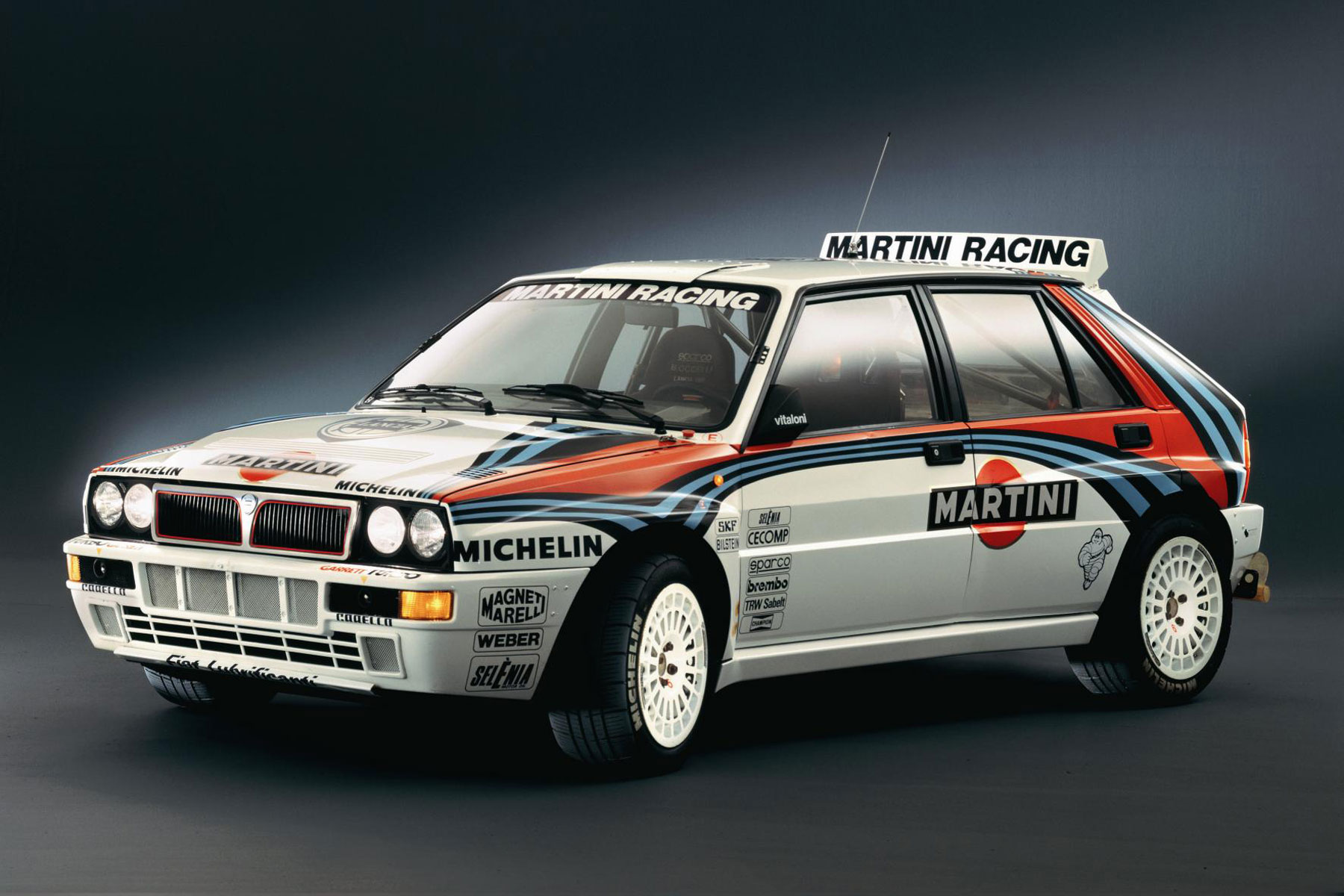
This depends on when you ask the question. Back in the early 1980s, the Quattro’s performance earned it the right to be considered alongside the likes of the Porsche 944 Turbo and Lotus Esprit. Judged as a family car, it was almost without peers.
Today, the ur-Quattro (‘ur is German for ‘original’) is ranked alongside the E30 BMW M3 and Lancia Delta Integrale among performance legends of the decade, as well as the greatest performance cars of all time. In short, the Quattro sits among the automotive elite.
What engine does it use?
Audi’s famous five-cylinder engine made its debut in the Audi 100 of 1976. The 2,144cc unit found in the Quattro was a 200hp version of the turbocharged engine that powered the Audi 200 luxury car.
Audi added an intercooler to provide the additional oomph, delivering a top speed of 137mph and 0-60mph in 7.1 seconds. Quick enough, but the real revelation was the traction and grip offered by the Quattro four-wheel-drive system.
What’s it like to drive?
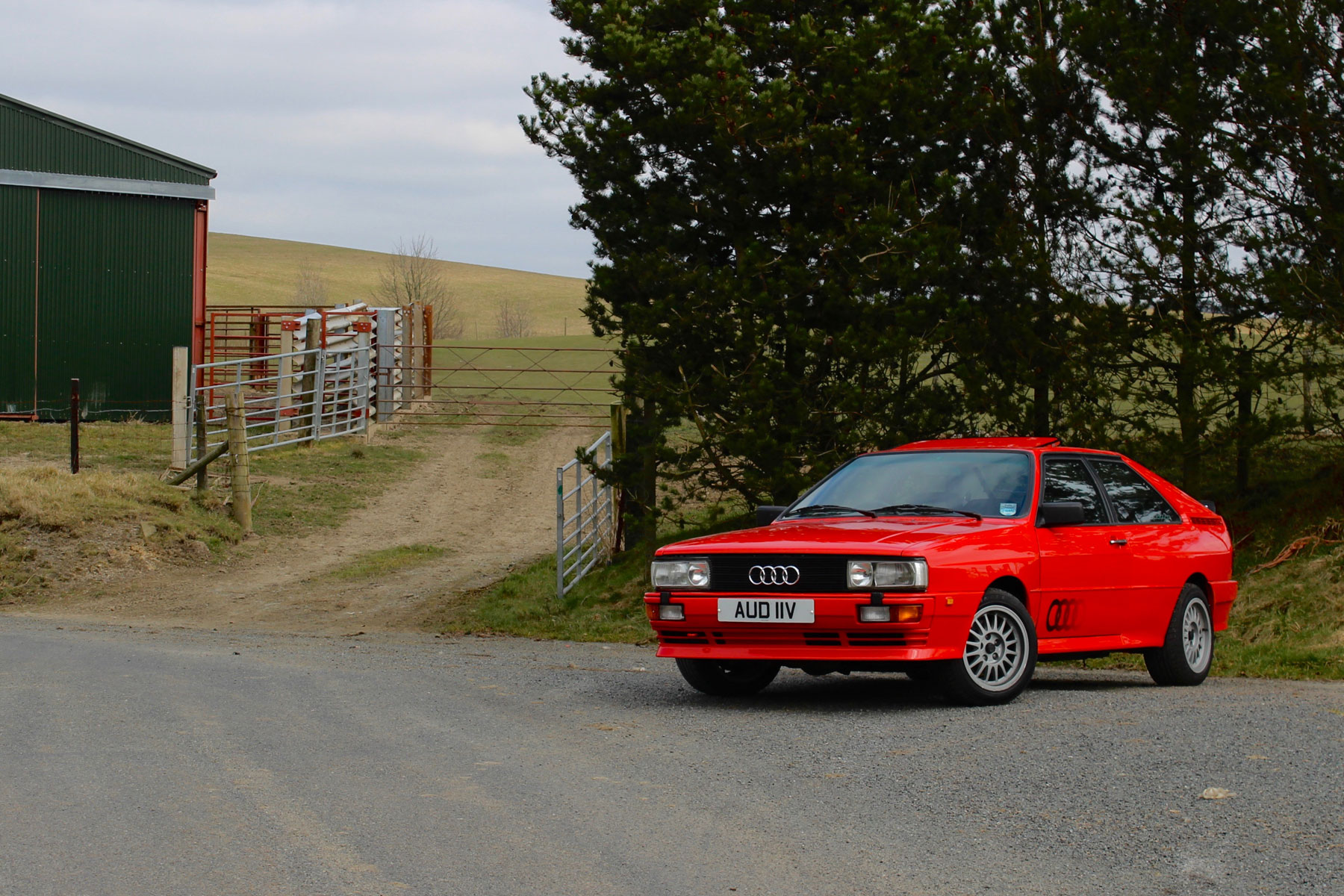
I don’t mind admitting I had butterflies in my stomach as I sauntered up to the icon, ignition key in hand. What if it didn’t match the dreams of my youth? What if Old Father Time had rendered this legend of yesteryear obsolete and out of touch? Insert a cliche about meeting your heroes…
Not only that, I’d be driving the icon in Wales – the ideal playground for a car with such a deep-rooted rally pedigree. I needn’t have worried. Twist the key (no start button nonsense here) and the straight-five stirs into life like a dragon waking from its slumber. It’s one of the most evocative soundtracks in the world and it’s central to the Quattro experience.
The idle is erratic, encouraging you to blip the throttle before take-off. Once free of 30mph zones and the many sheep, the Mars Red Quattro begins to show its true colours. The turbo lag is the stuff of legend and it’s there in abundance. Floor the throttle and… wait for it… the Quattro shoots for the horizon at an alarming rate.
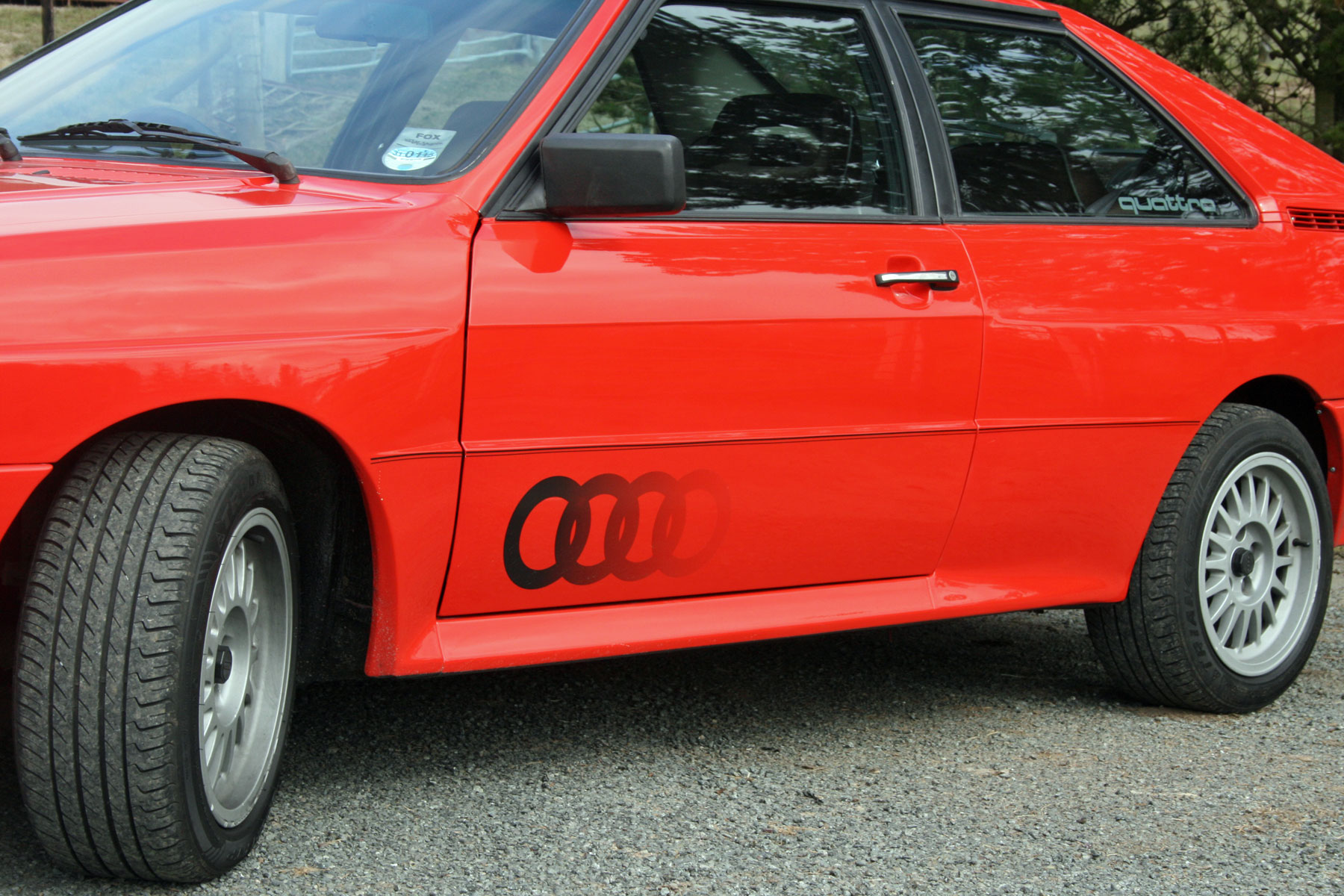
The steering wheel, refreshingly free of buttons but blessed with a very 1980s ‘turbo’ badge, is surprisingly communicative, while the tall tyre sidewalls give the impression of being perched high above the road. This is no low-slung sports car, but you soon learn how best to approach it.
The key is to hit the brakes before the entry to a corner, maintaining engine speed through the bend, before hitting the gas to power out the other side. It’s an intoxicating experience, with the slightly ‘woolly’ gear change (this car had done 174,000 miles) simply adding to the sense of involvement. The Quattro will run wide if you overdo it, but lift off and it falls back into line.
It’s not perfect. After so many miles, the manual shift is less than precise, while the brakes take a bit of getting used to. But it all adds to a timeless experience. A smoothed-out version of the Quattro would be less memorable.
Reliability and running costs
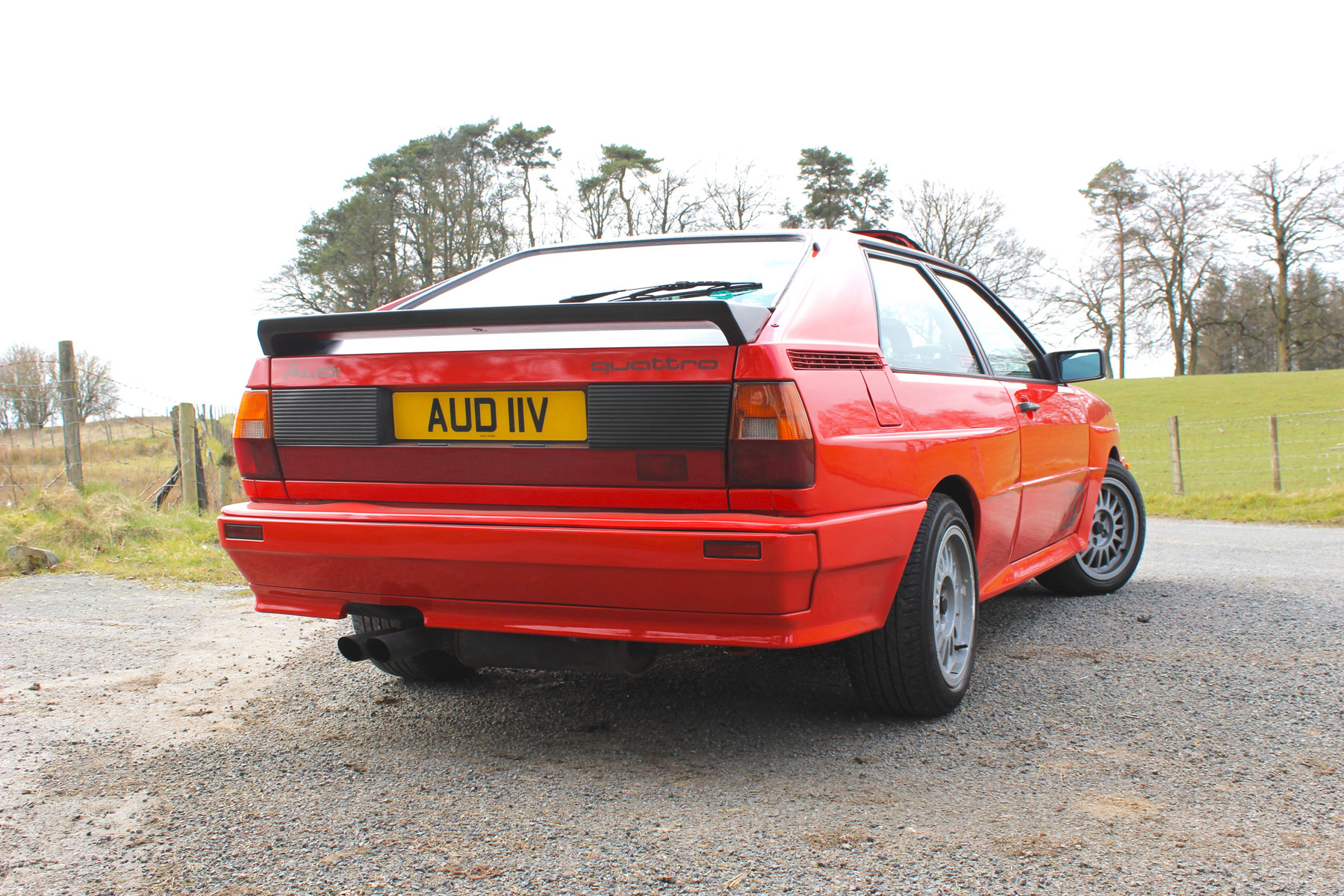
The ur-Quattro won’t be a cheap car to run. Assuming you can live with the fuel economy, which is likely to be around 20-25mpg, there are the small matters of parts availability and cost of servicing to consider.
If well maintained, these cars are capable of covering mega miles, but keeping one in perfect running order won’t be easy. A cheap Quattro is probably cheap for a reason.
Could I drive it every day?
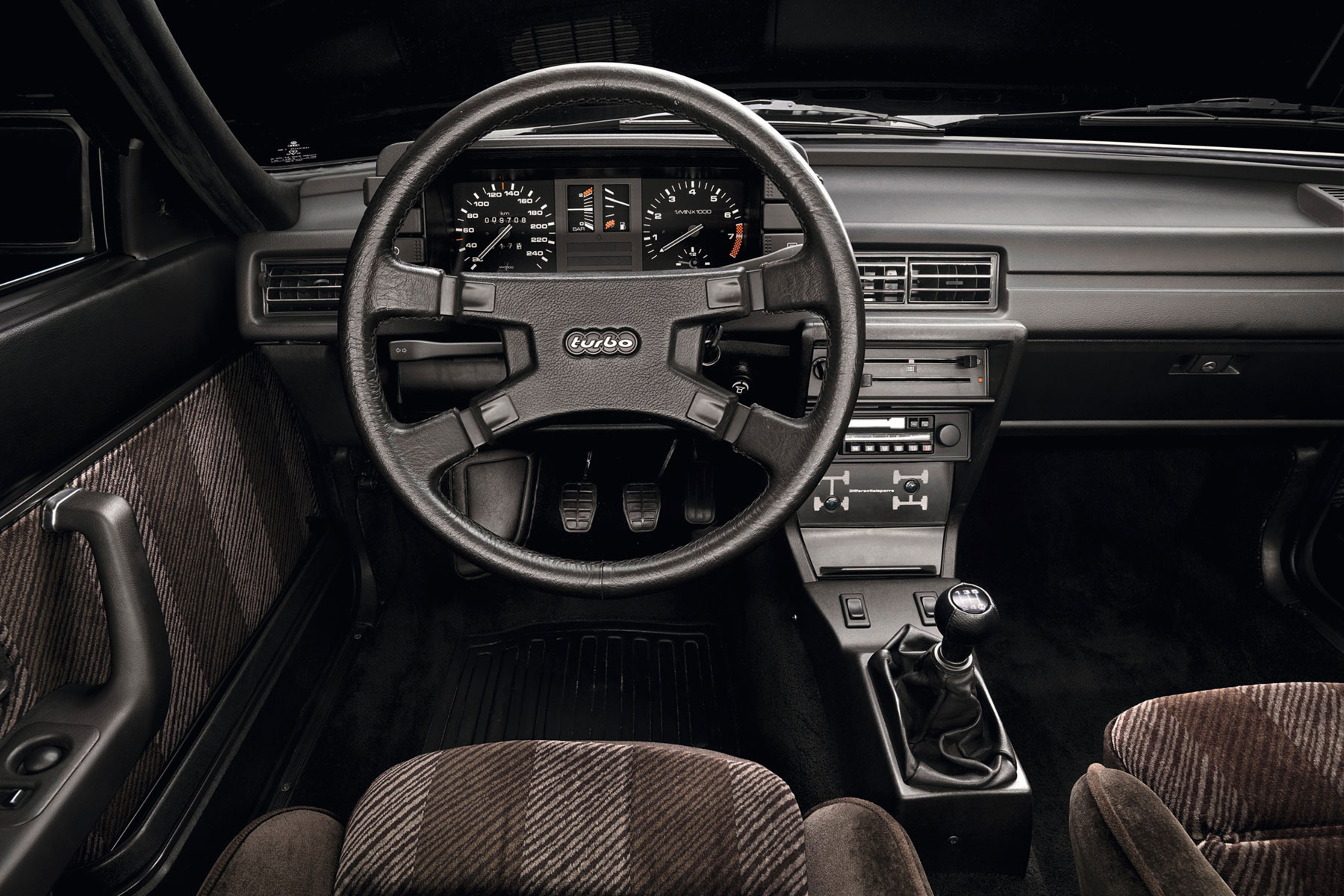
On the other hand, this is definitely a car you could live with every day. It’s surprisingly easy to drive, even around town, while the narrow pillars and expanse of glass provide good all-round visibility. There’s also plenty of room in the cabin, although don’t be fooled by the car’s hatchback shape; the boot is surprisingly small.
If you do decide to drive your Audi Quattro every day, we applaud you. Just be prepared for countless admiring glances and the occasional thumbs up from pedestrians. Gene Hunt and the Ashes to Ashes TV series have a lot to answer for.
How much should I pay?
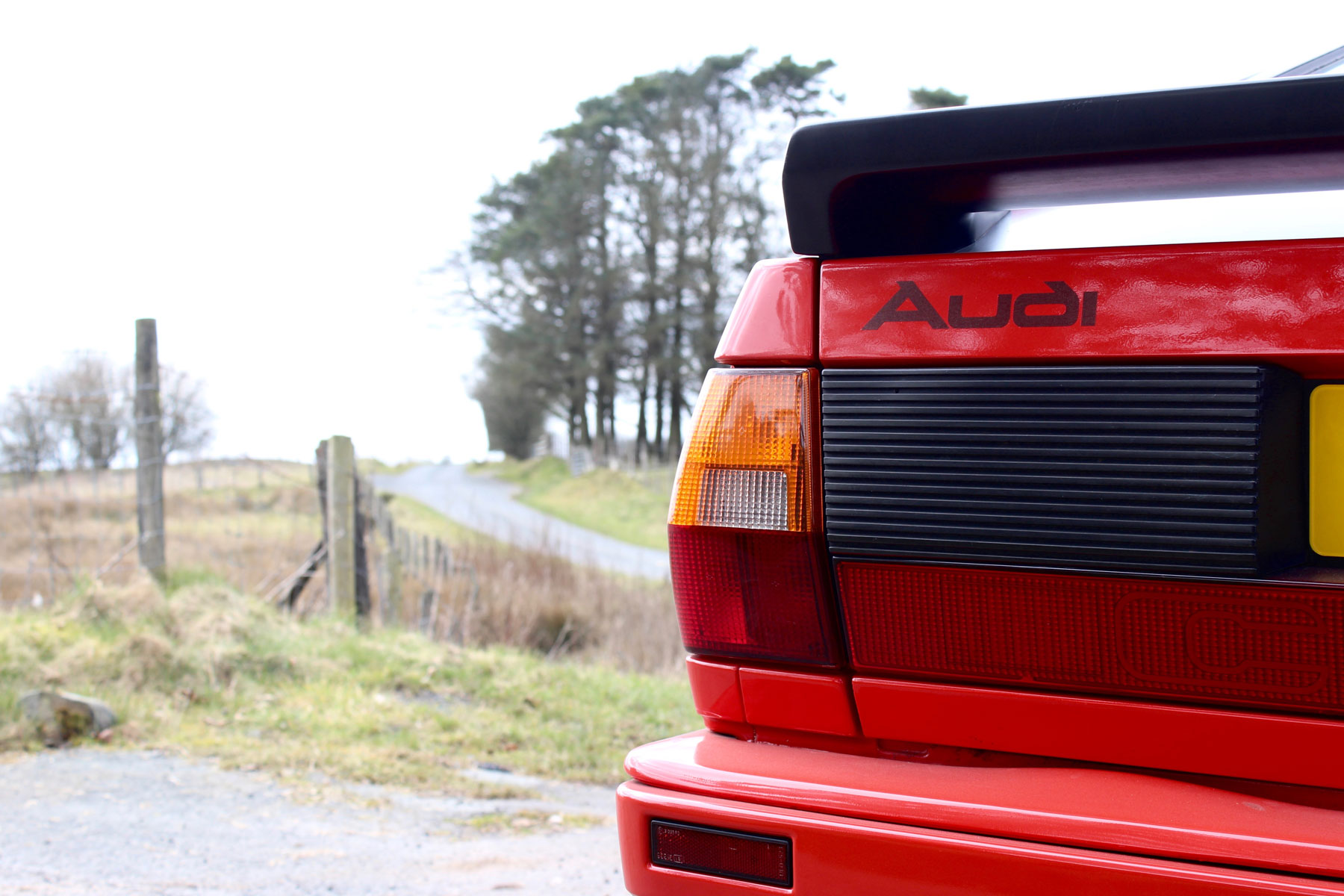
The simple answer is: as much as you can afford, and then some. Around £3,000 gets you a Quattro in need of a rebuild, while you’ll be forced to part with well over £30,000 for a late and ultra-desirable 20-valve.
That said, you could end up paying much, much more. Cars with provenance and concours-winning potential command fees beyond the £50,000 mark.
What should I look out for?
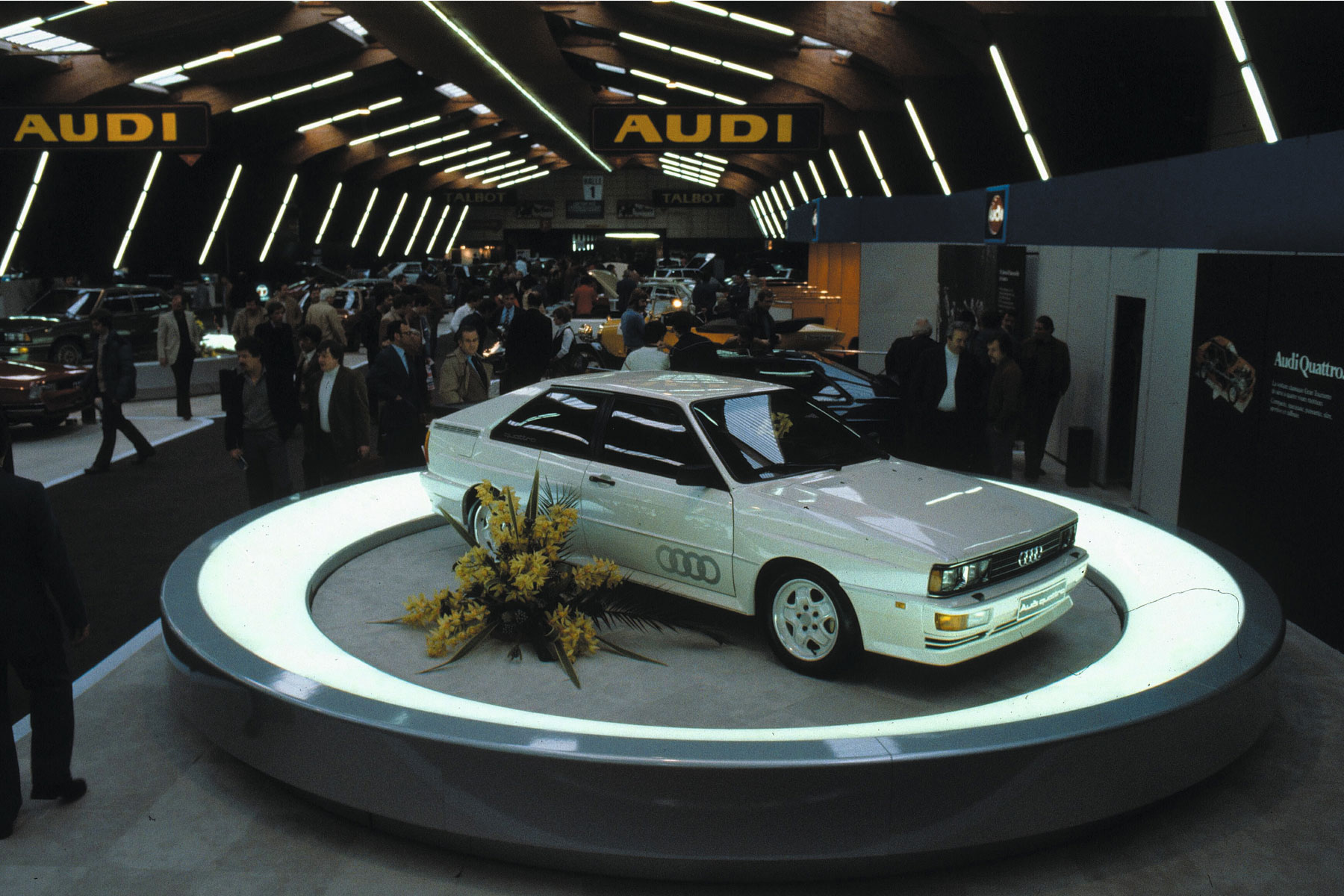
In a word: rust. Some of these cars are now 40 years old, so corrosion may have taken hold. If the body has been repaired, make sure the work was completed by a reputable company. Also, beware of resprays that might hide a multitude of sins.
You’ll also notice that the interior isn’t screwed together in quite the same way as modern Audis. This isn’t meant to be a criticism, simply a warning that you might need to replace certain parts. If in doubt, take a specialist with you when viewing the car.
Should I buy one?
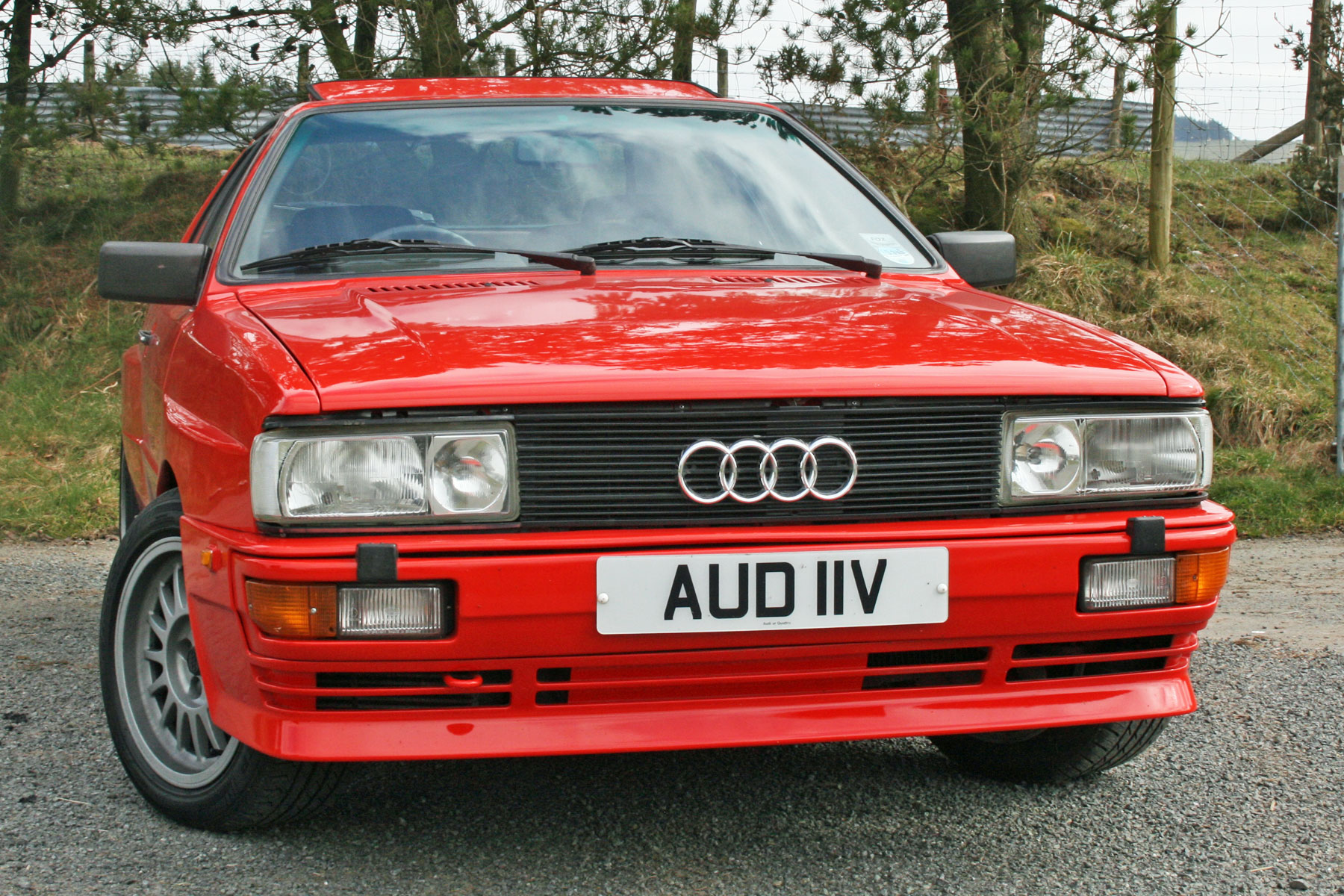
Of course you should. This is a true legend of road and track, so you’re unlikely to lose any money if you buy a good one. Given the prices being asked for certain fast Fords and a particular hot Peugeot, we reckon the Quattro is decent value.
After all, this is a car that changed the fortunes of an entire company and revolutionised world rallying. On second thoughts, we think it’s a bit of a bargain.
Pub fact
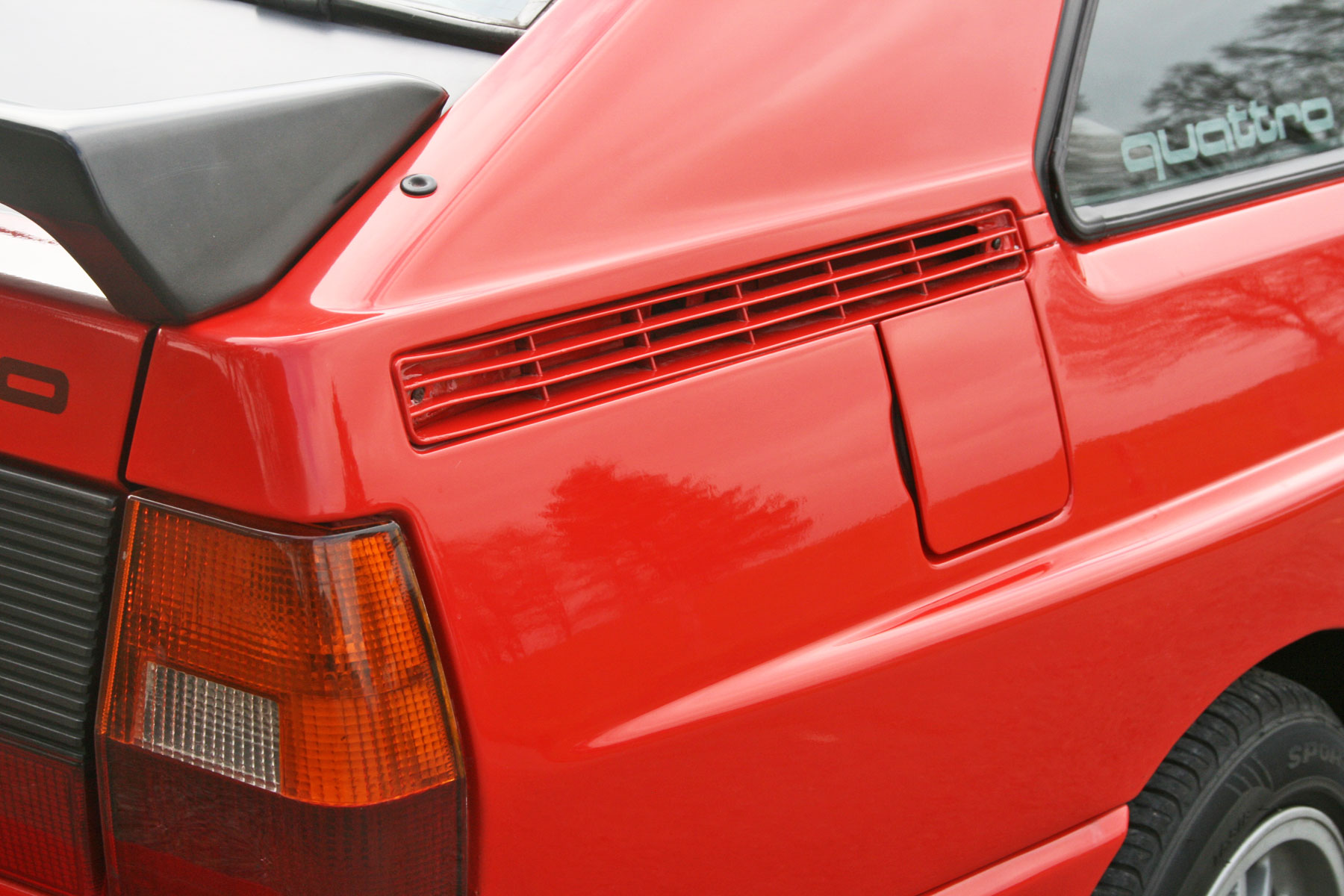
The ur-Quattro was the first 4×4 road car to be sold in Europe since the Jensen FF of the late 1960s. Other 4x4s of the time were all SUVs such as the Range Rover, although the Subaru Leone and AMC Eagle bridged the gap between smooth and rough roads.
The Quattro itself can trace its roots back to a primitive 4×4 system that was used in the Volkswagen Iltis military vehicle.
ALSO READ:
Meet the electric tribute to the Audi Quattro


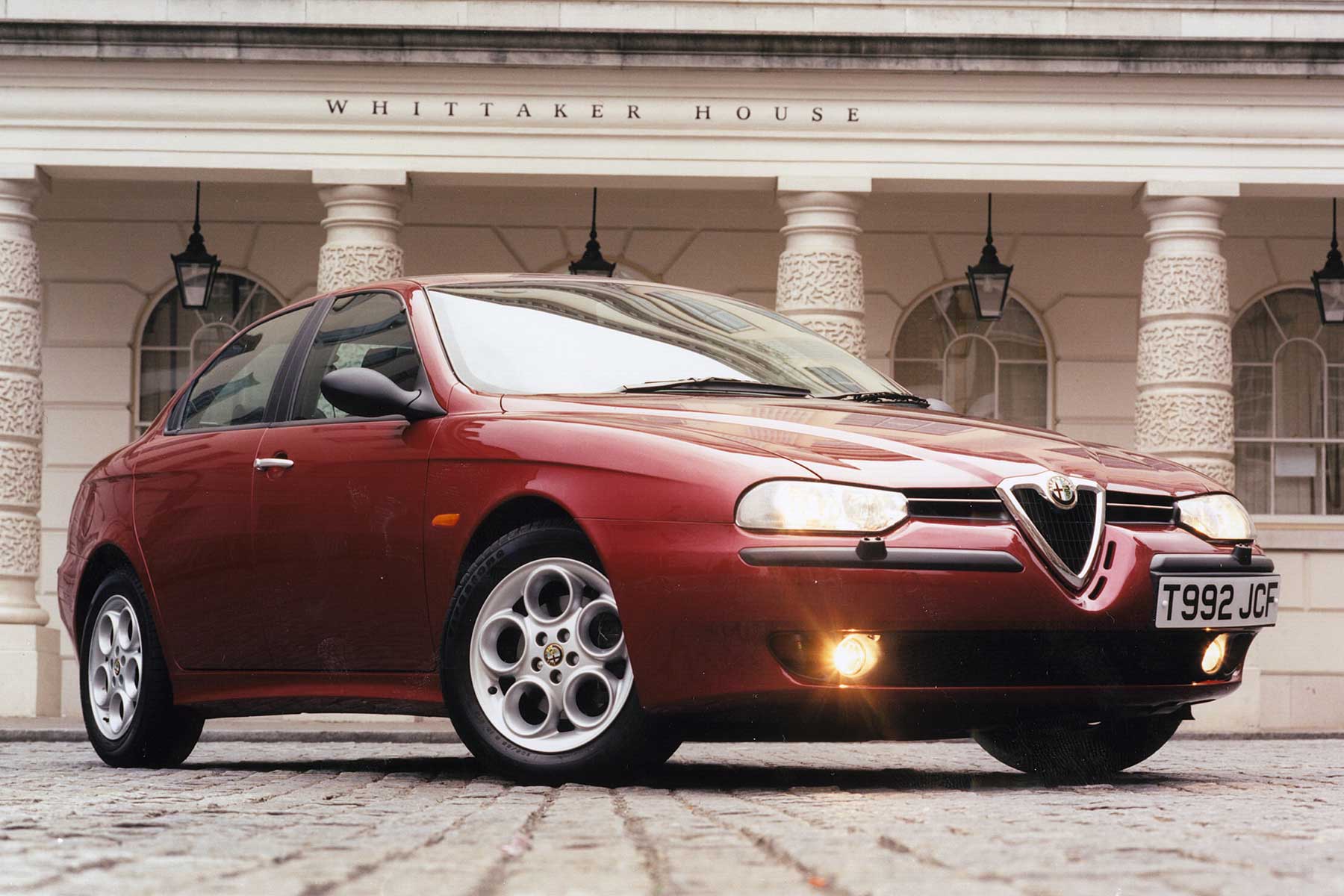
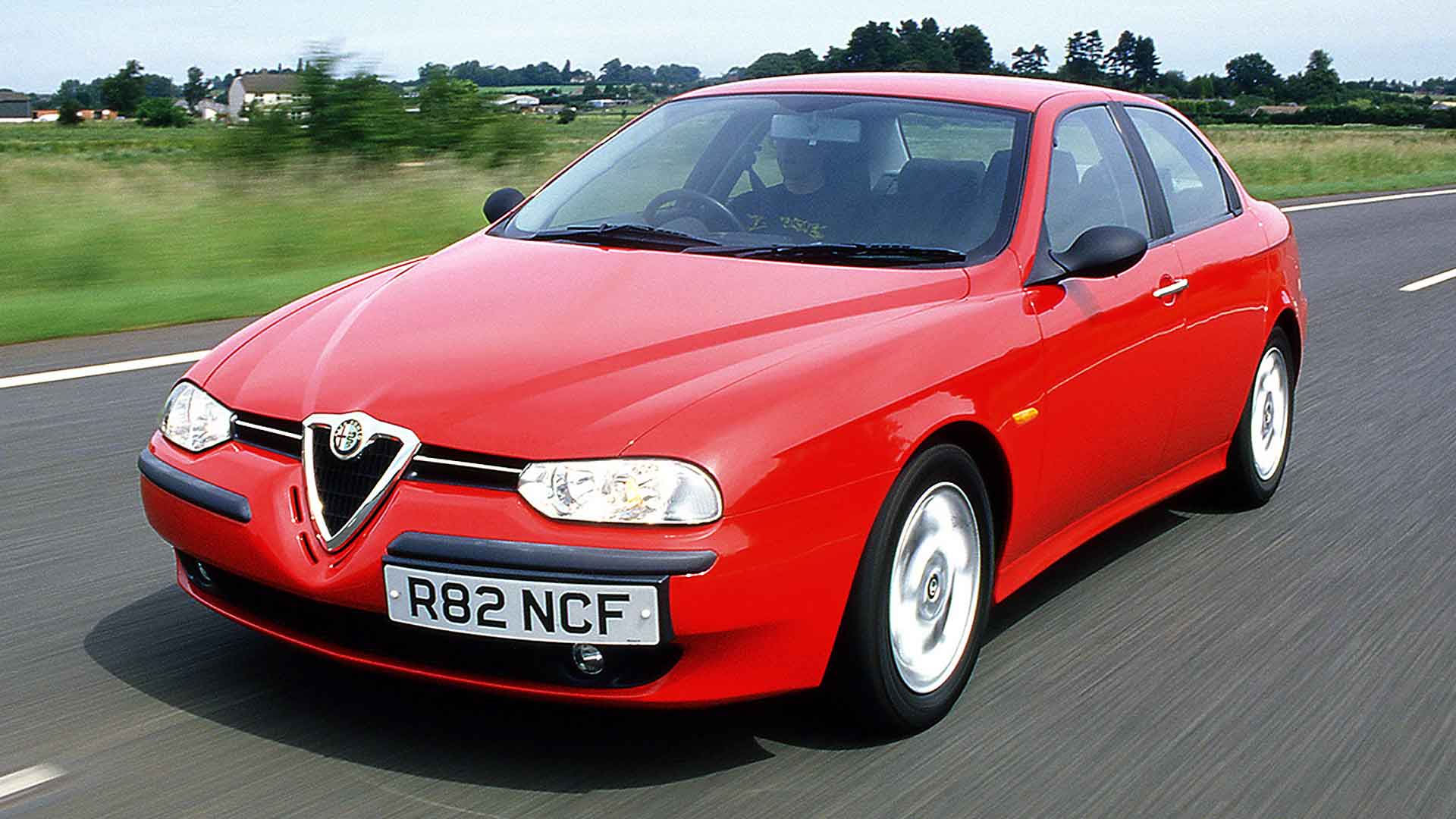
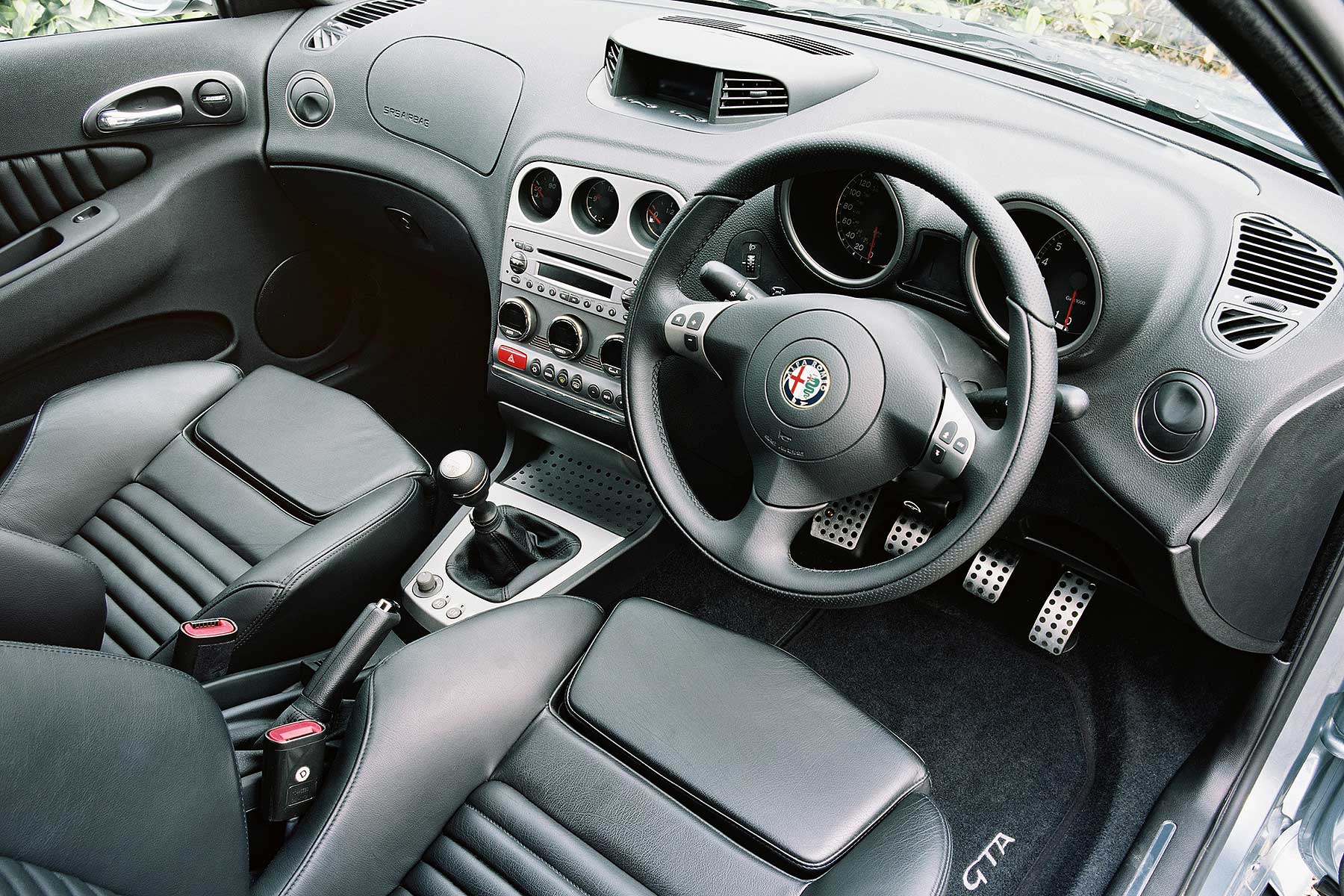
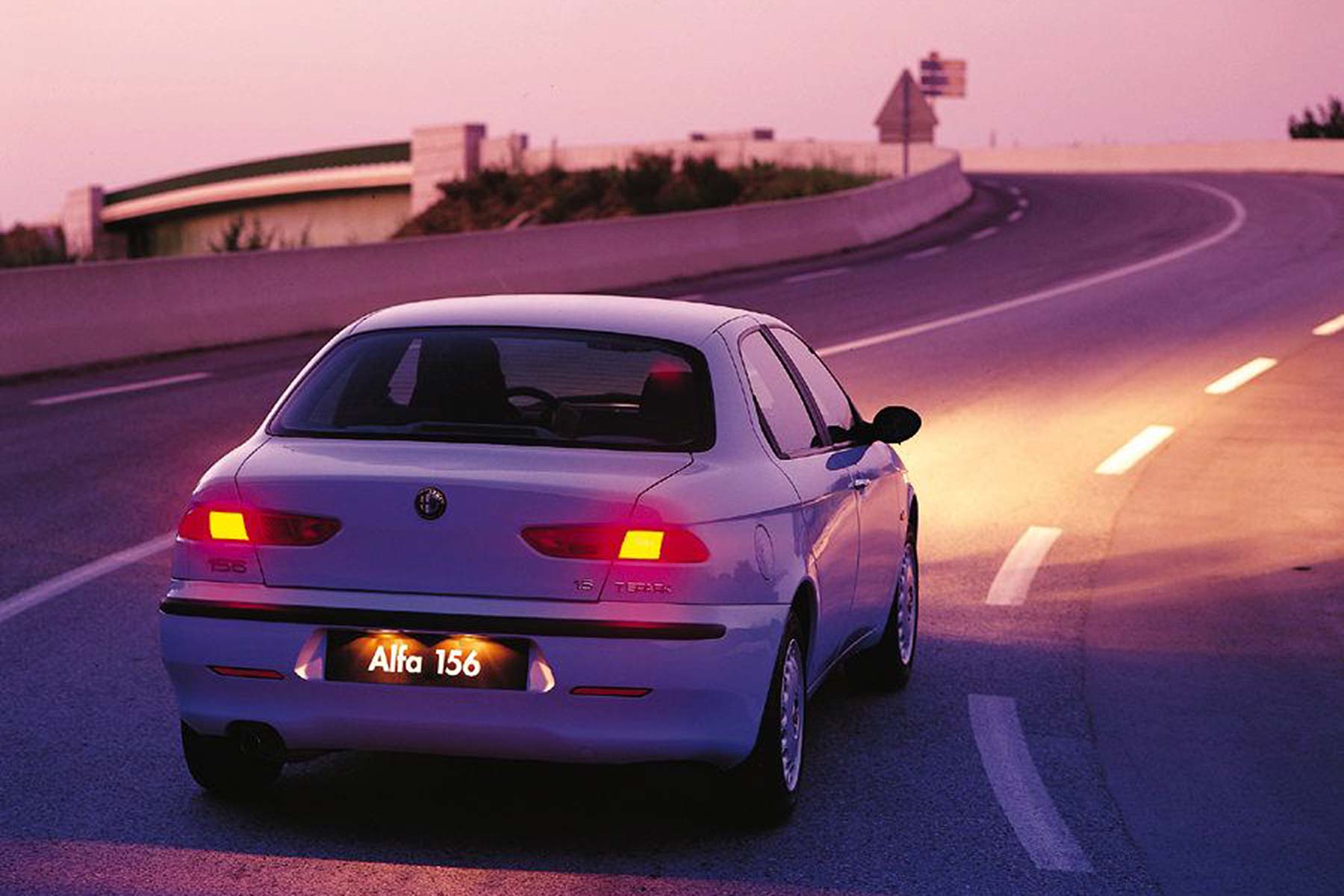
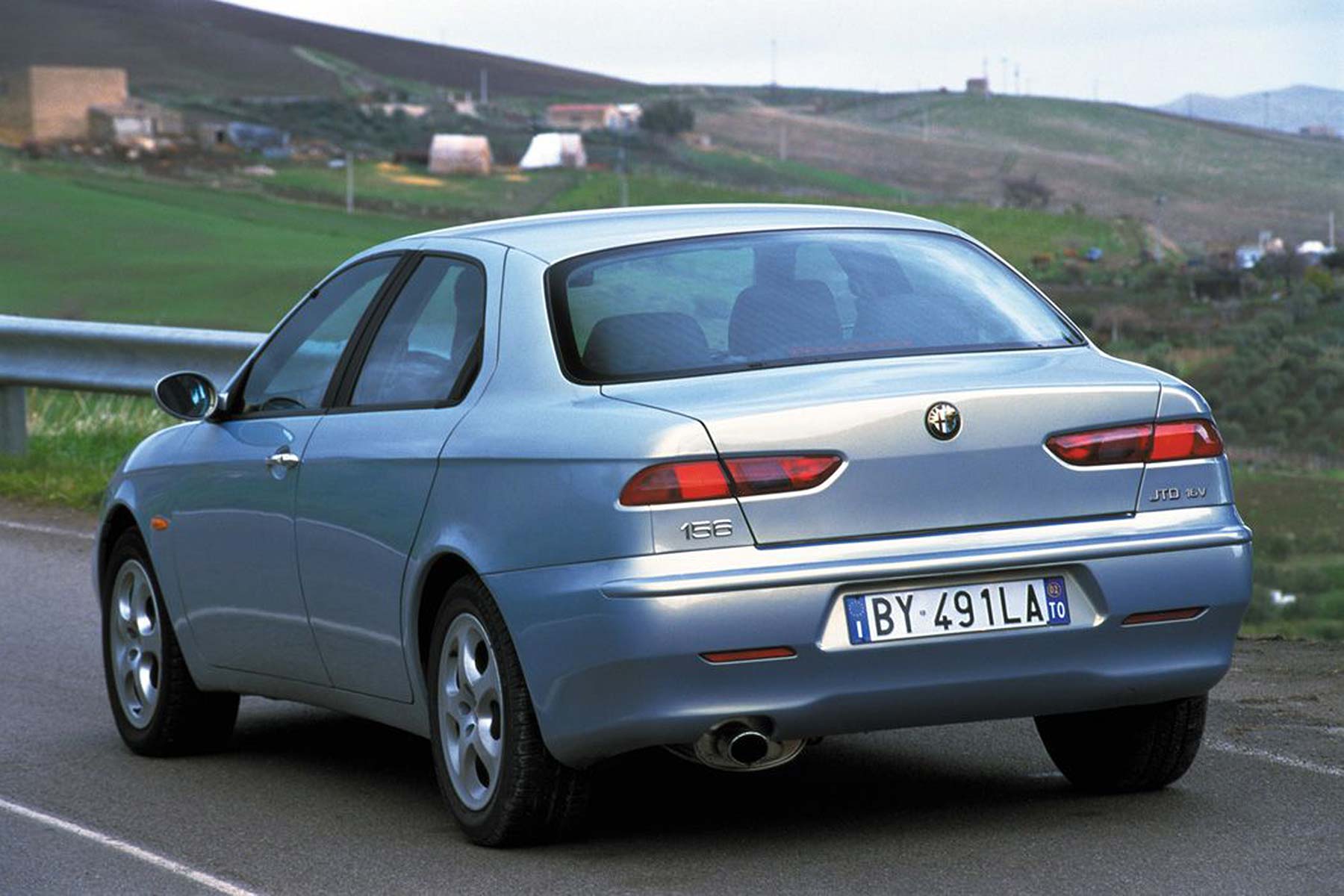
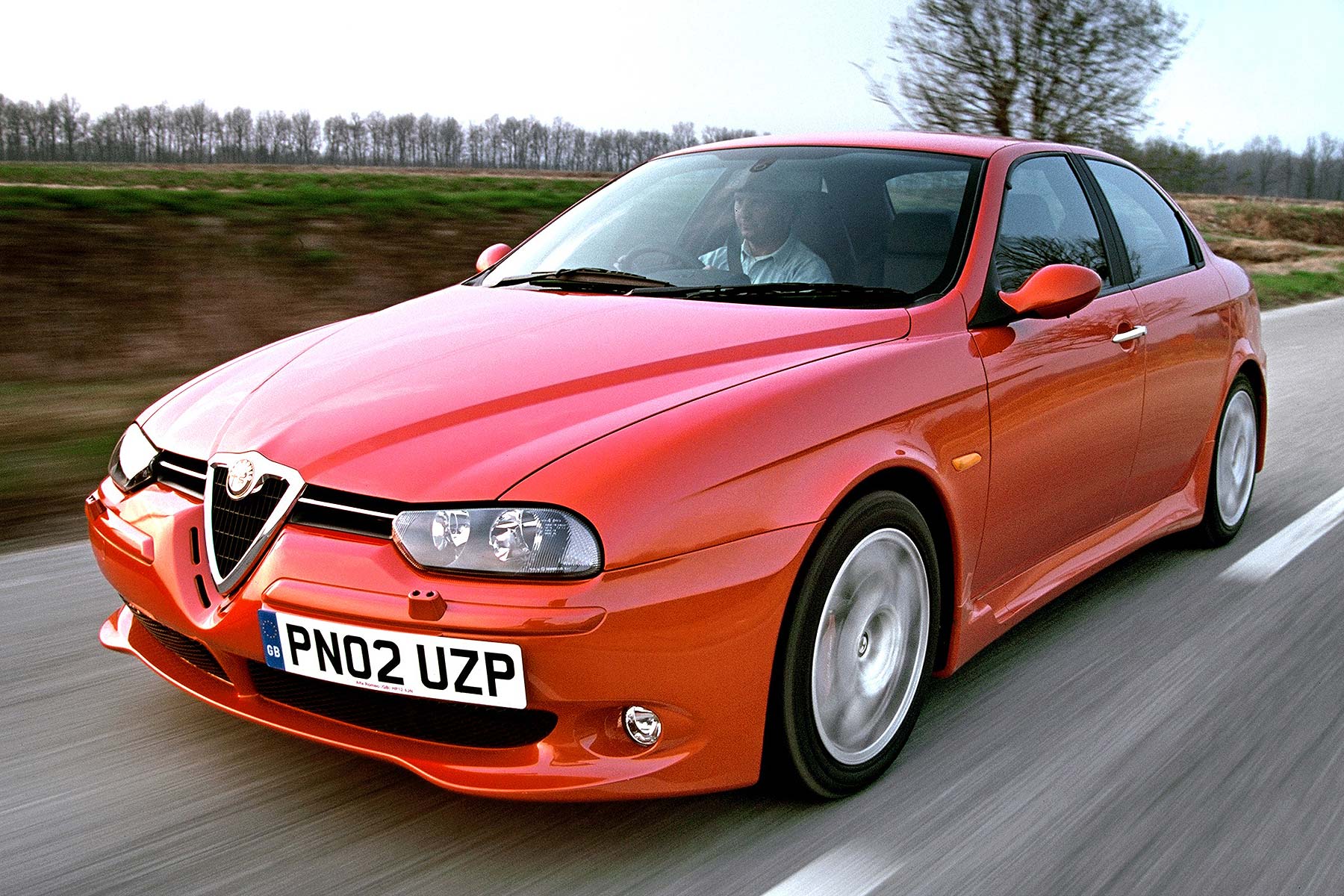
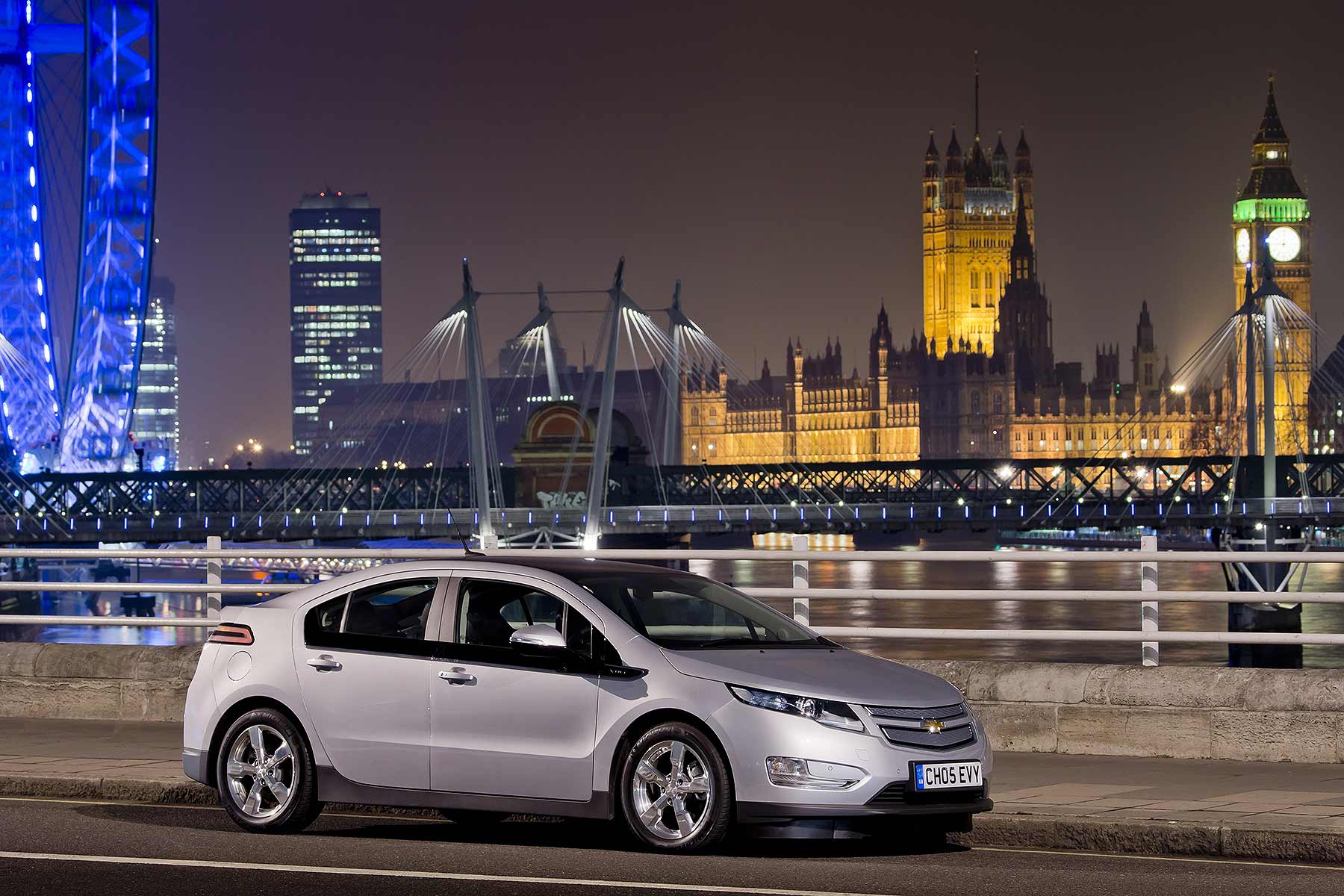
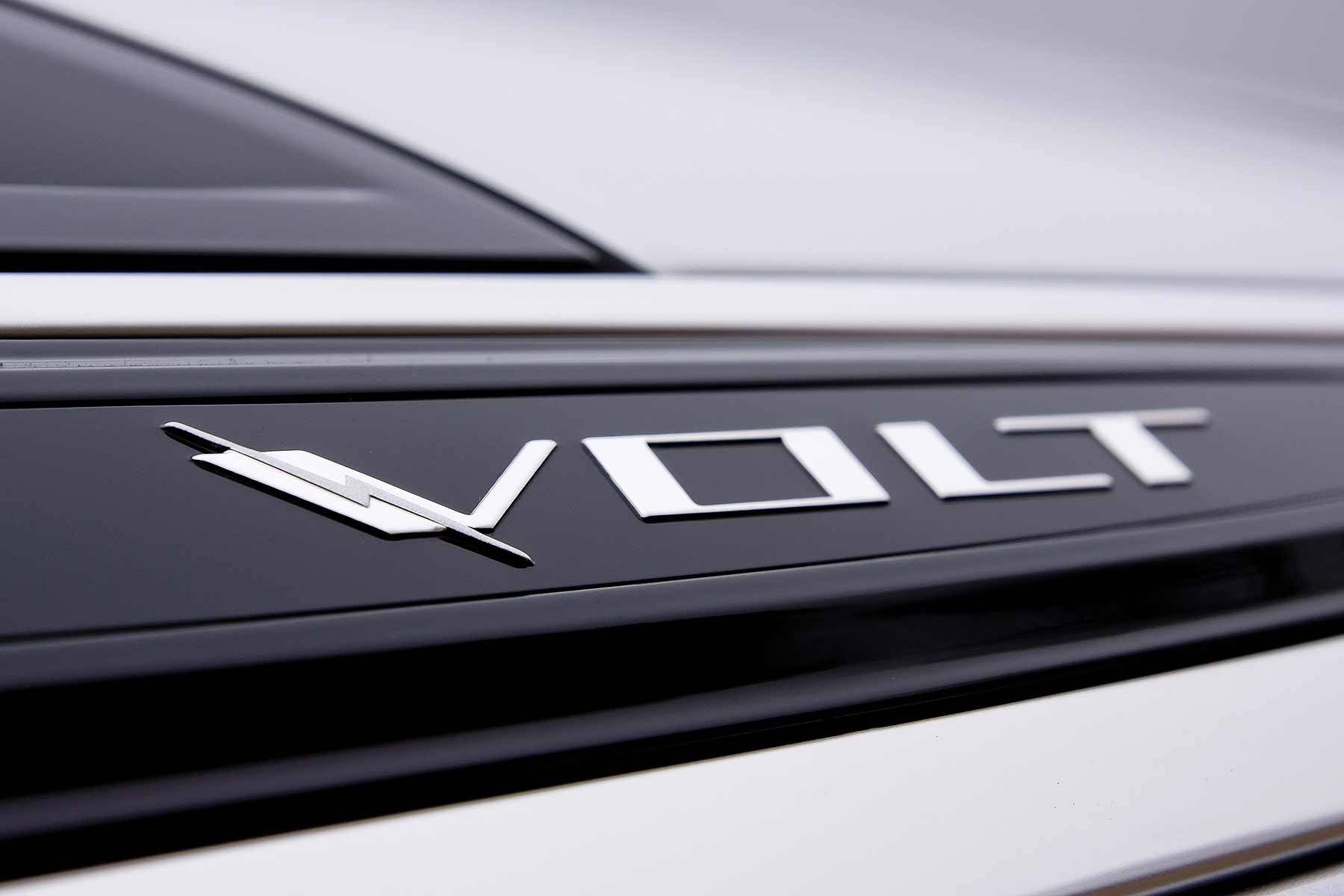
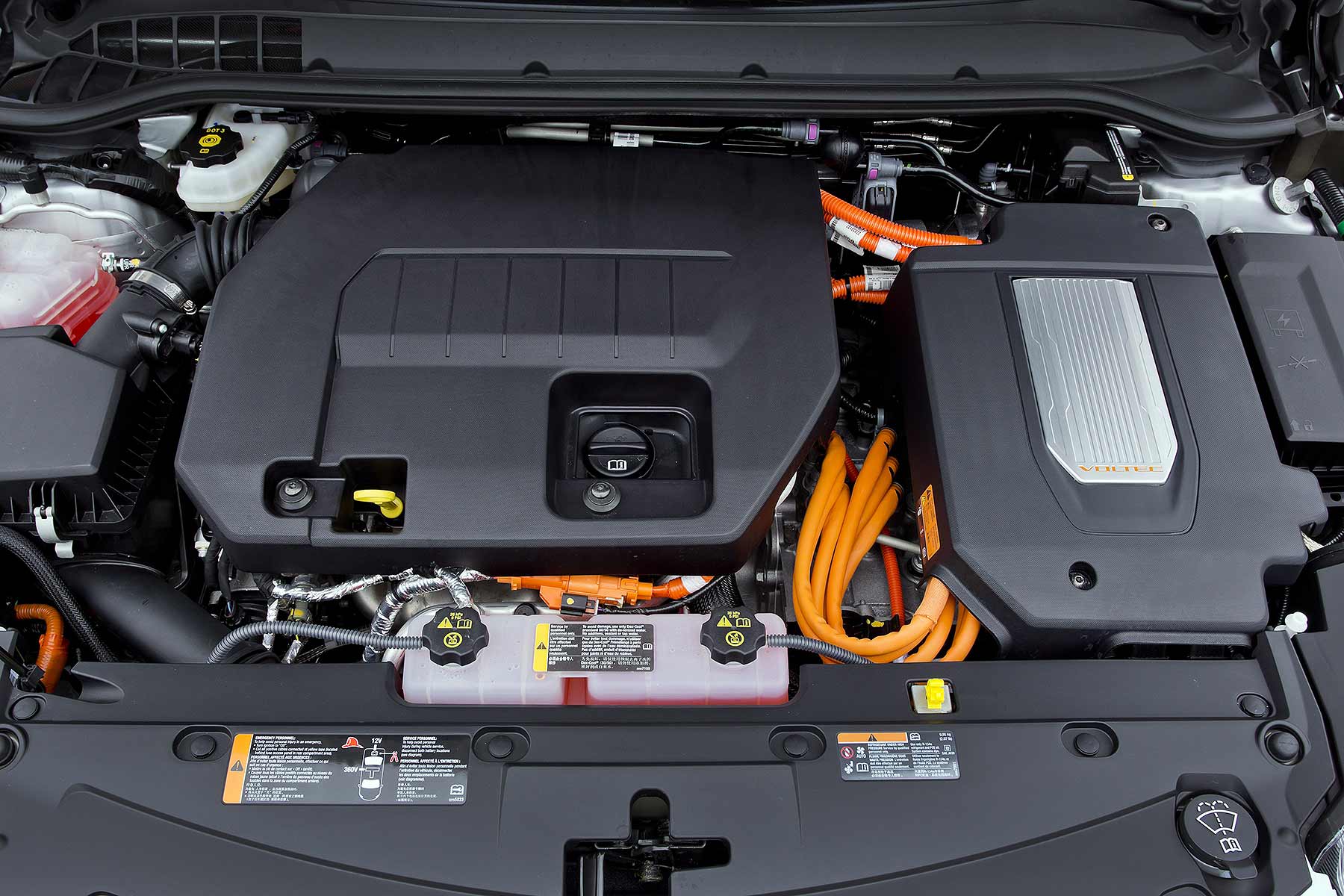
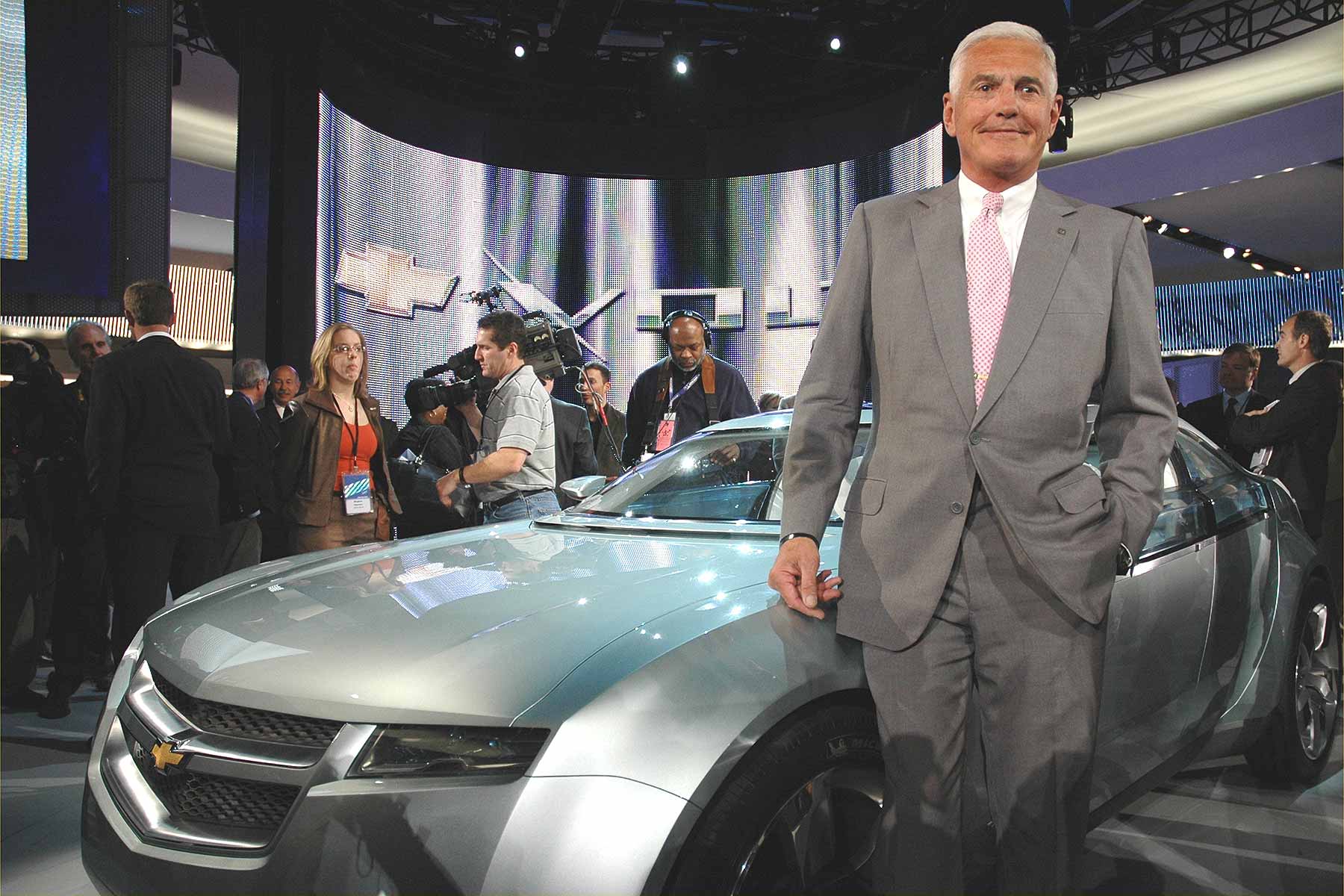
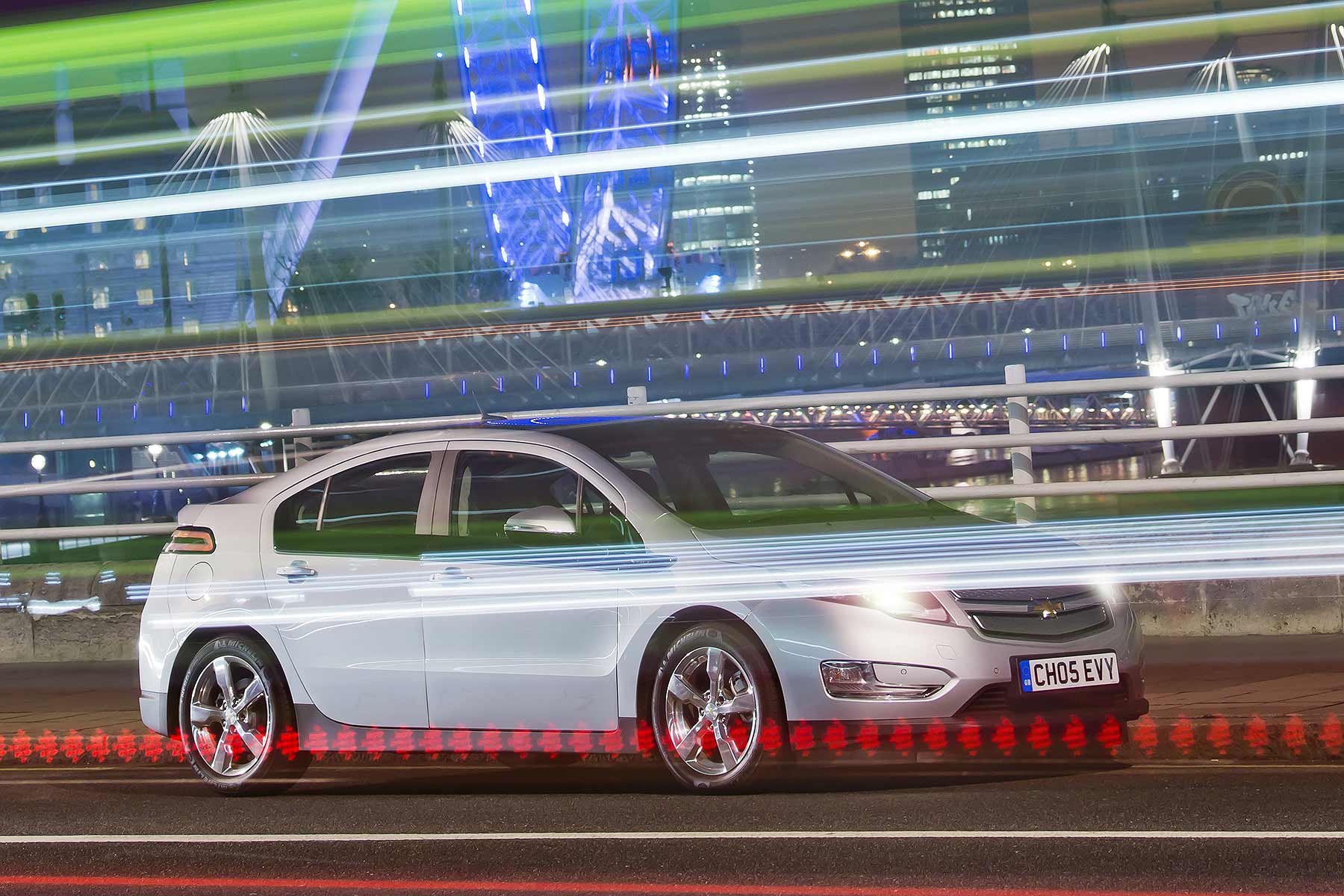
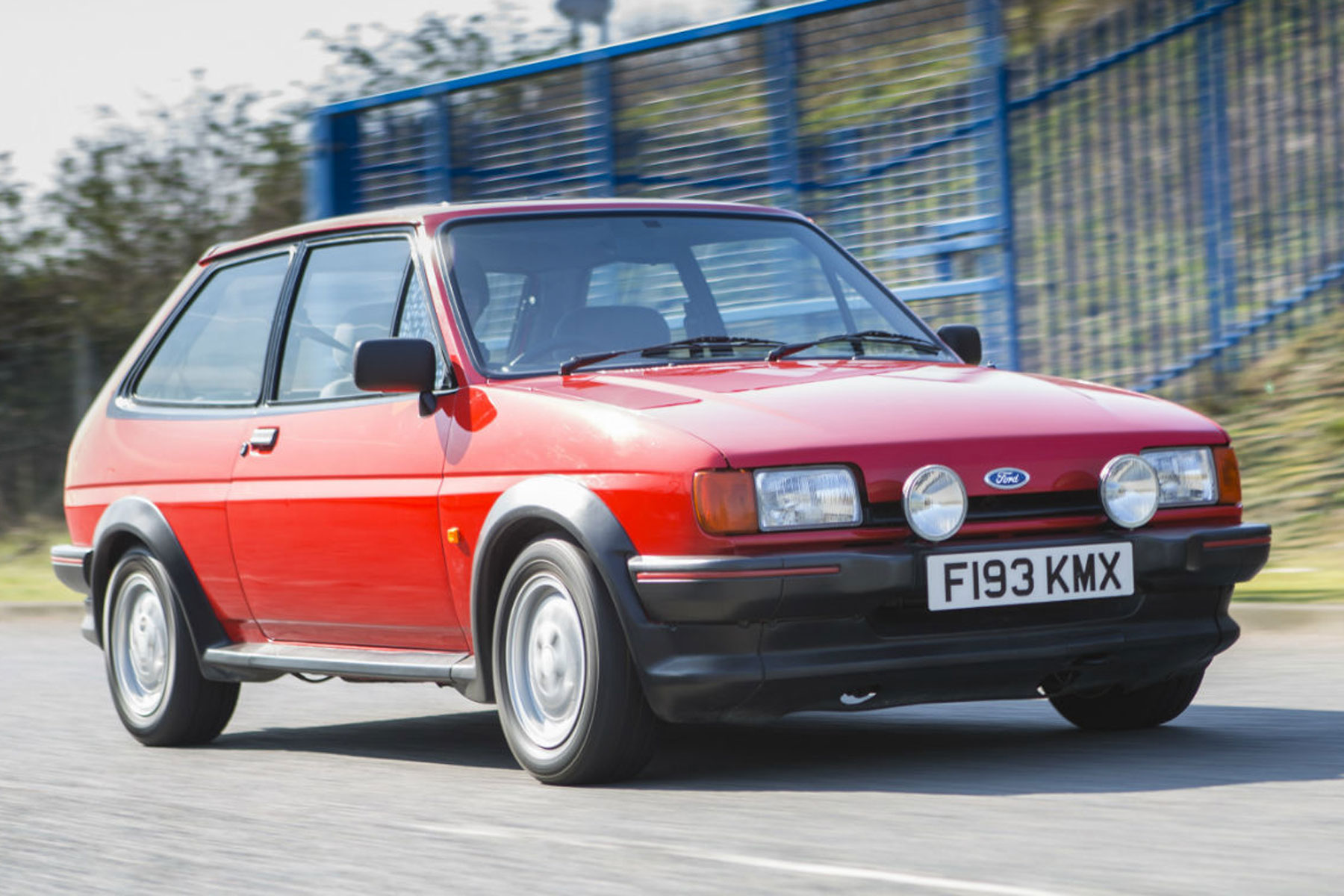
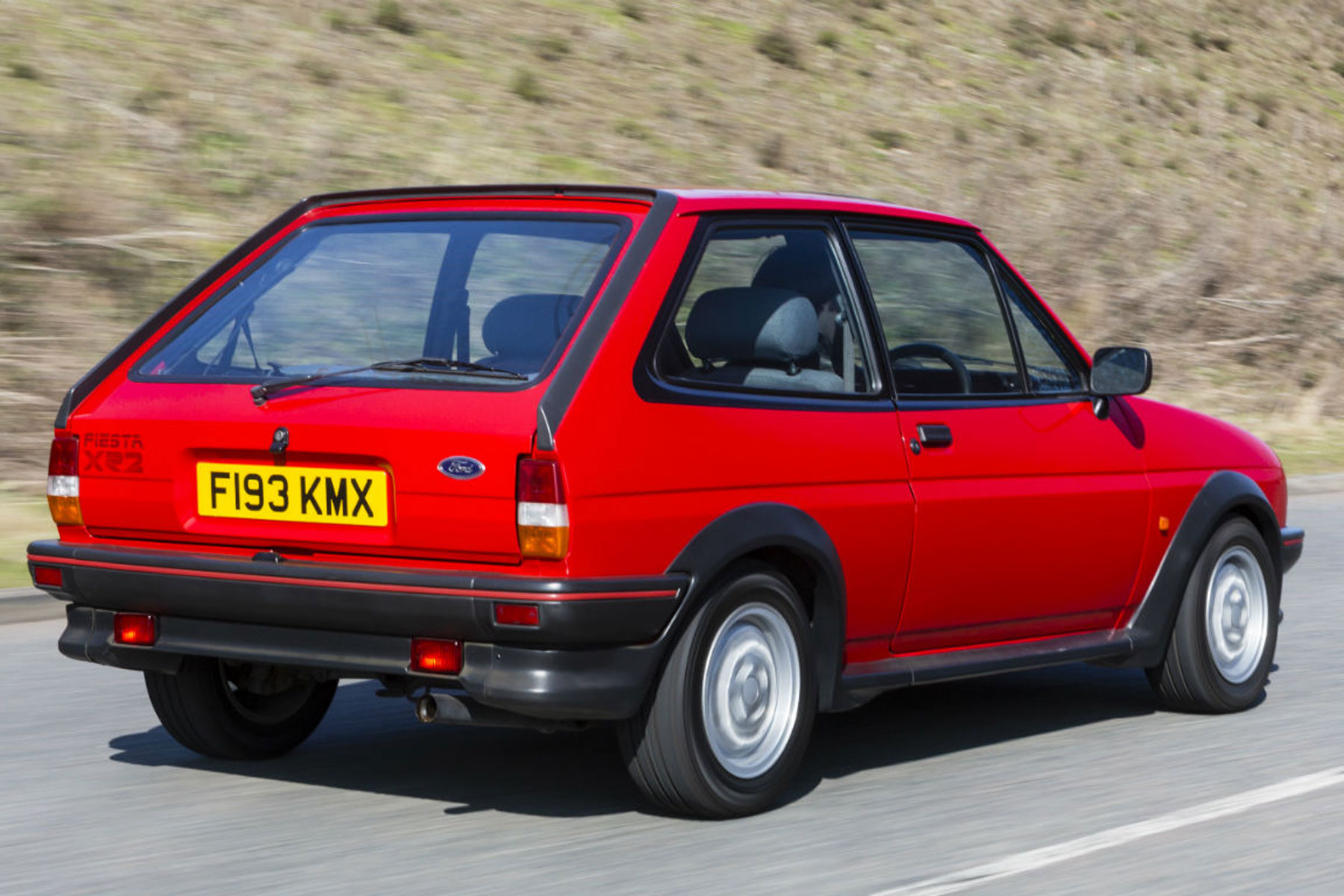
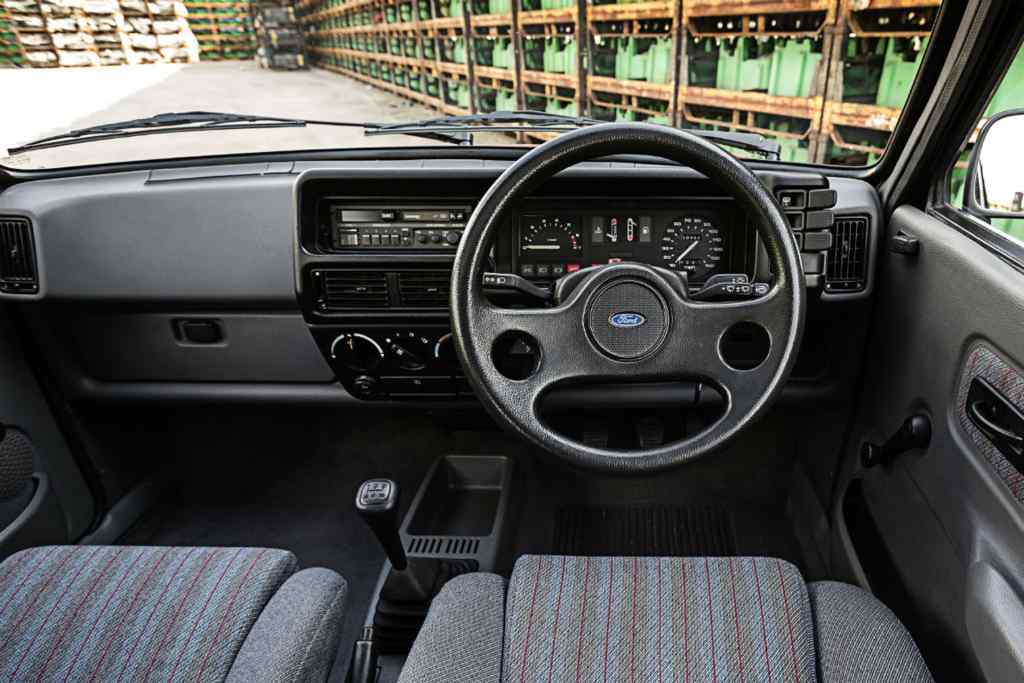
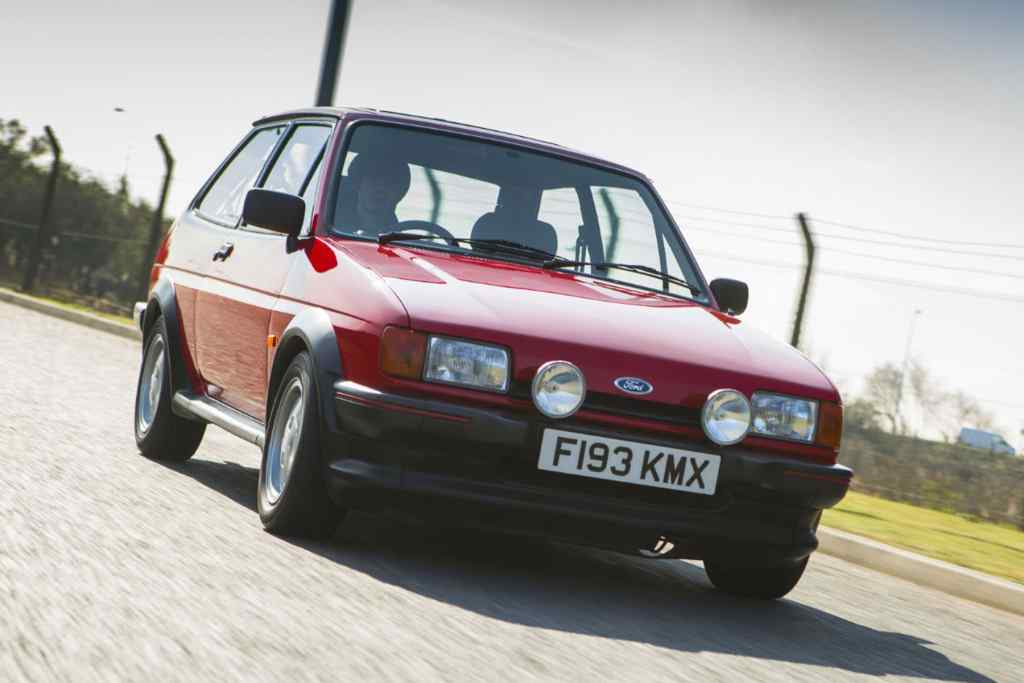
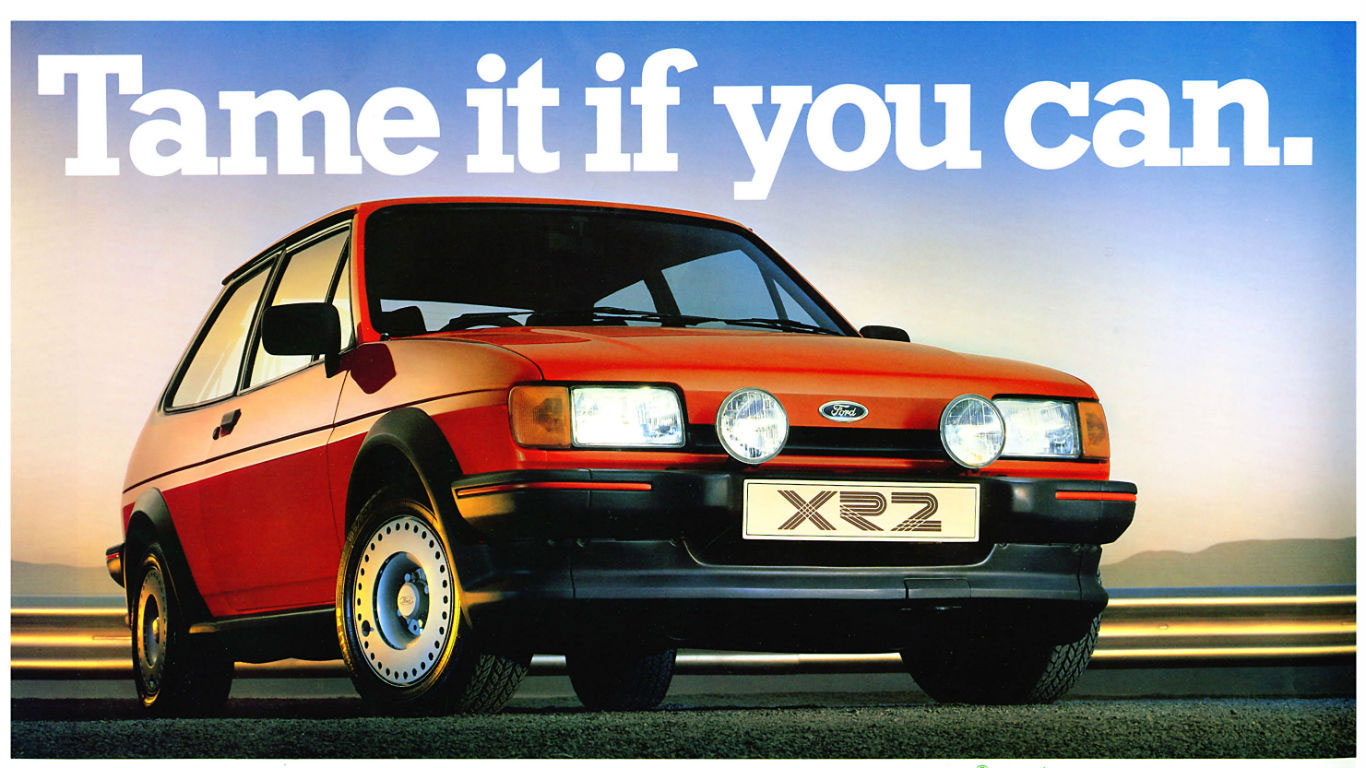
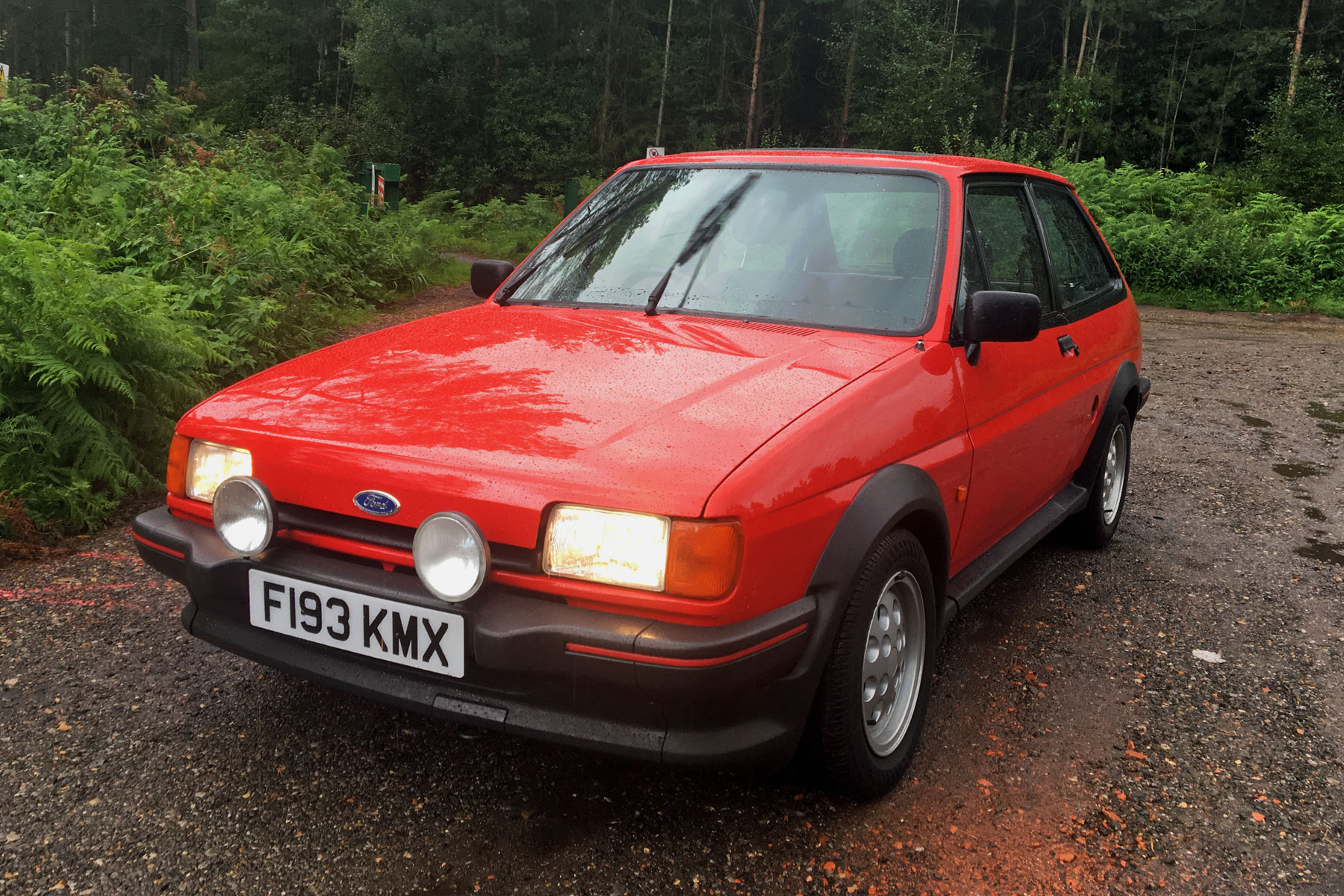

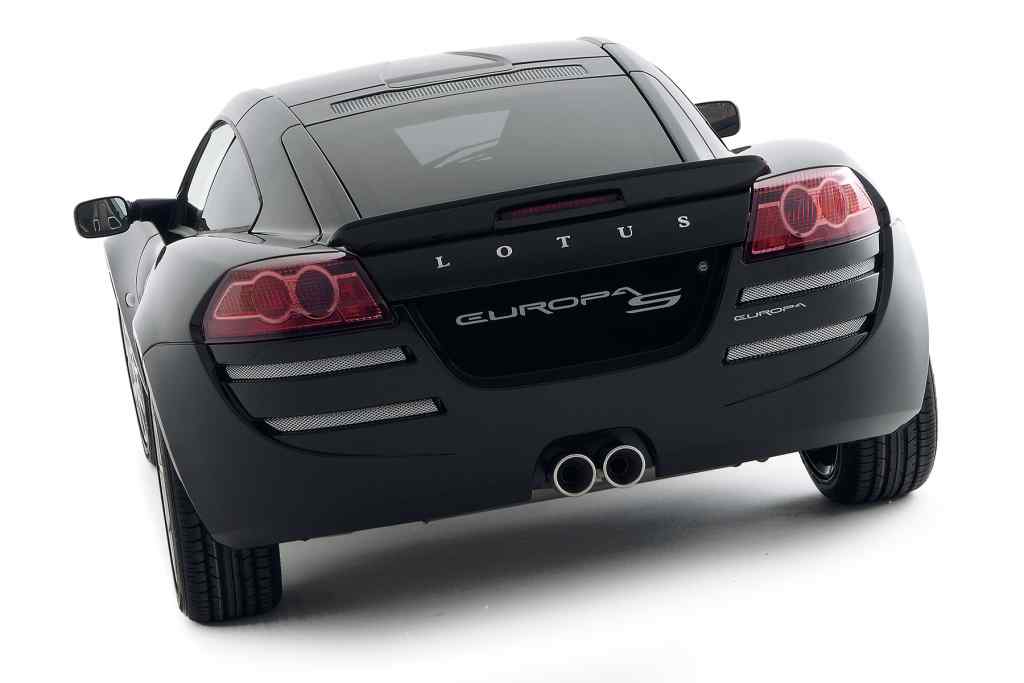
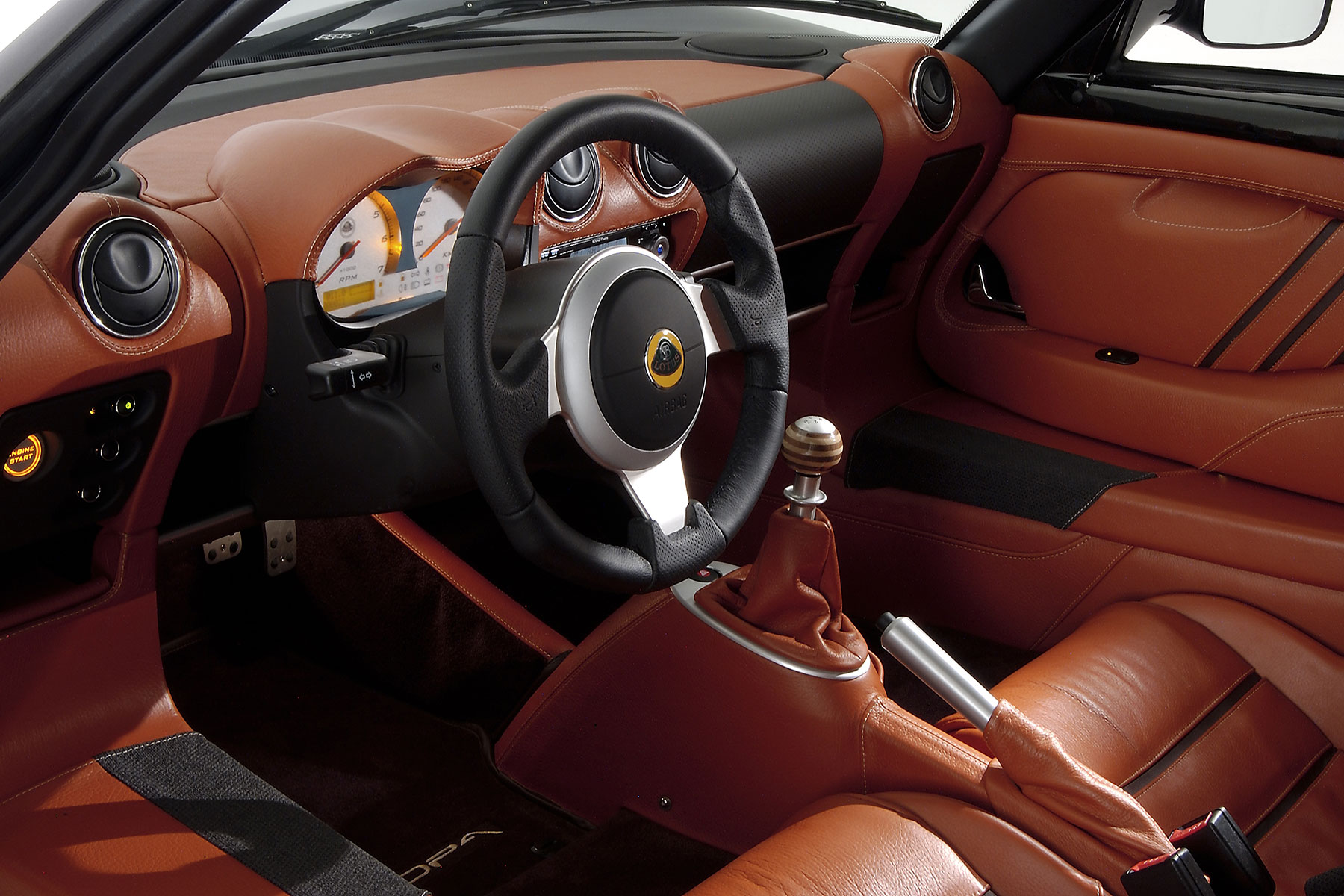

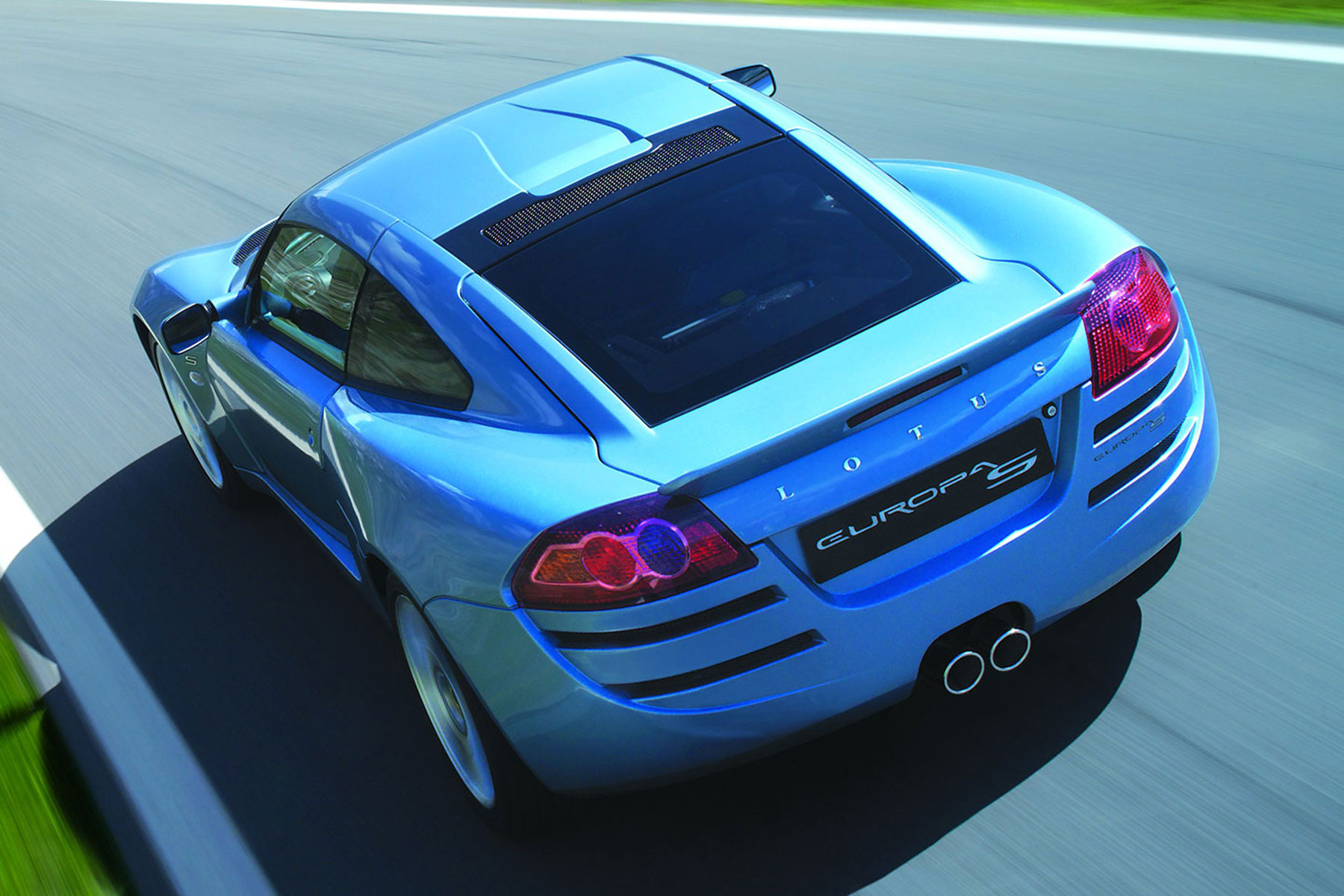
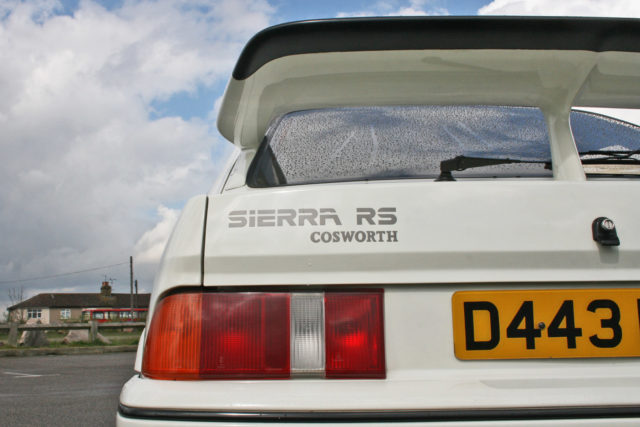
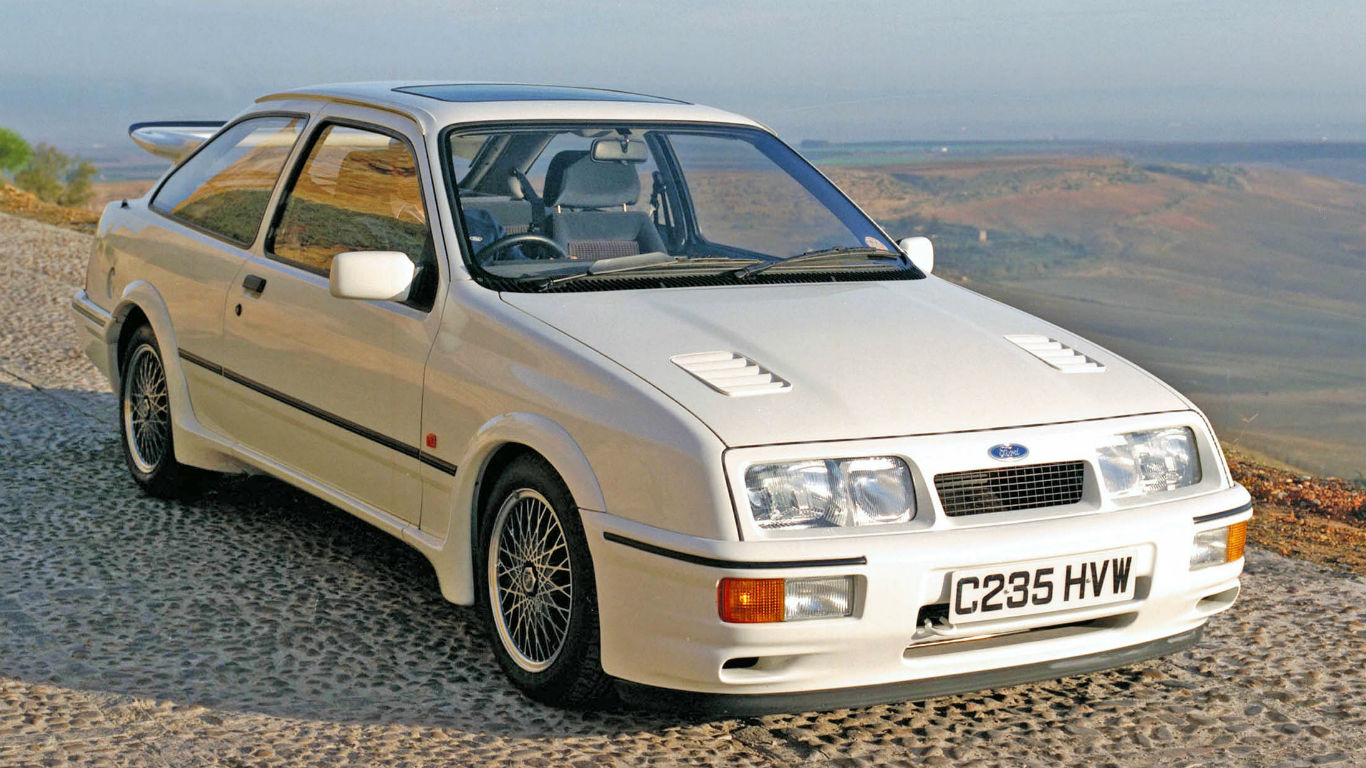 The Sierra RS Cosworth has grown old disgracefully. And we mean that as a compliment. Its huge rear wing helped make it an icon for the Max Power generation.
The Sierra RS Cosworth has grown old disgracefully. And we mean that as a compliment. Its huge rear wing helped make it an icon for the Max Power generation.
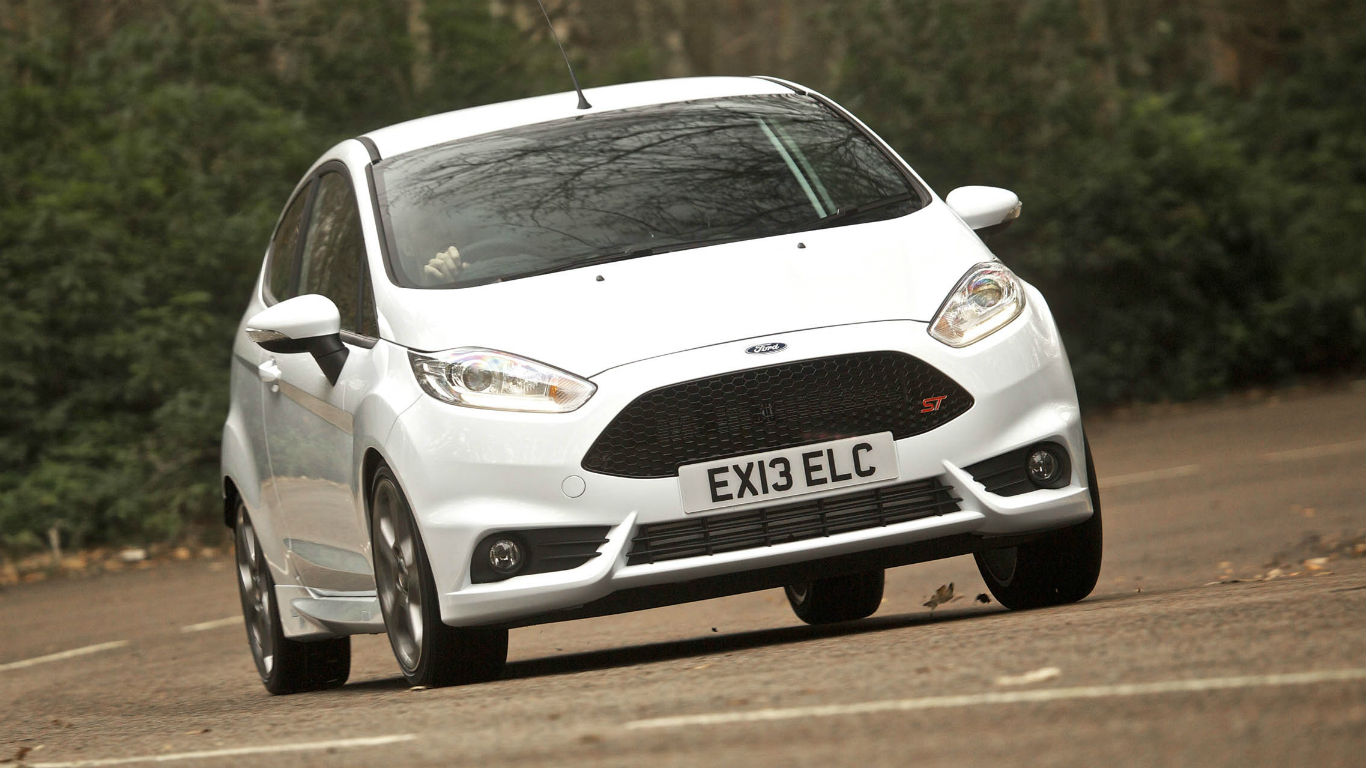 Fast-forward five decades and the Fiesta ST is proof that sporty Fords haven’t gone soft. This is the 2013 version, with a 182hp 1.6-litre engine good for 0-62mph in 6.9 seconds. That’s less than a second shy of the Sierra RS Cosworth.
Fast-forward five decades and the Fiesta ST is proof that sporty Fords haven’t gone soft. This is the 2013 version, with a 182hp 1.6-litre engine good for 0-62mph in 6.9 seconds. That’s less than a second shy of the Sierra RS Cosworth.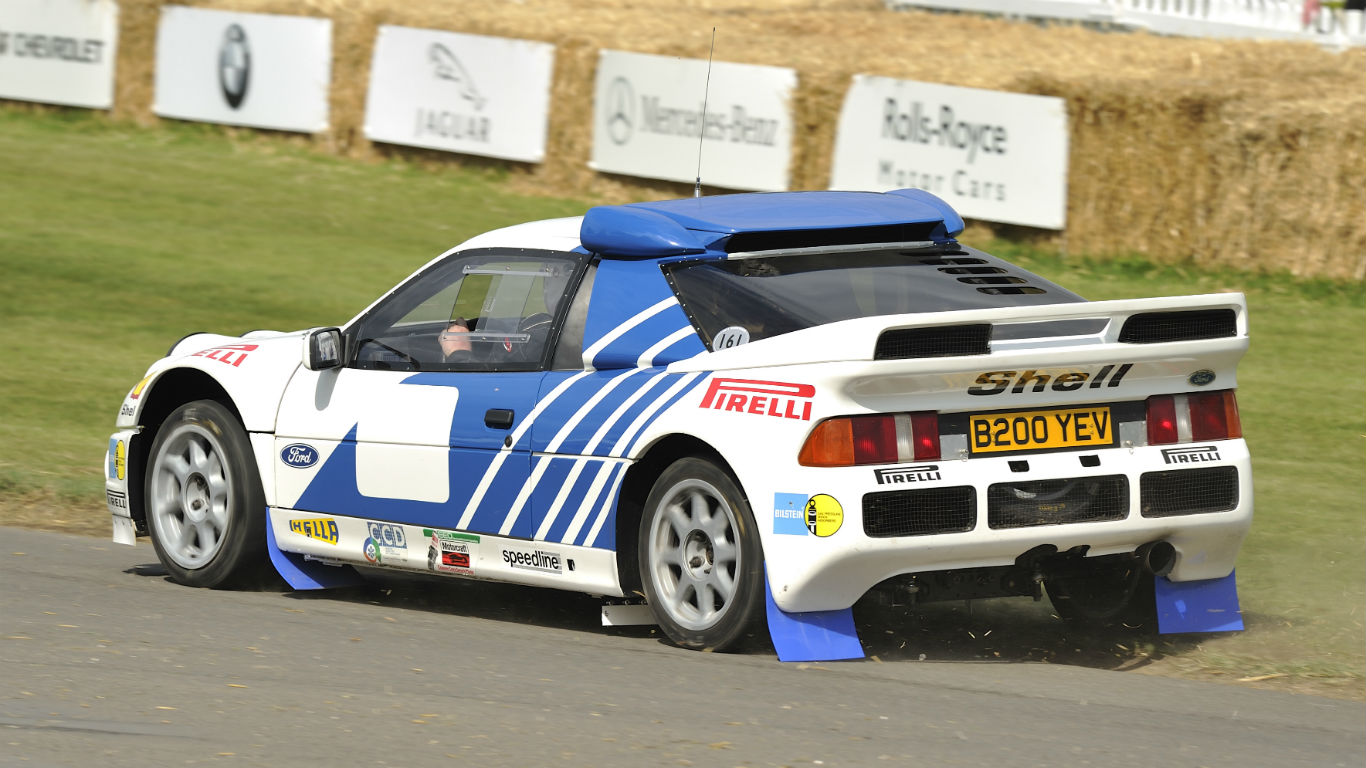 Ugly, explosively powerful and intimidating to drive, the RS200 is the automotive equivalent of a pit-bull terrier. Designed to meet Group B rally regulations, only 200 were made.
Ugly, explosively powerful and intimidating to drive, the RS200 is the automotive equivalent of a pit-bull terrier. Designed to meet Group B rally regulations, only 200 were made.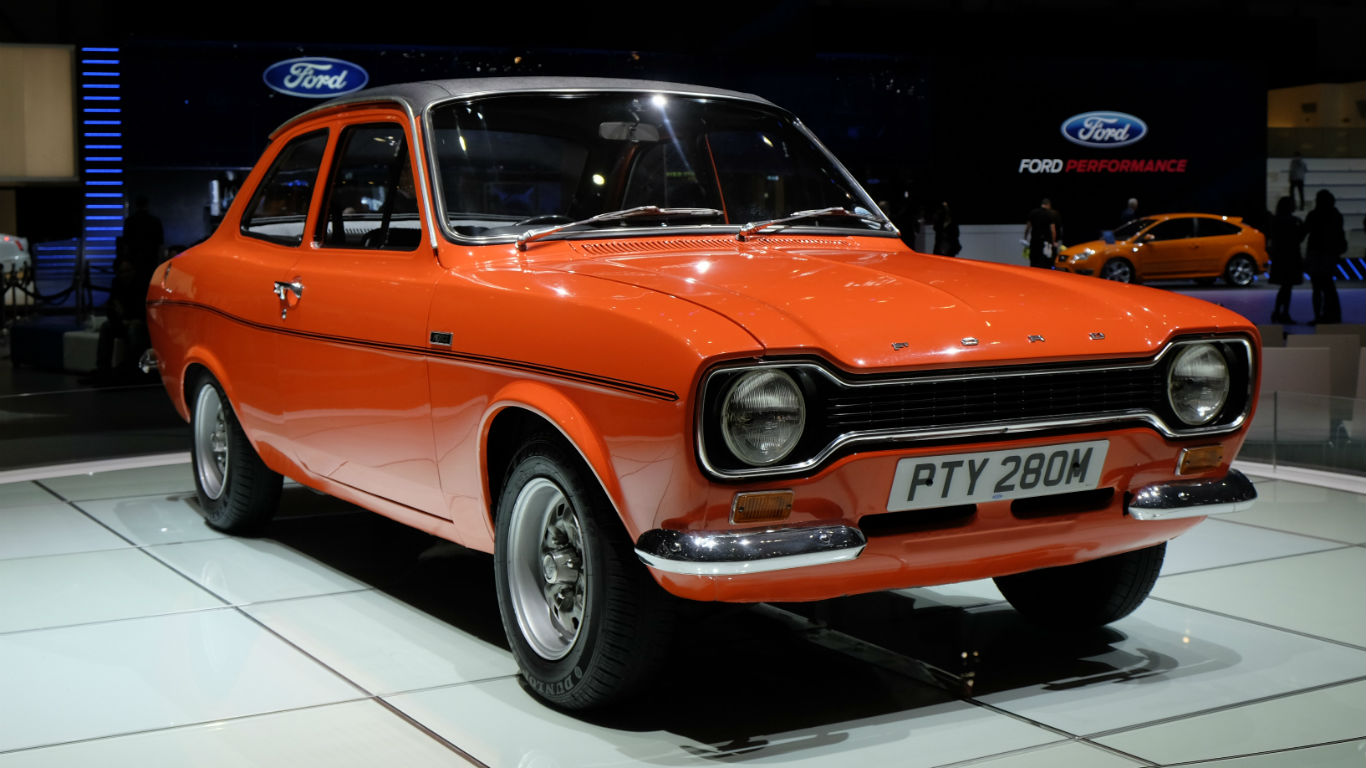 Ford wanted to capitalise on the Escort’s hard-fought win in the 1970 London-to-Mexico rally. Thus, the Escort Mexico was born, with wide wheels, sporty graphics and a perky 87hp engine.
Ford wanted to capitalise on the Escort’s hard-fought win in the 1970 London-to-Mexico rally. Thus, the Escort Mexico was born, with wide wheels, sporty graphics and a perky 87hp engine.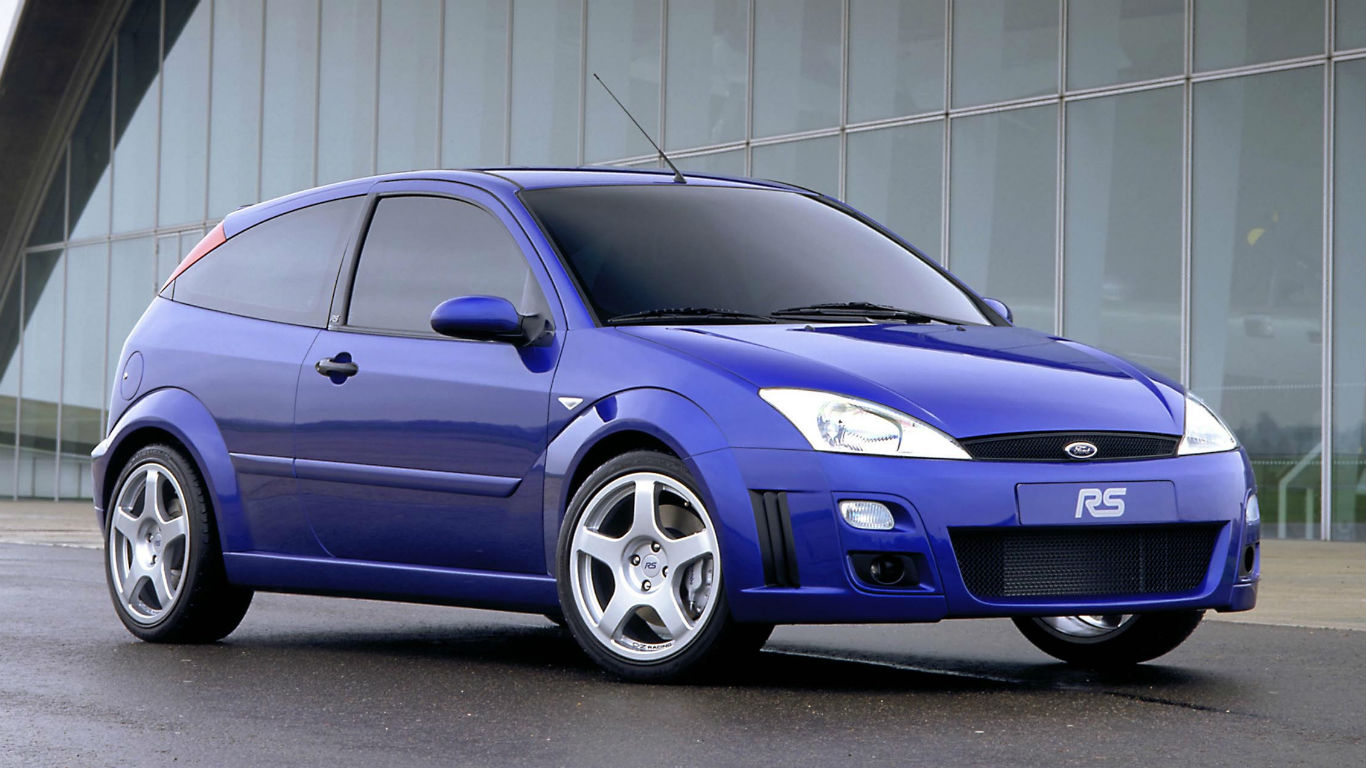 You could argue that imperfections are what give us character. And the original Focus RS isn’t lacking in either. This feisty 215hp hatchback makes you work for its rewards.
You could argue that imperfections are what give us character. And the original Focus RS isn’t lacking in either. This feisty 215hp hatchback makes you work for its rewards.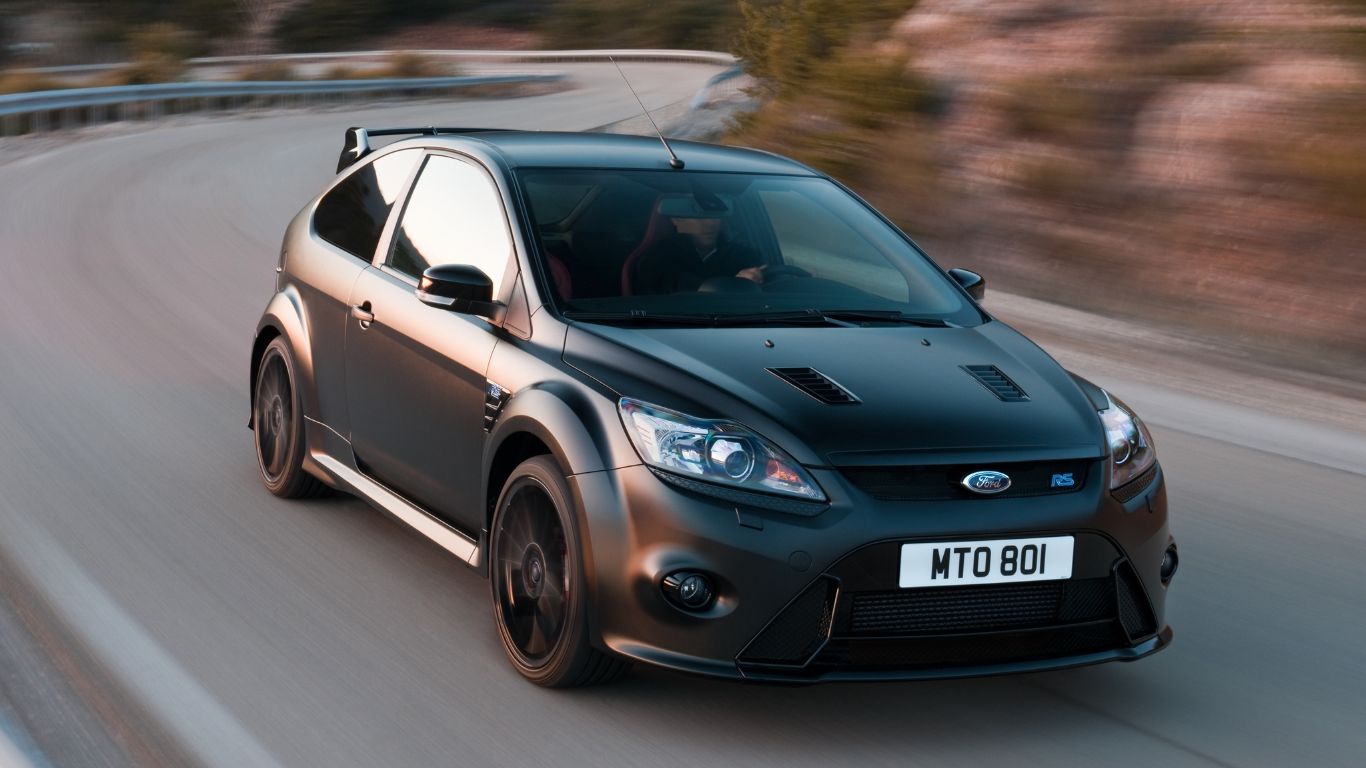 In contrast to Volkswagen’s subtle hot Golfs, the Mk2 Focus RS turned it up to 12 with bulging wheelarches, a Cossie-aping wing and optional fluorescent green paint. This is the run-out RS500 – one of 500 made.
In contrast to Volkswagen’s subtle hot Golfs, the Mk2 Focus RS turned it up to 12 with bulging wheelarches, a Cossie-aping wing and optional fluorescent green paint. This is the run-out RS500 – one of 500 made. More commonly referred to as the
More commonly referred to as the 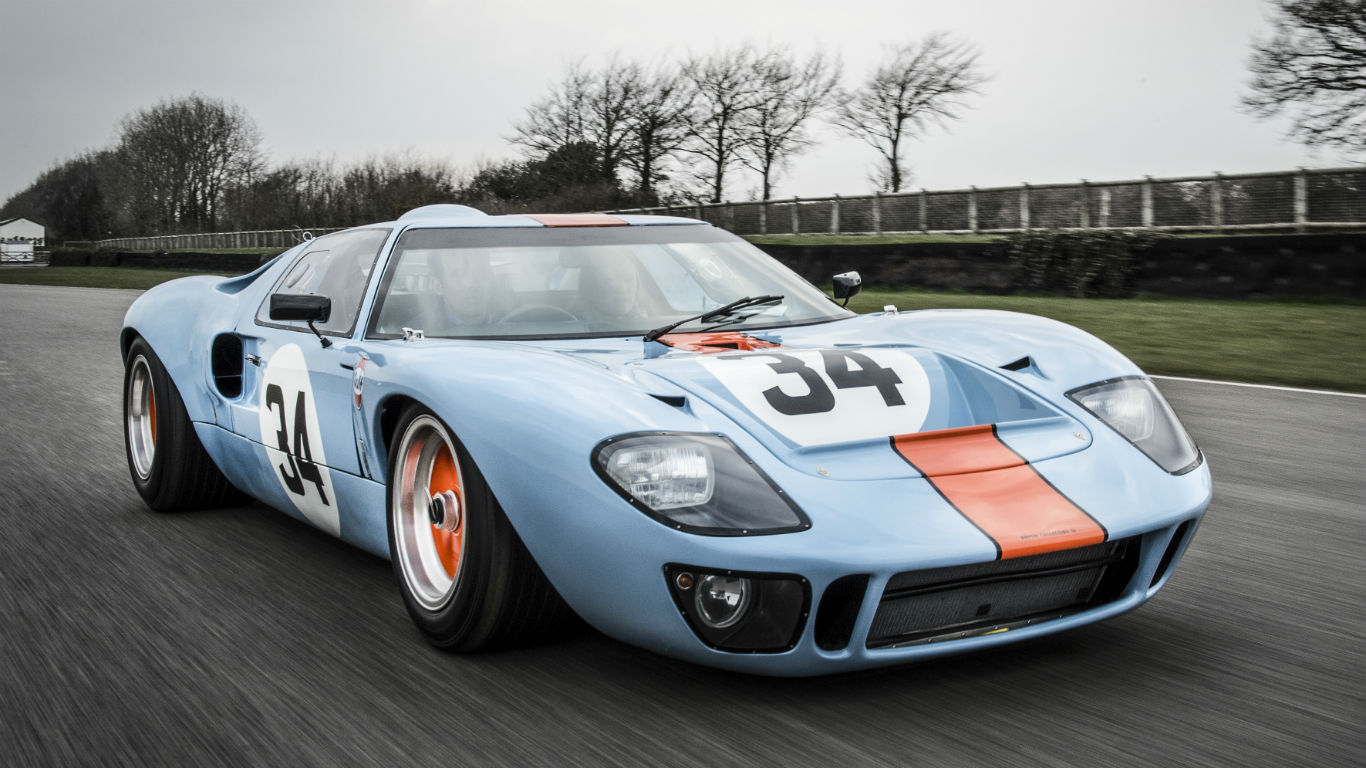 The Lamborghini Miura is widely considered to be the most beautiful car ever made. But the original Ford GT40 ran it pretty close – especially in iconic blue and orange Gulf livery.
The Lamborghini Miura is widely considered to be the most beautiful car ever made. But the original Ford GT40 ran it pretty close – especially in iconic blue and orange Gulf livery. 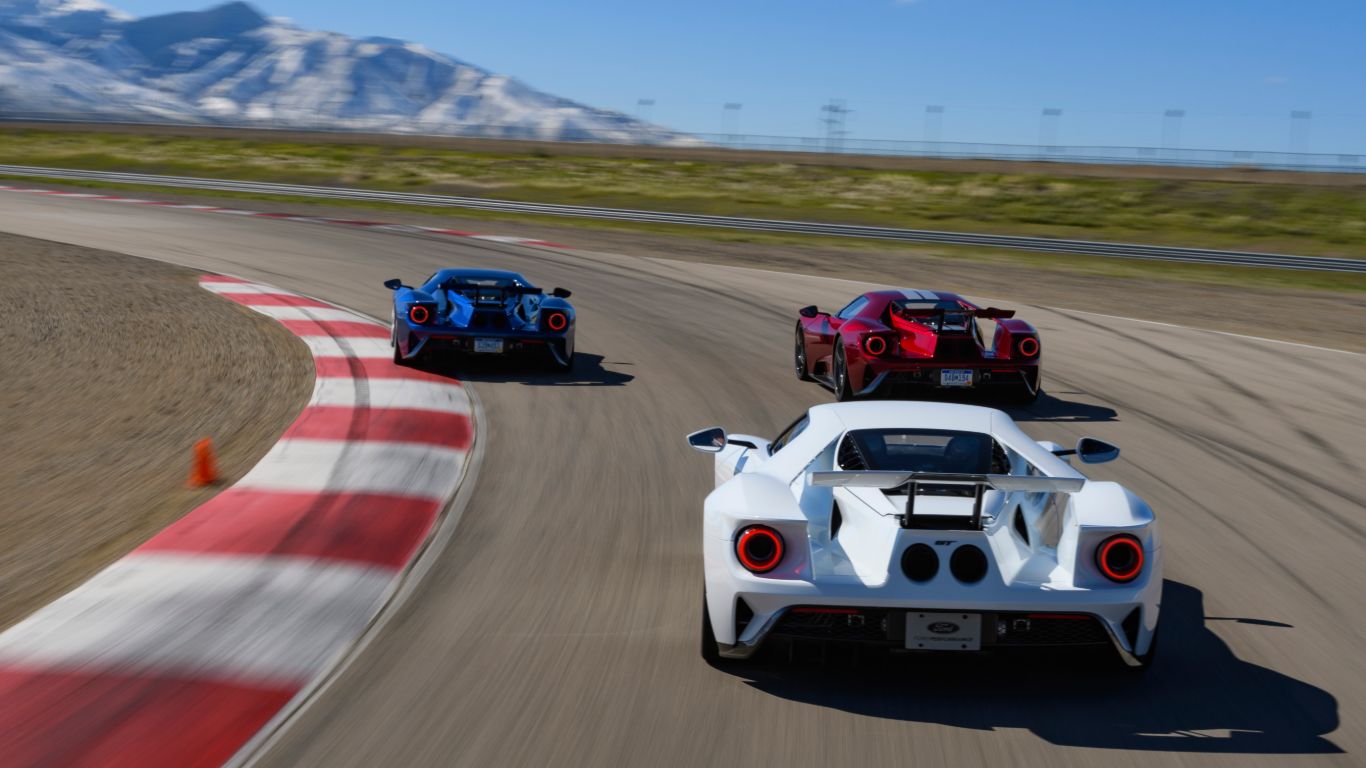 How do you follow one of the best looking cars ever made? With a car that looks very similar, of course. Ford has built two subsequent generations of GT. This is the latest model, which finished first at Le Mans in the LMGTE Pro class – exactly 50 years after Ford’s 1966 triumph.
How do you follow one of the best looking cars ever made? With a car that looks very similar, of course. Ford has built two subsequent generations of GT. This is the latest model, which finished first at Le Mans in the LMGTE Pro class – exactly 50 years after Ford’s 1966 triumph.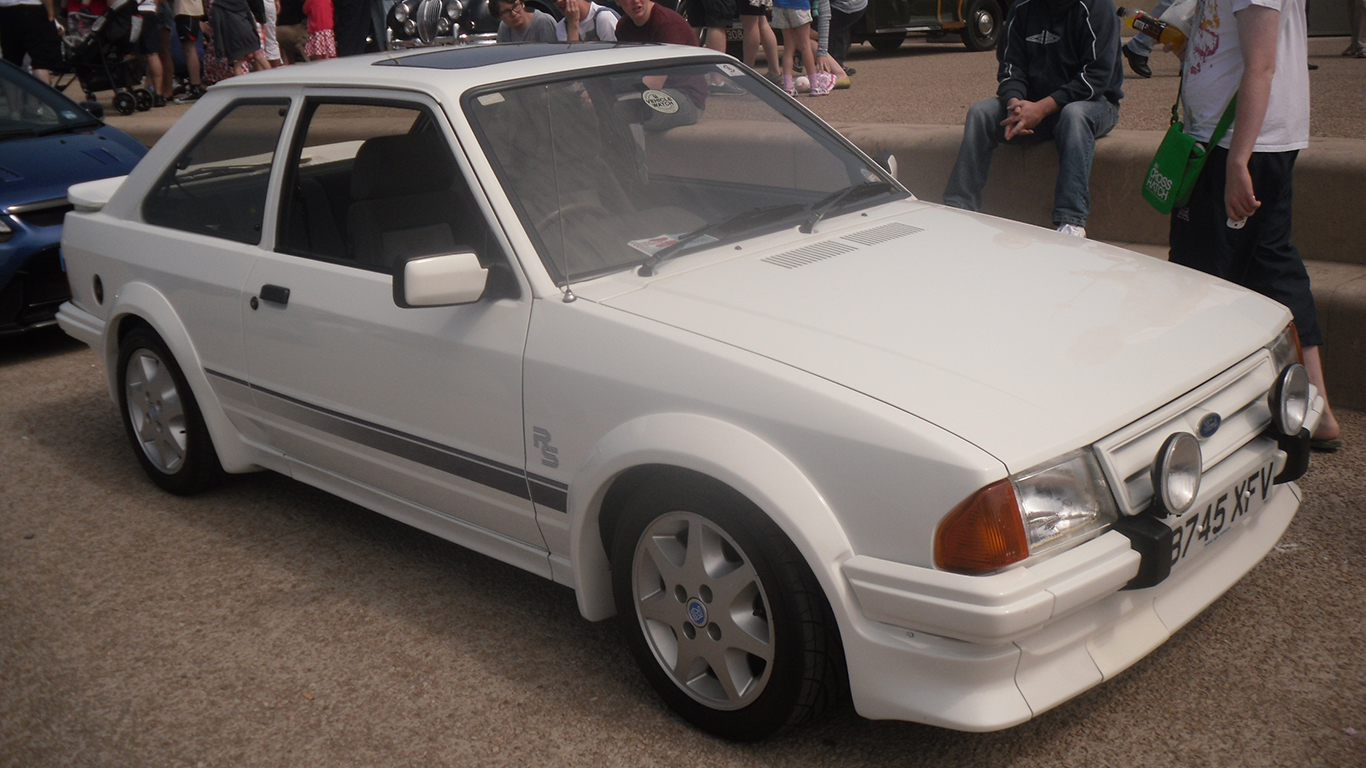 If you visited a McDonalds car park back in the 1990s, chances are you’ll have seen one of these. Fast and flash, the 134hp Escort RS Turbo ticked every box for budding boy racers.
If you visited a McDonalds car park back in the 1990s, chances are you’ll have seen one of these. Fast and flash, the 134hp Escort RS Turbo ticked every box for budding boy racers.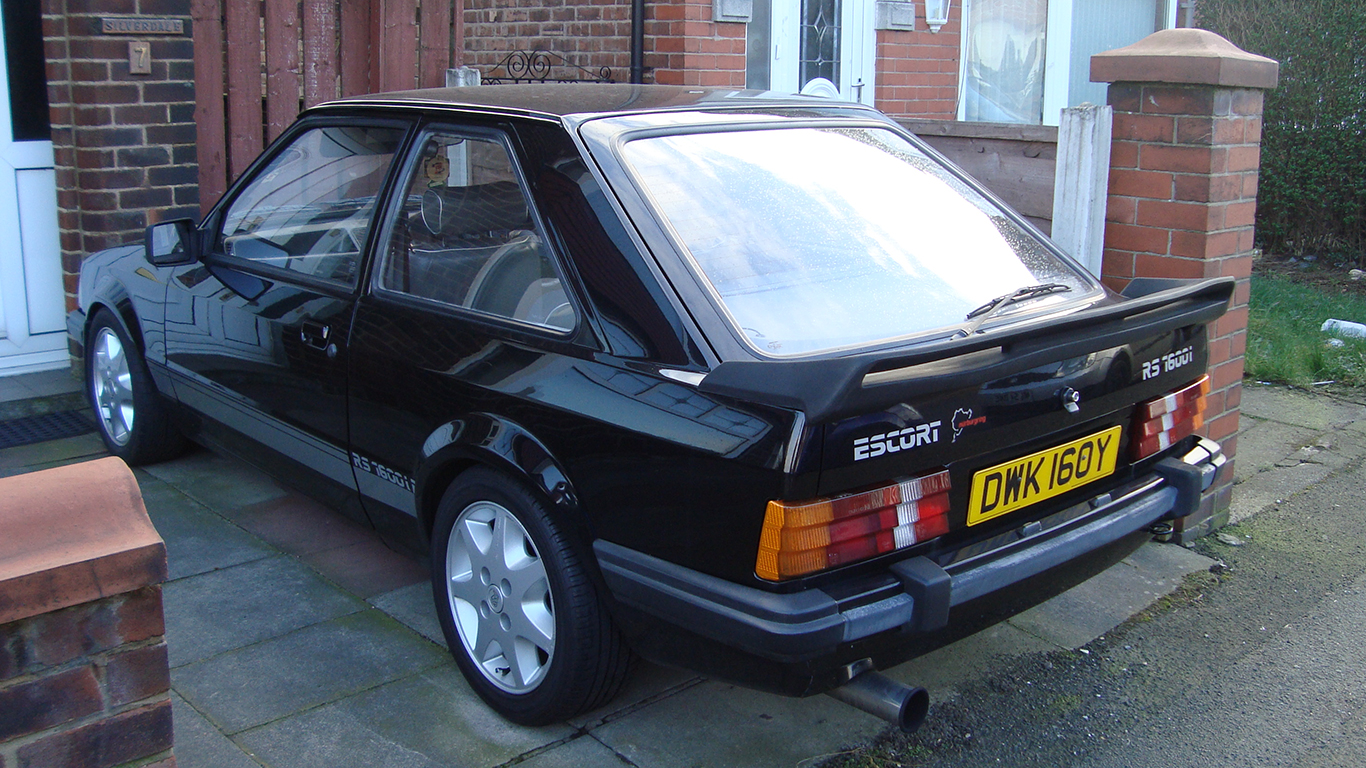 The 115hp RS 1600i isn’t as quick as the RS Turbo. But what it lacks in power, it makes up for in cool factor. Only 8,569 were made, and few survive, earning this Escort maximum points from Ford fanboys.
The 115hp RS 1600i isn’t as quick as the RS Turbo. But what it lacks in power, it makes up for in cool factor. Only 8,569 were made, and few survive, earning this Escort maximum points from Ford fanboys.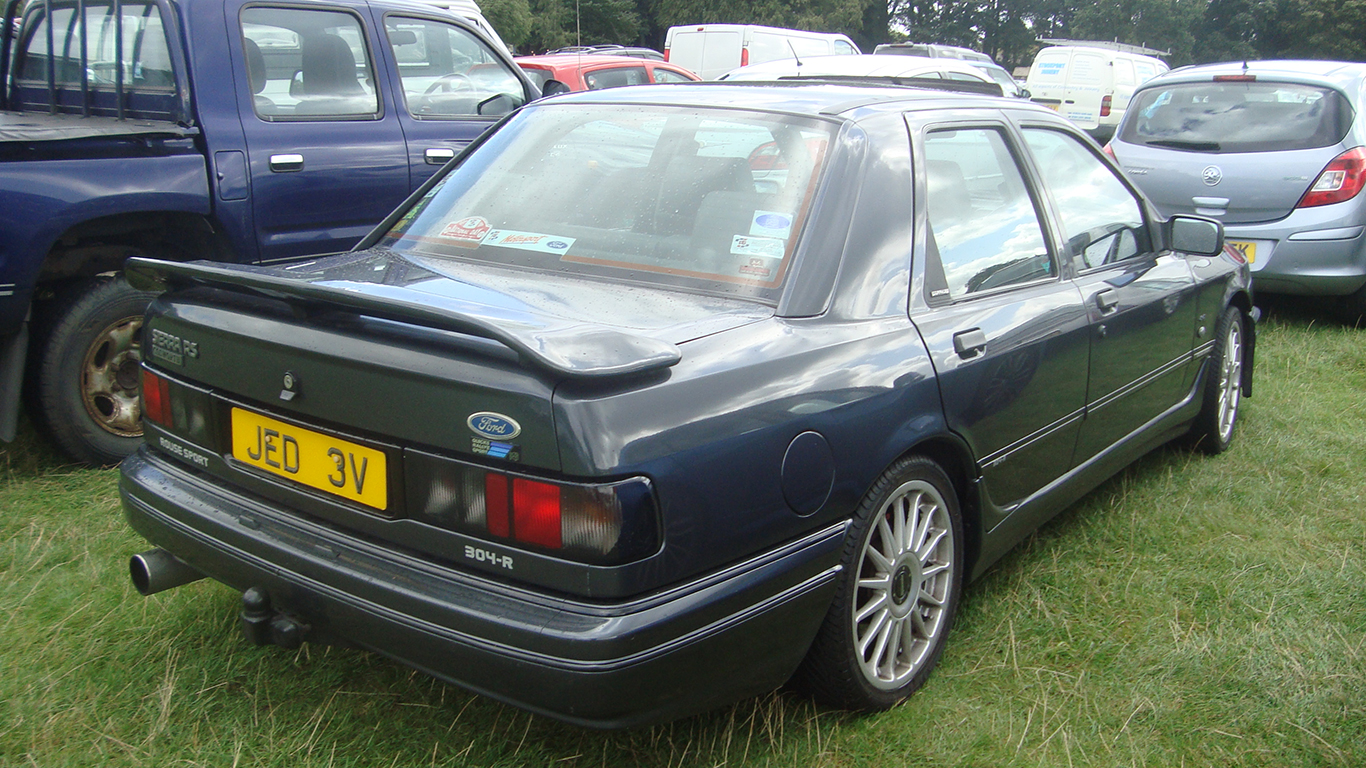 The Sierra Sapphire looks subtle by fast Ford standards and doesn’t have the cult status of its three-door cousin. That makes it more affordable to buy used, especially compared to BMW M3s and Mercedes-Benz 190s of the same era.
The Sierra Sapphire looks subtle by fast Ford standards and doesn’t have the cult status of its three-door cousin. That makes it more affordable to buy used, especially compared to BMW M3s and Mercedes-Benz 190s of the same era.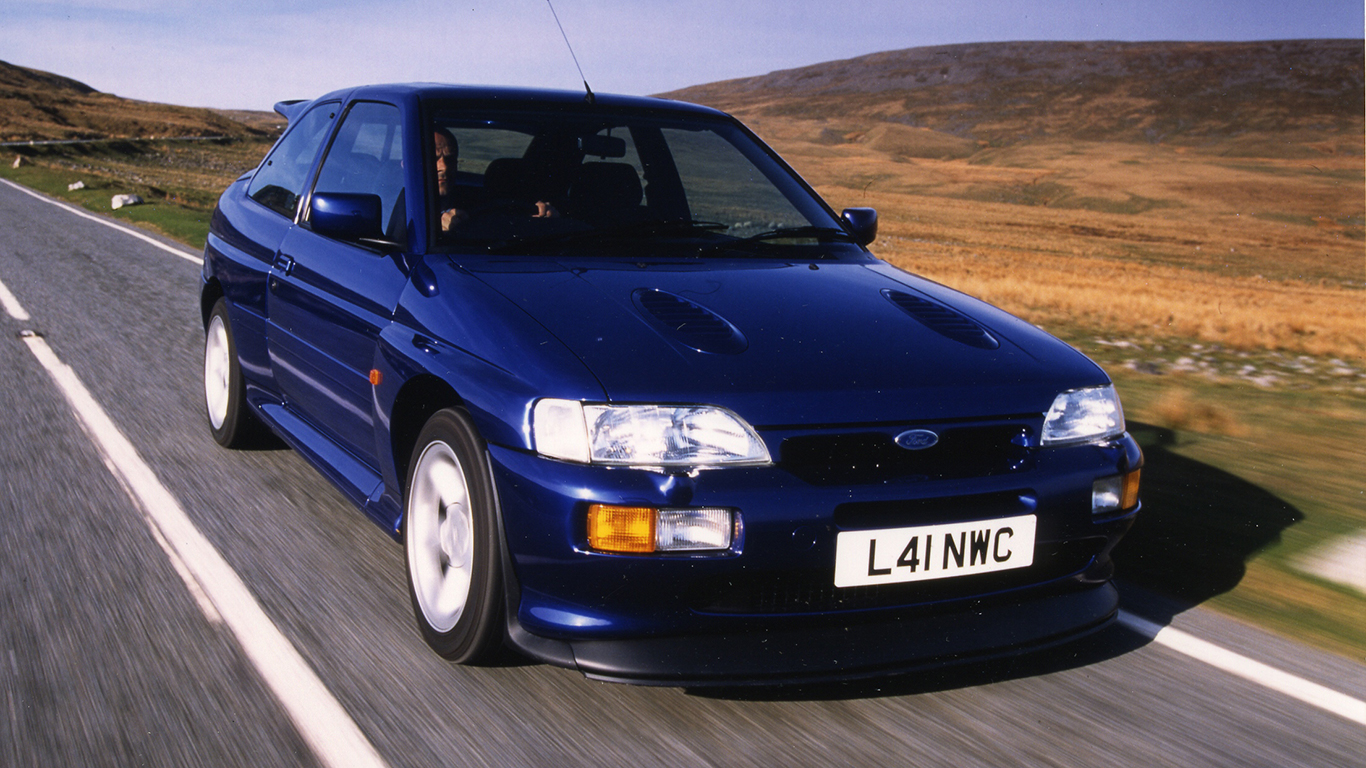 Nope, nothing low-key about this one. The ultimate Escort resurrected the Boeing-spec rear wing of the
Nope, nothing low-key about this one. The ultimate Escort resurrected the Boeing-spec rear wing of the 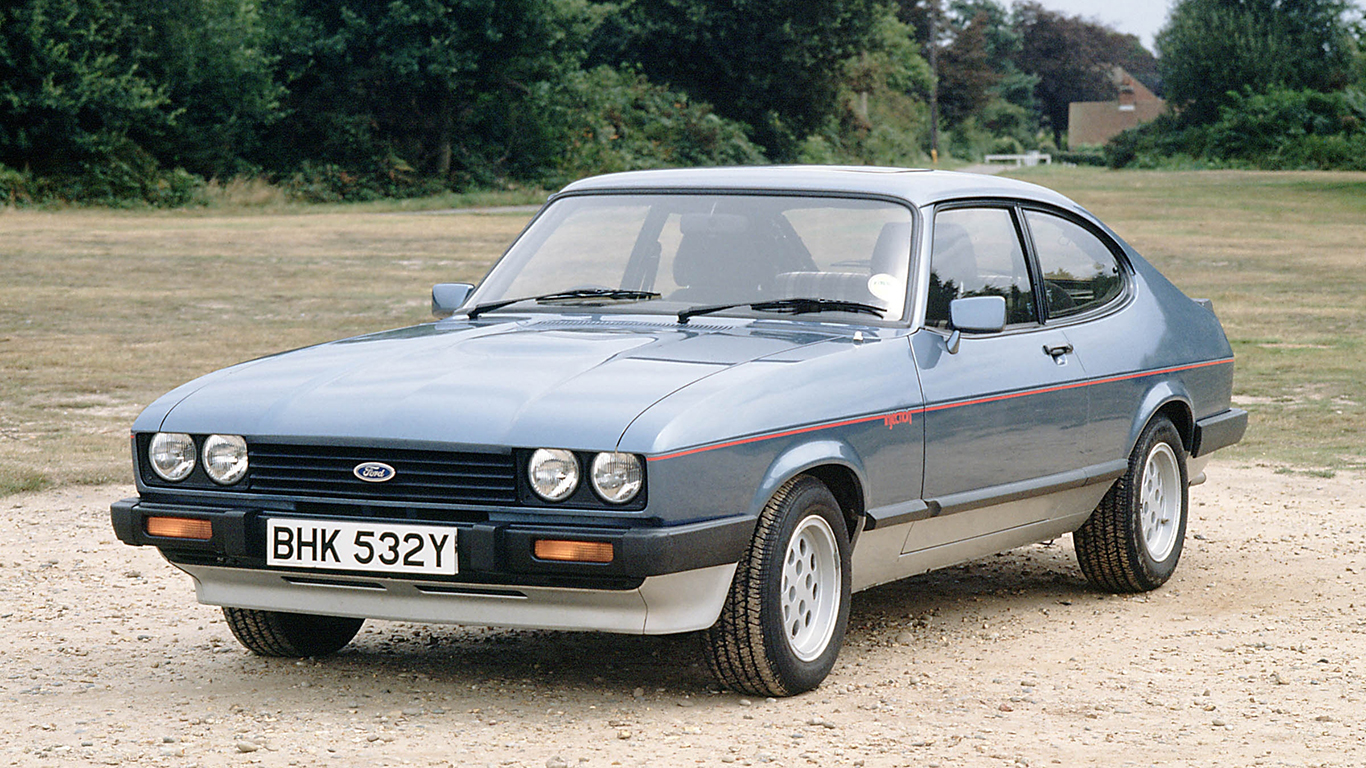 Most versions of the Capri don’t merit the title ‘fast Ford’, but the 162hp 2.8i is decently quick. Ford’s Special Vehicle Engineering department also tweaked the suspension for better handling.
Most versions of the Capri don’t merit the title ‘fast Ford’, but the 162hp 2.8i is decently quick. Ford’s Special Vehicle Engineering department also tweaked the suspension for better handling. The 2020 Mustang Shelby GT500 is the most powerful road-going Ford ever. Its 5.2-litre supercharged V8, produces 760hp and 625 lb ft of torque – more than the GT supercar.
The 2020 Mustang Shelby GT500 is the most powerful road-going Ford ever. Its 5.2-litre supercharged V8, produces 760hp and 625 lb ft of torque – more than the GT supercar.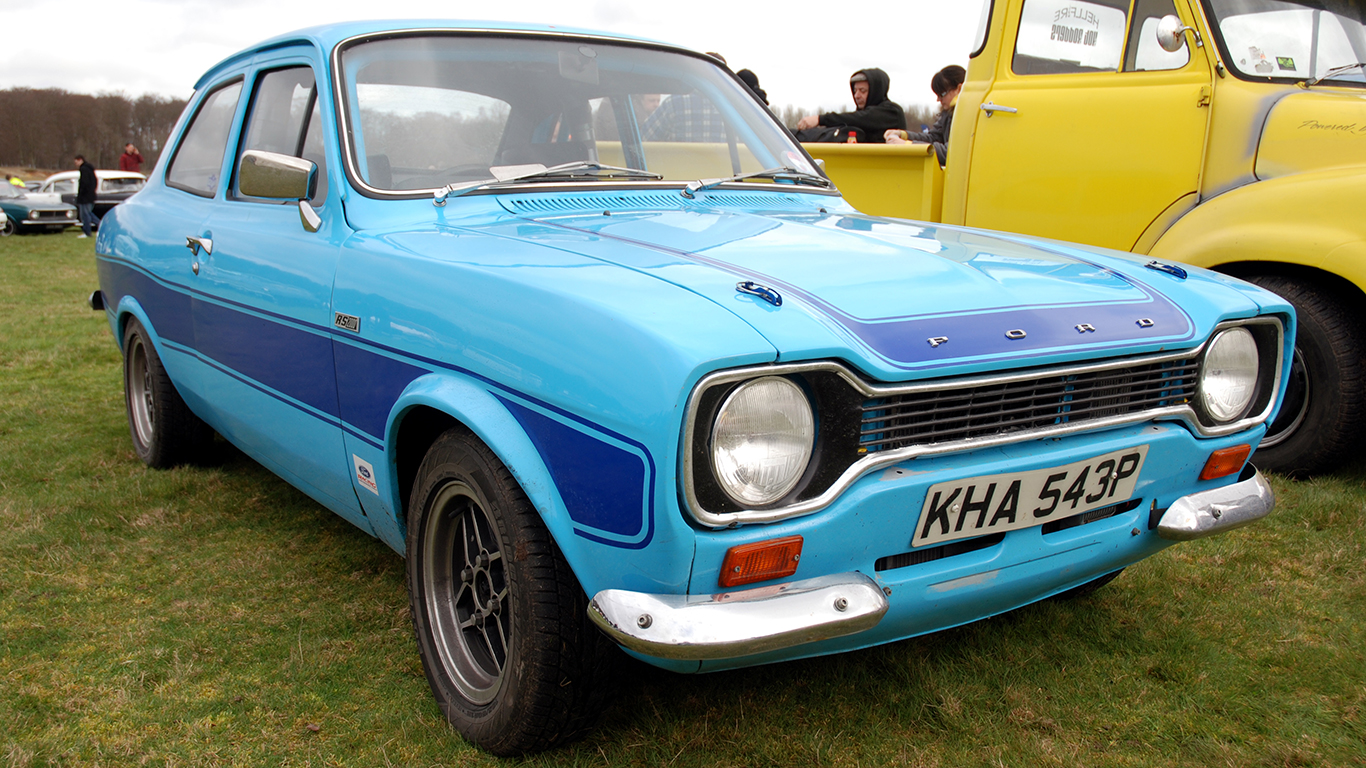 Not to be confused with the Mk5 RS2000 of the 1990s, this early Escort is highly prized by Ford fans. A hot hatch without a hatchback, its 2.0-litre engine offers lively performance.
Not to be confused with the Mk5 RS2000 of the 1990s, this early Escort is highly prized by Ford fans. A hot hatch without a hatchback, its 2.0-litre engine offers lively performance.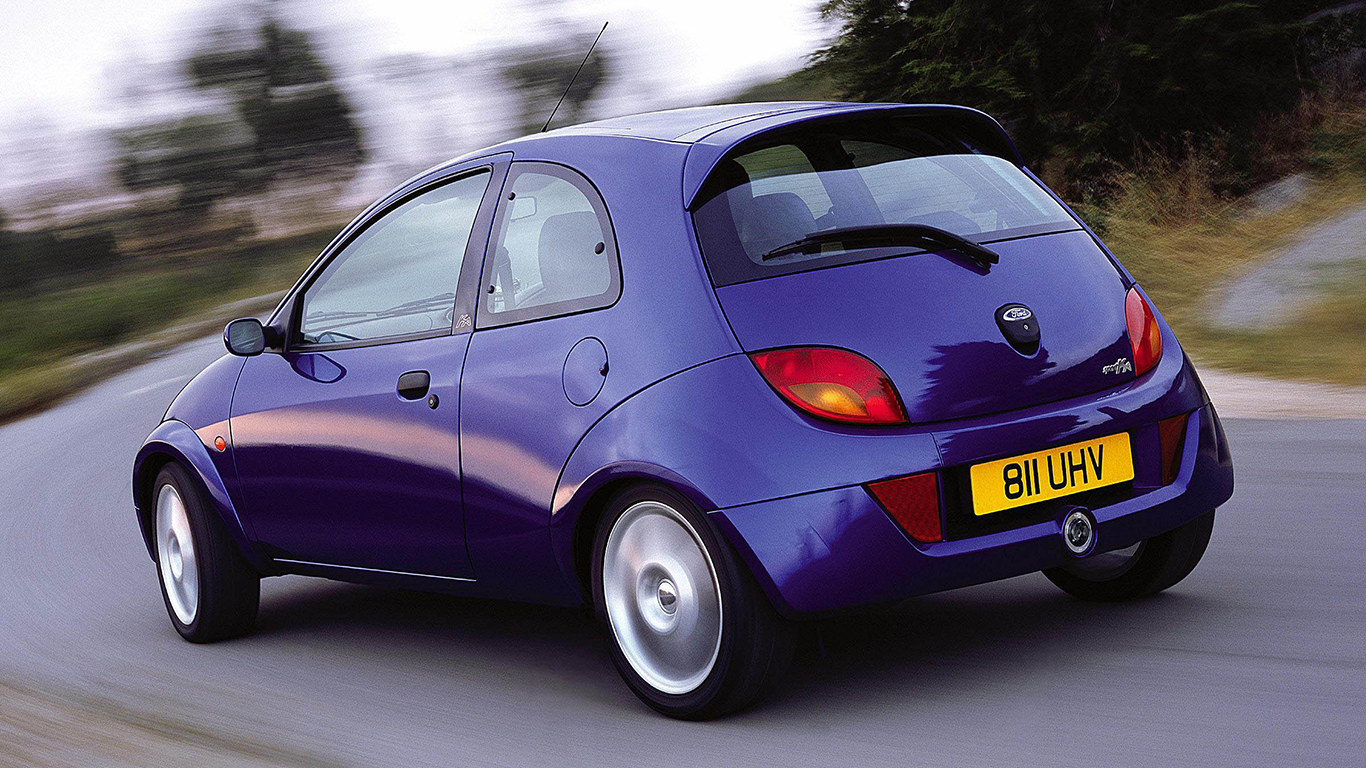 A controversial choice now. The 94hp Sportka won’t win any traffic-light grand prix, but it’s nimble and fun to drive. Its secret is suspension shared with the Puma coupe, plus sharp steering and a snappy gearbox.
A controversial choice now. The 94hp Sportka won’t win any traffic-light grand prix, but it’s nimble and fun to drive. Its secret is suspension shared with the Puma coupe, plus sharp steering and a snappy gearbox. 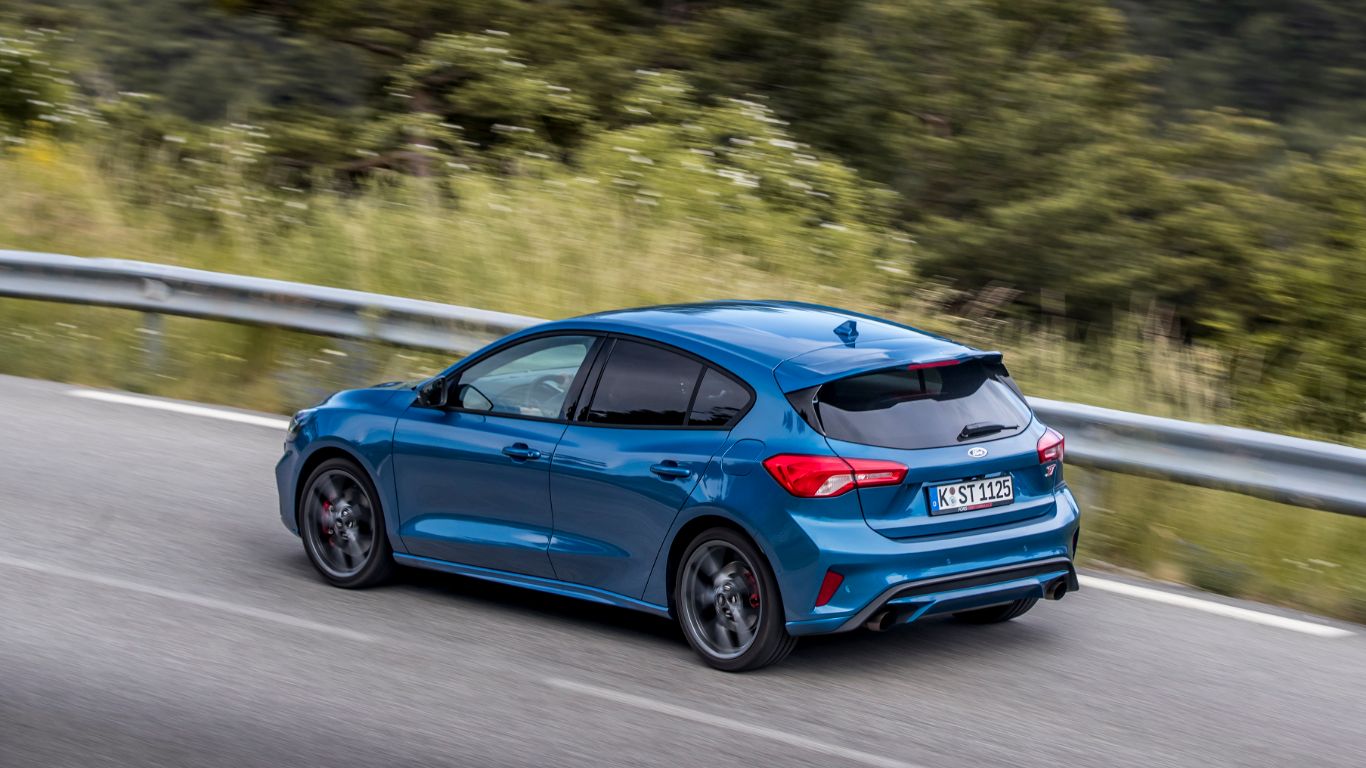
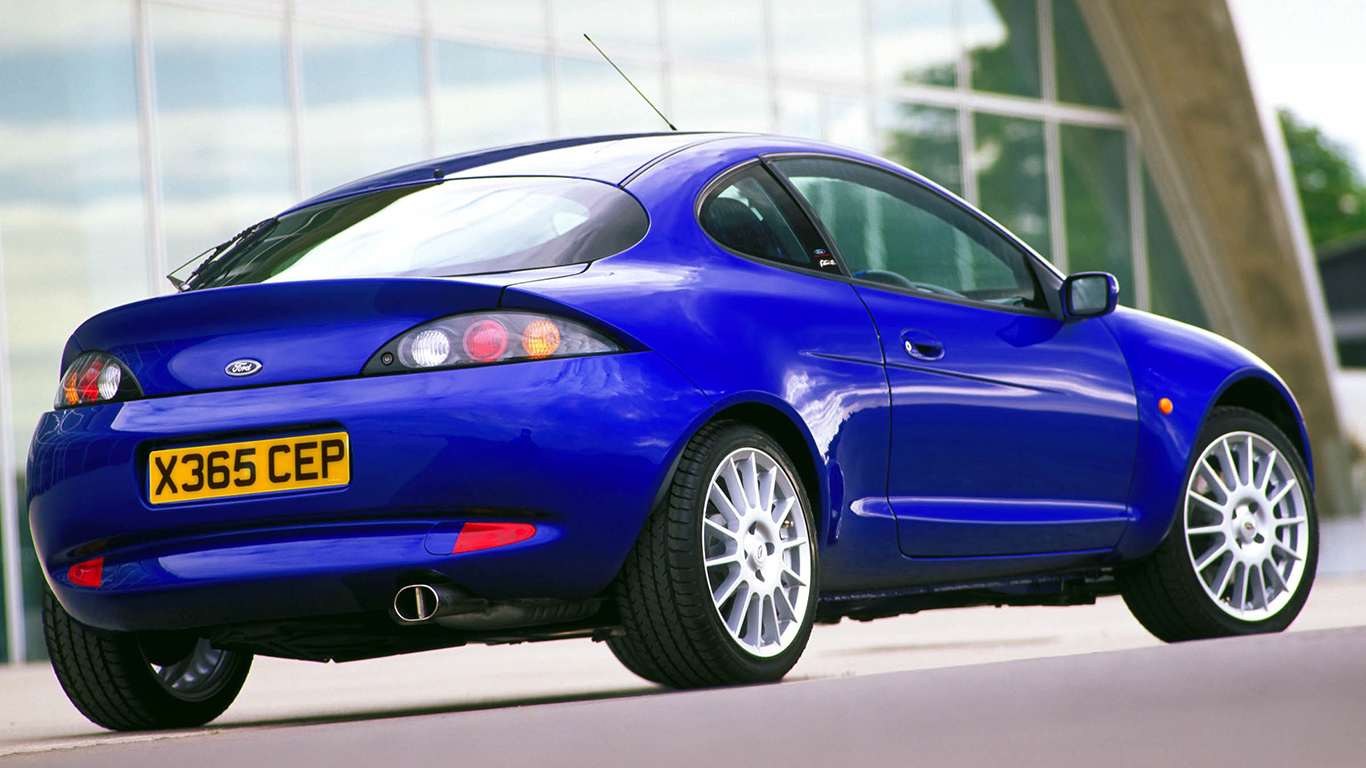 We end our smorgasbord of fast Fords with the Racing Puma. Its swollen, wide-arched bodywork was hand-built by Tickford and only 500 were made. The Puma’s 1.7-litre engine was tuned to 157hp.
We end our smorgasbord of fast Fords with the Racing Puma. Its swollen, wide-arched bodywork was hand-built by Tickford and only 500 were made. The Puma’s 1.7-litre engine was tuned to 157hp.
